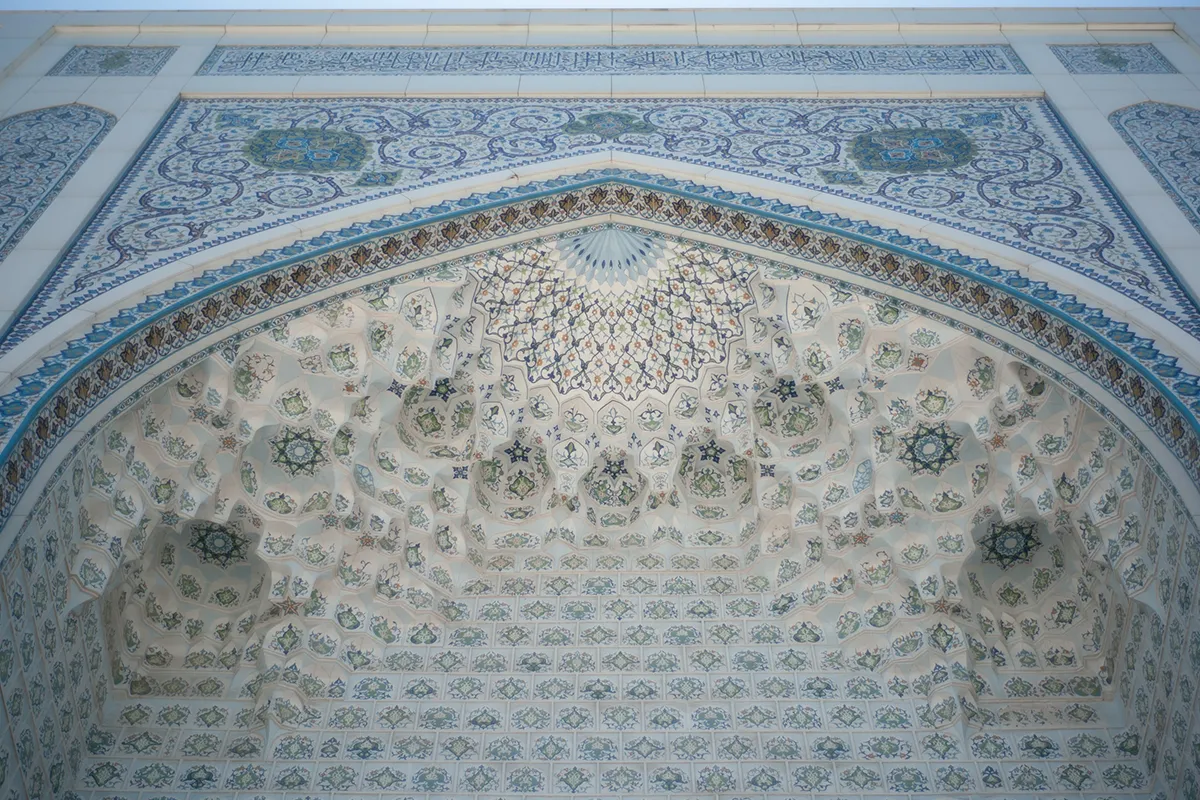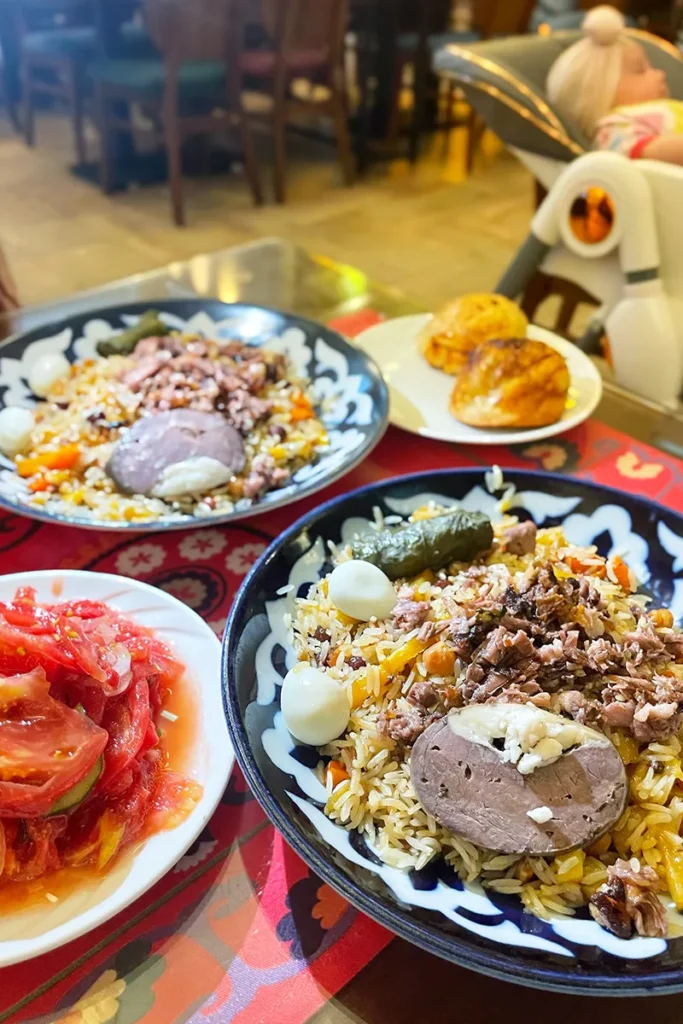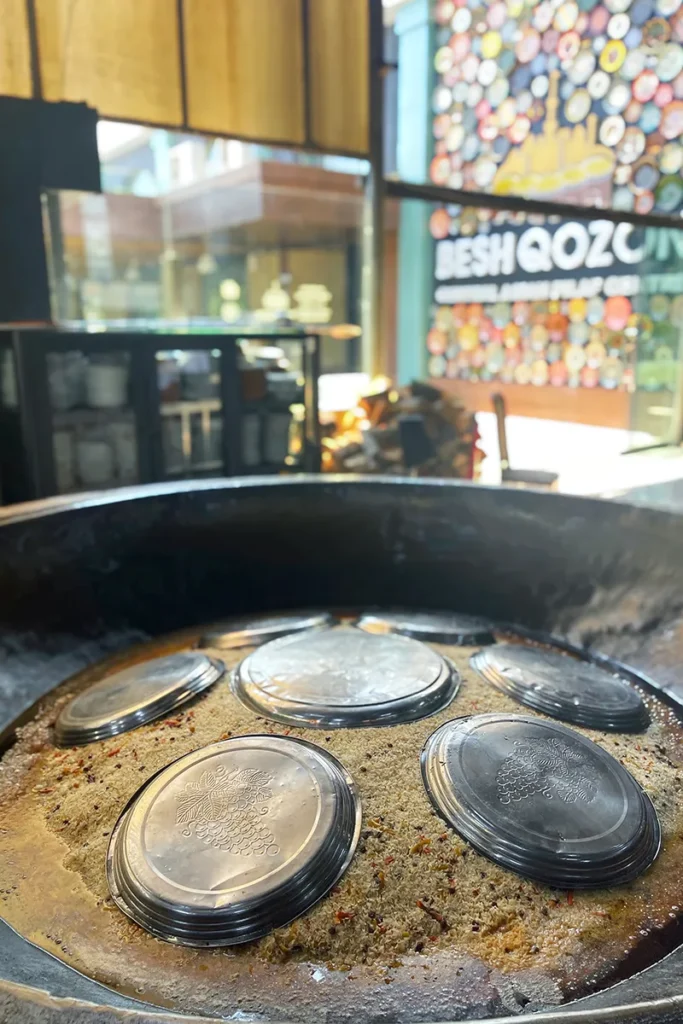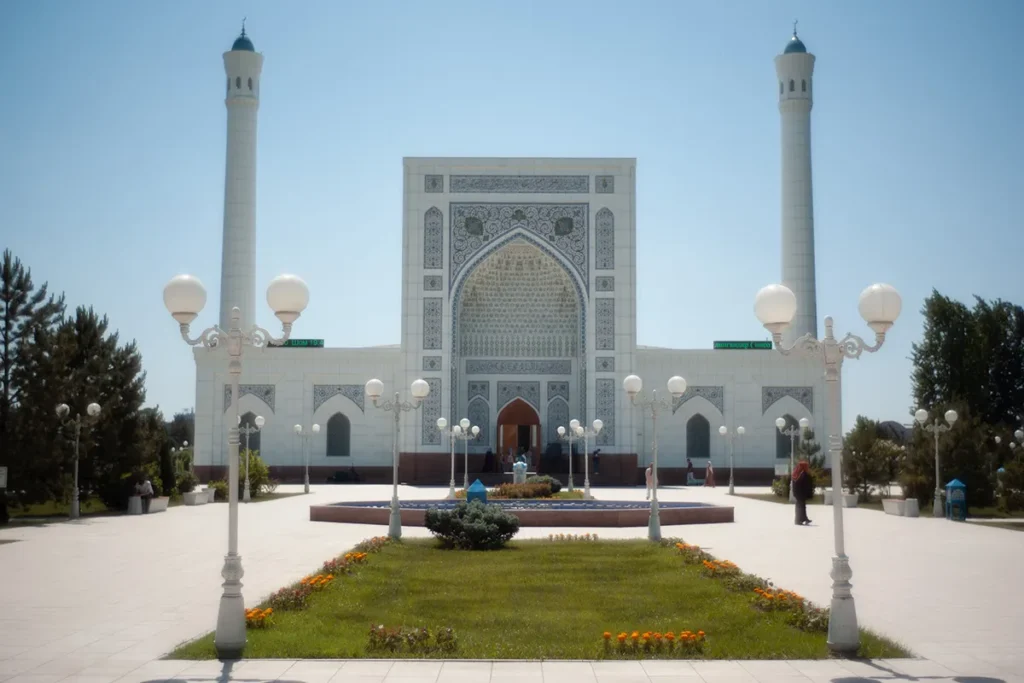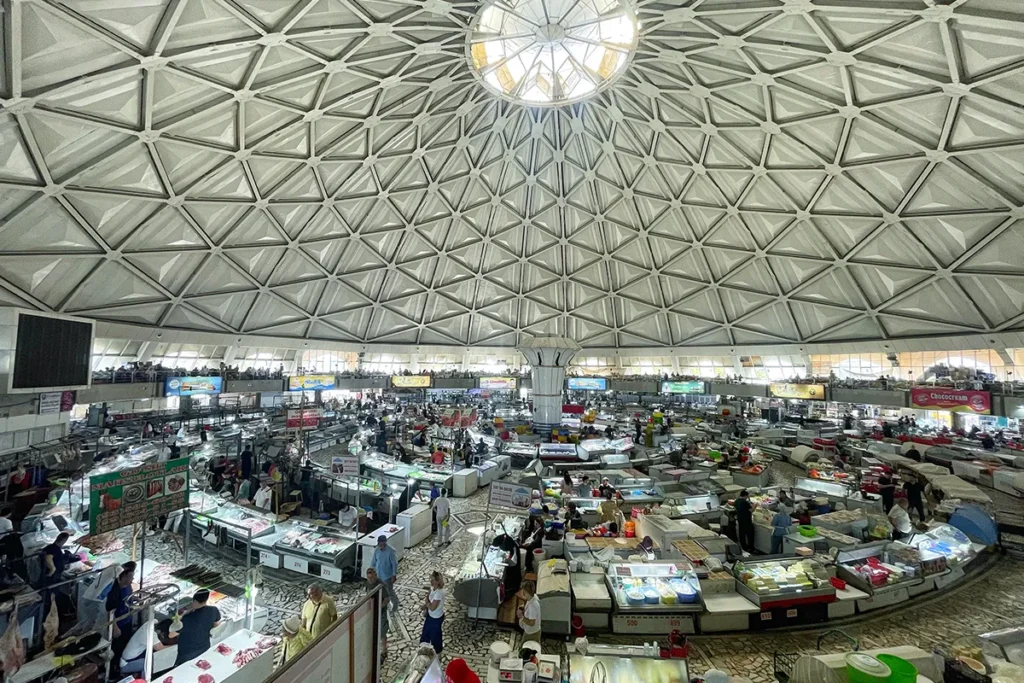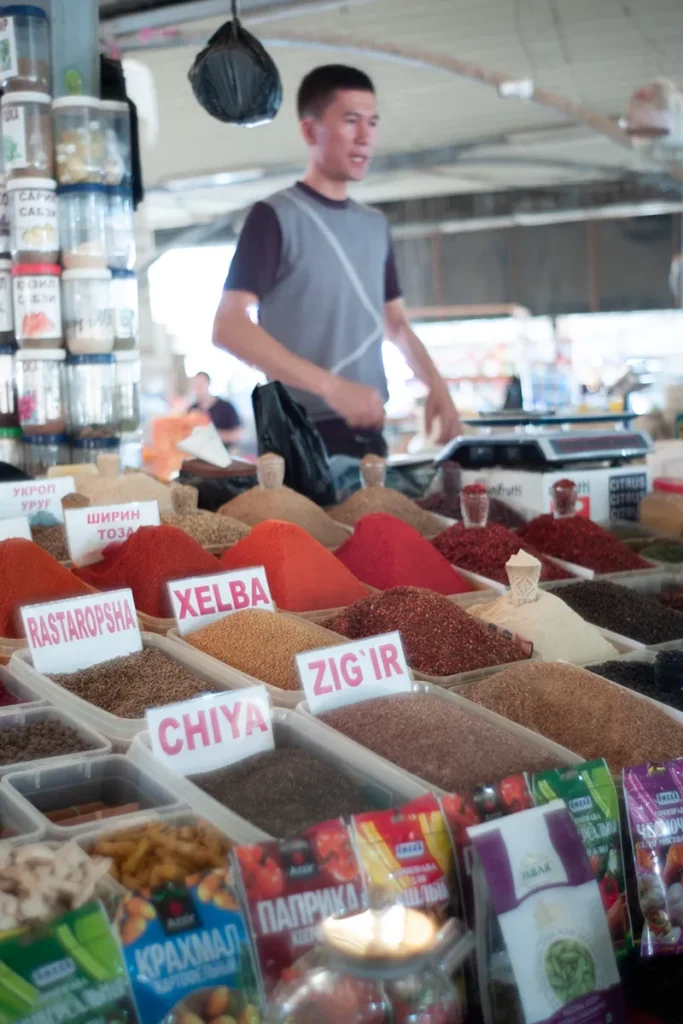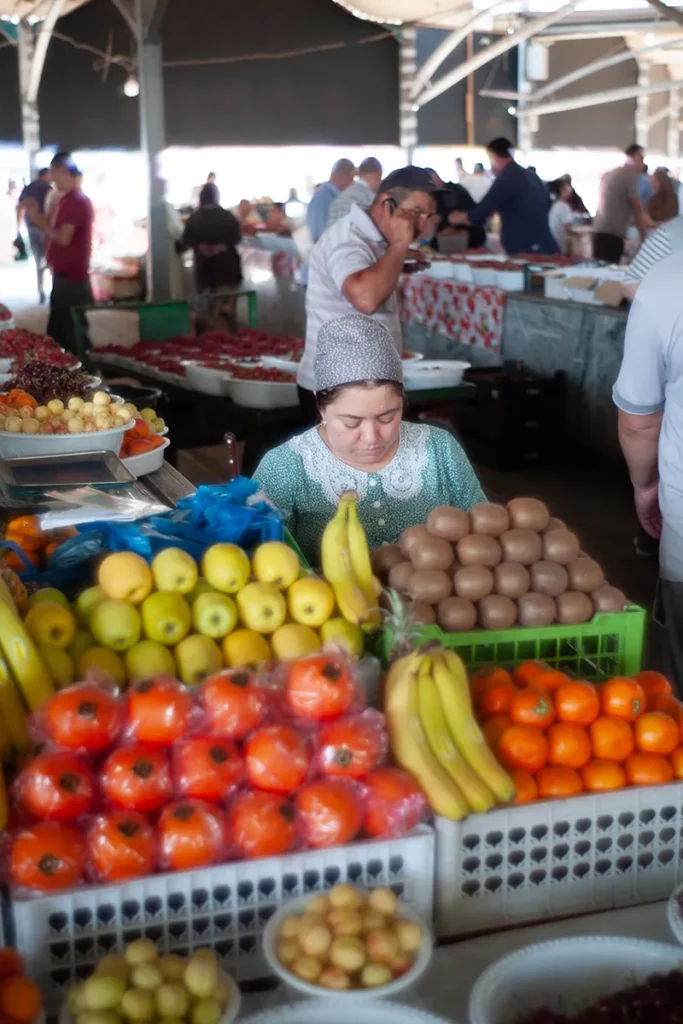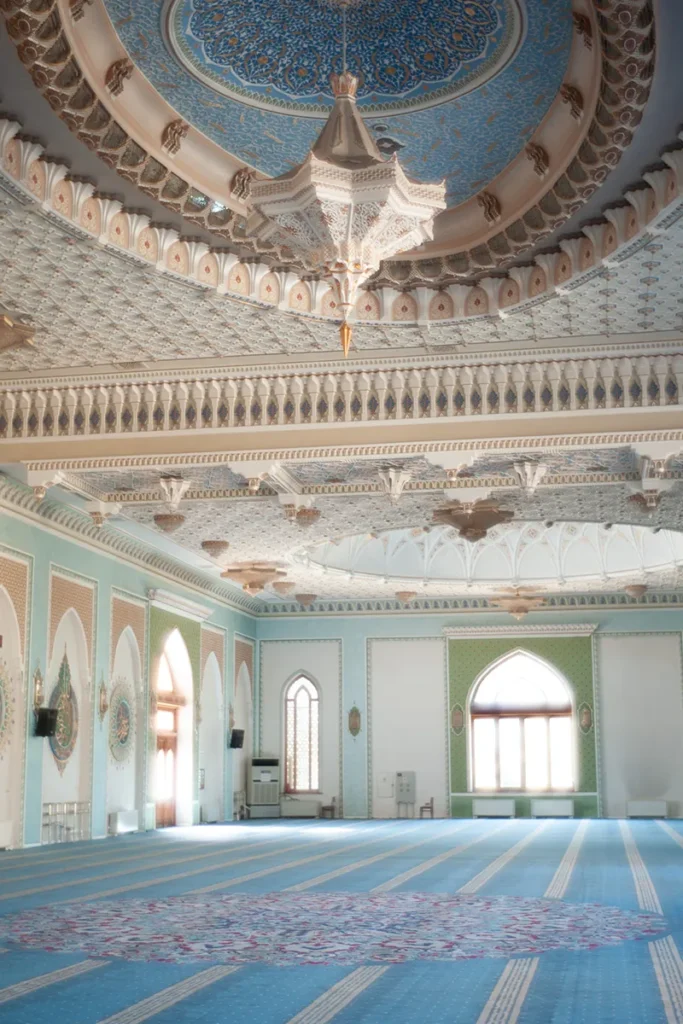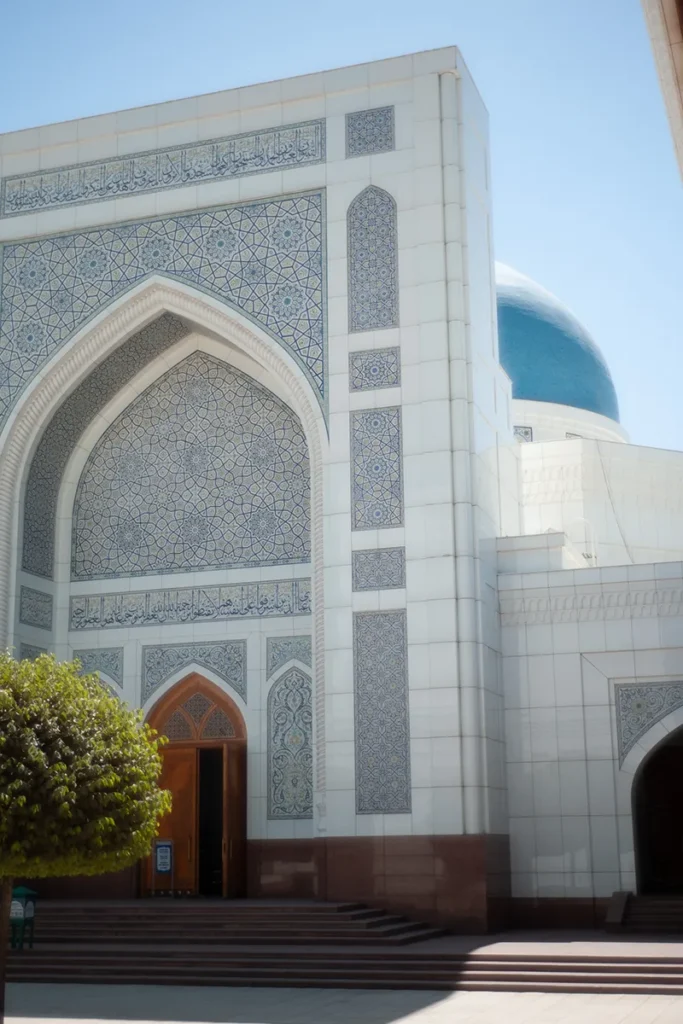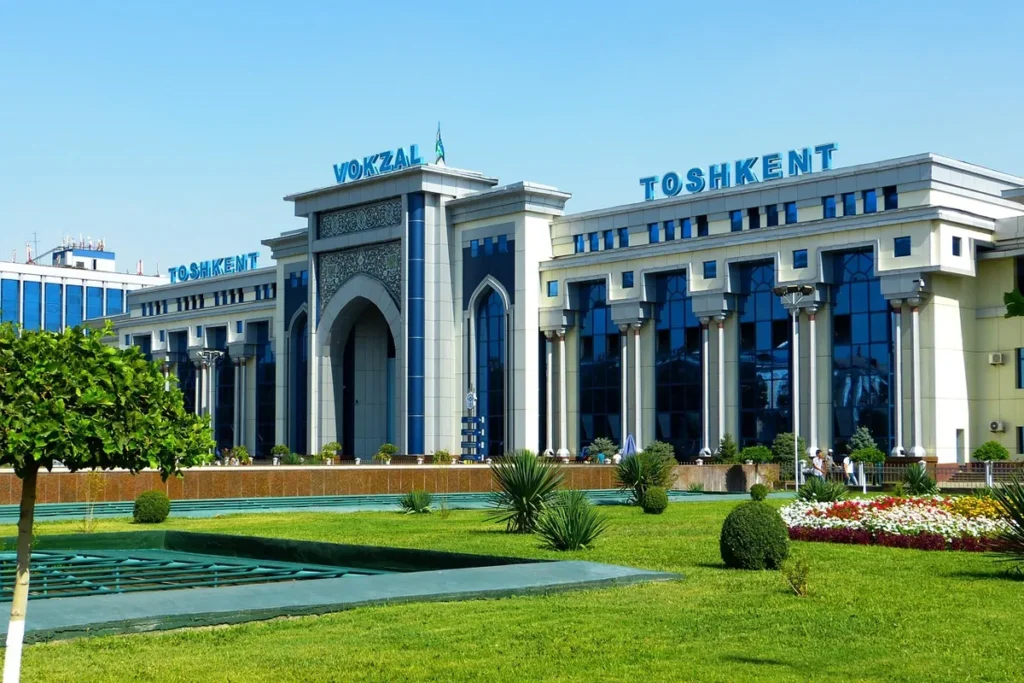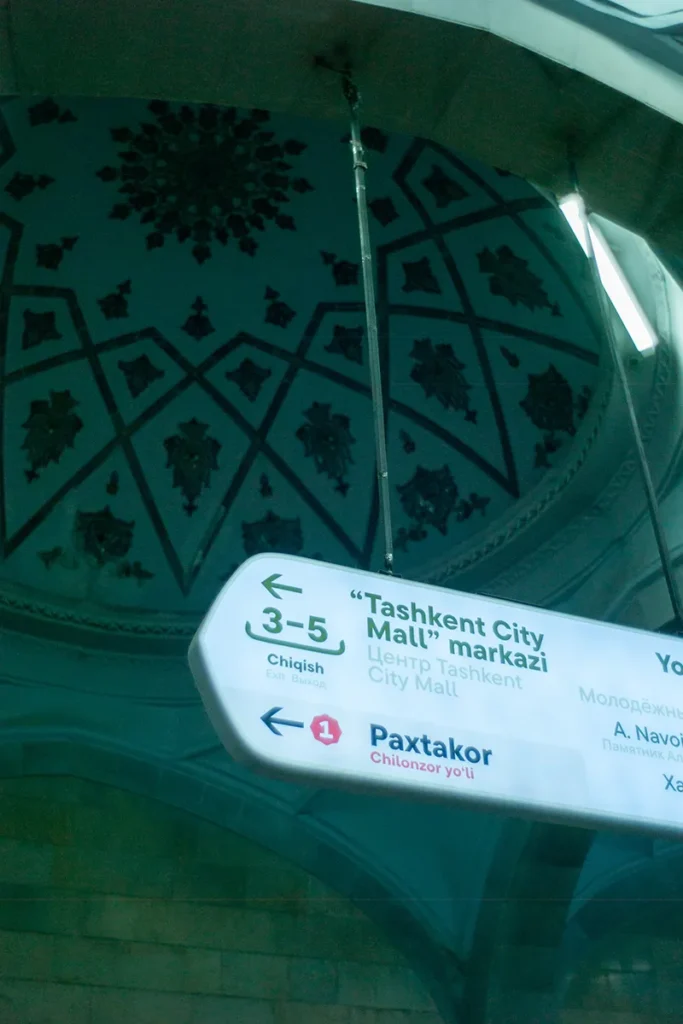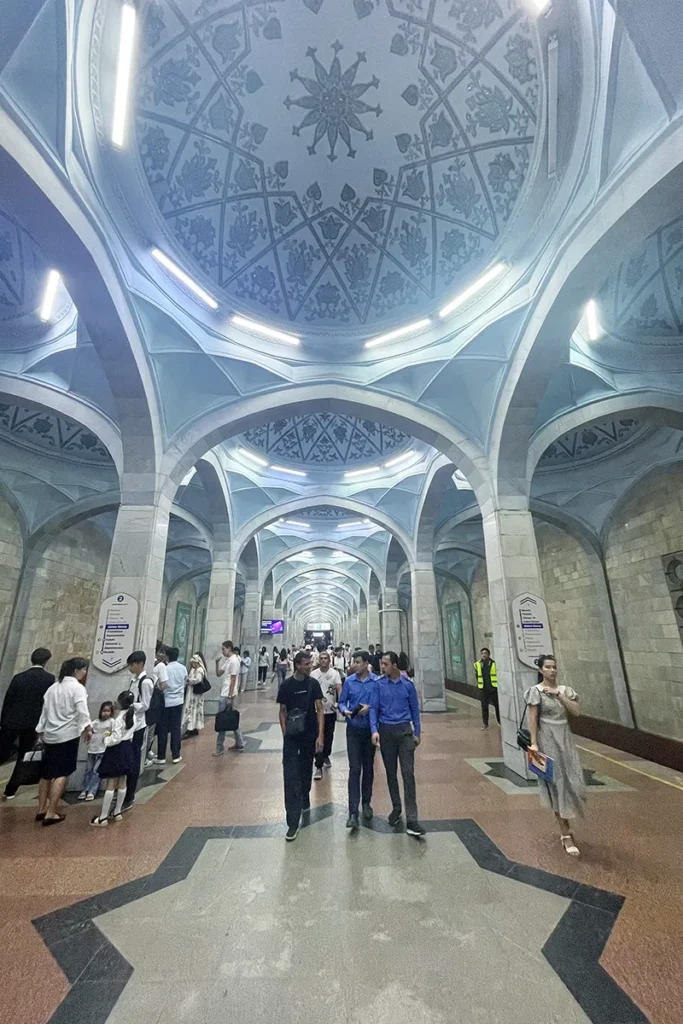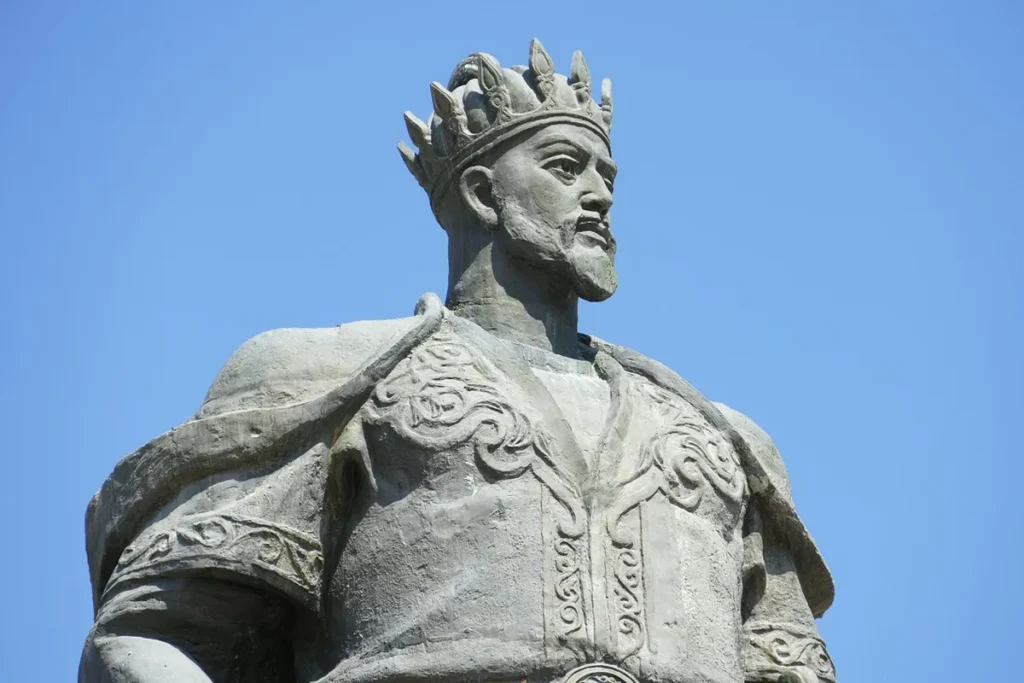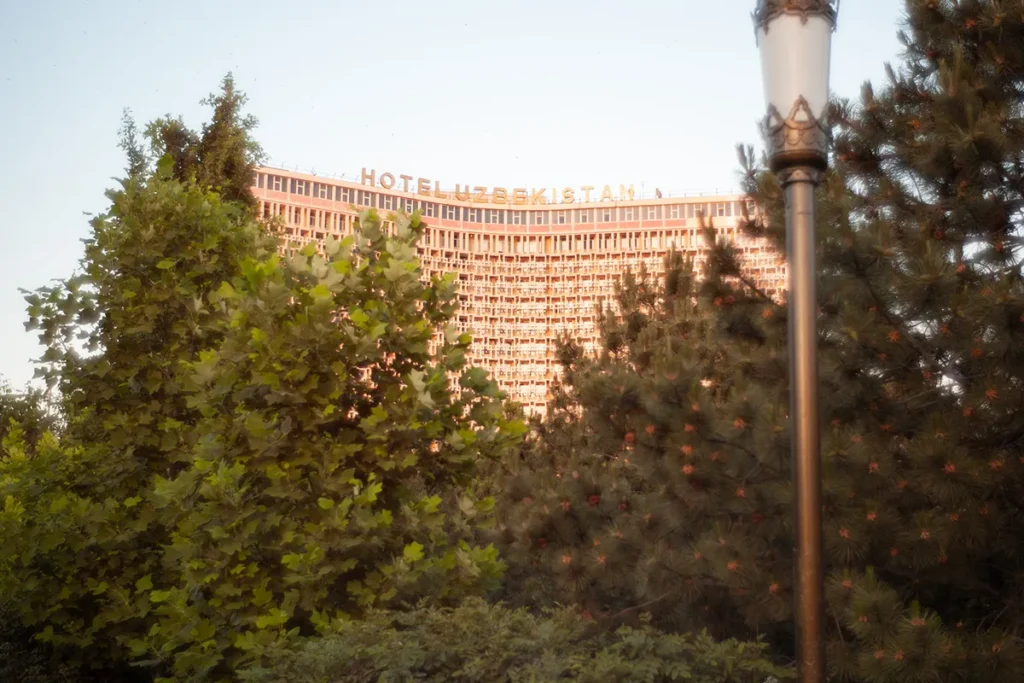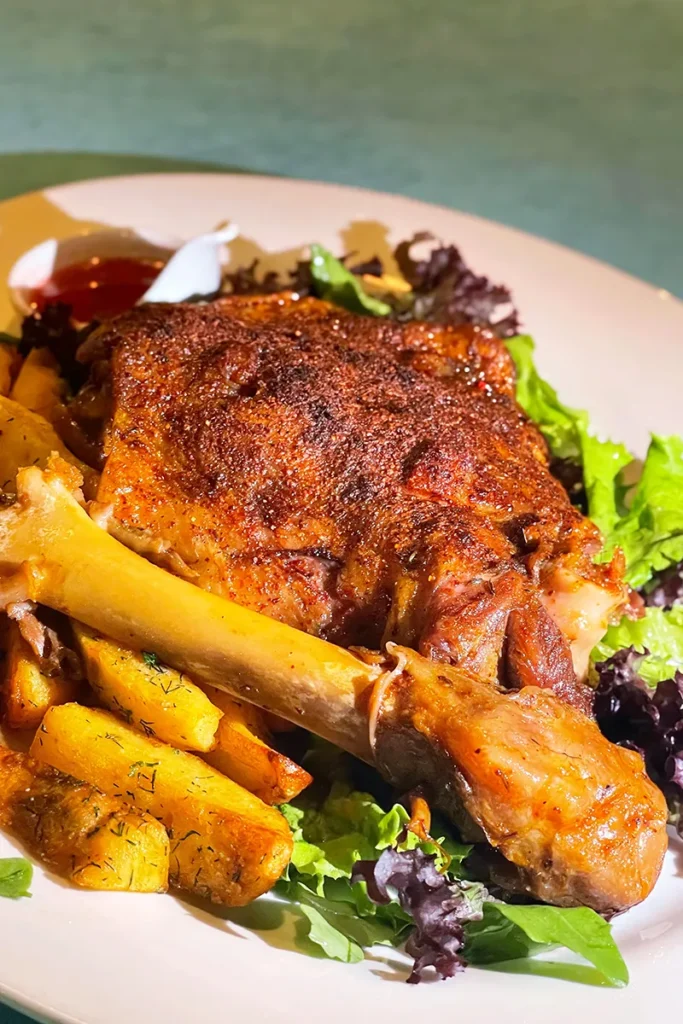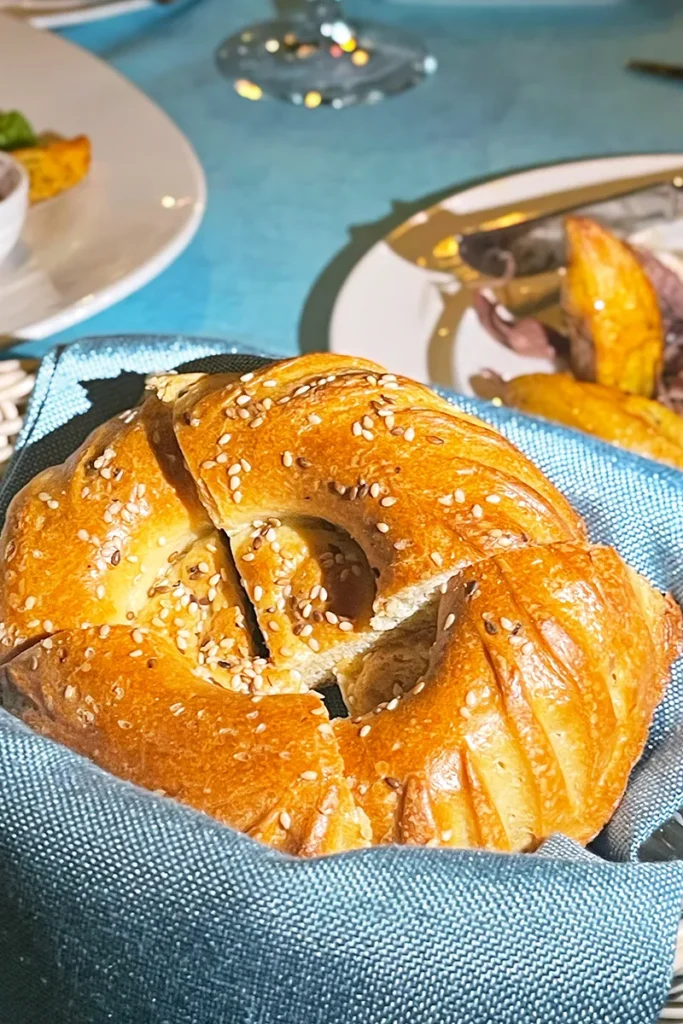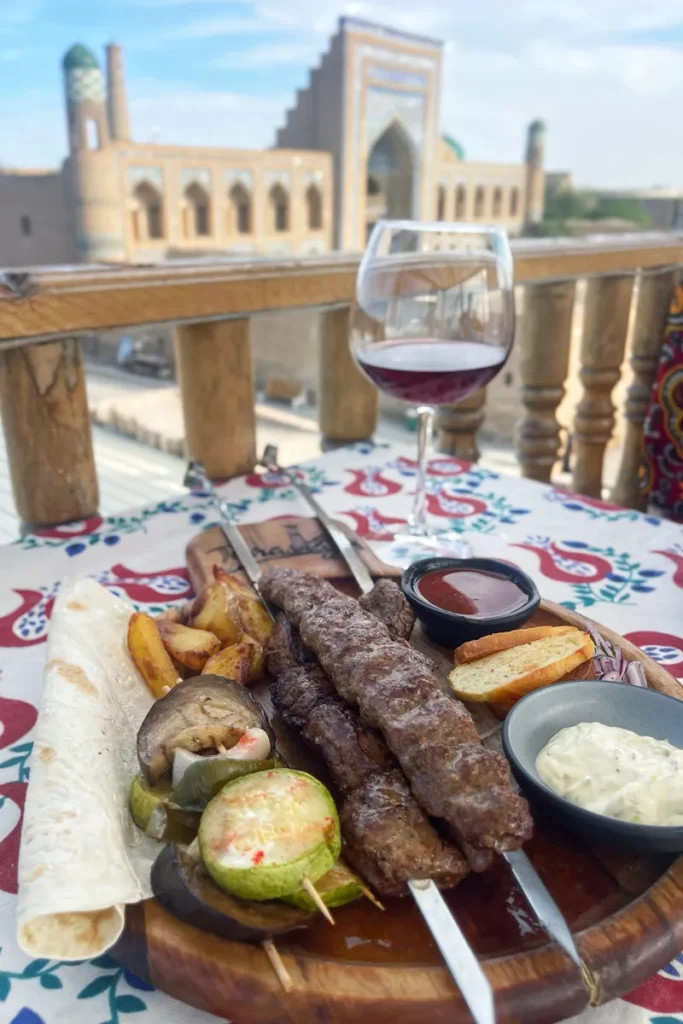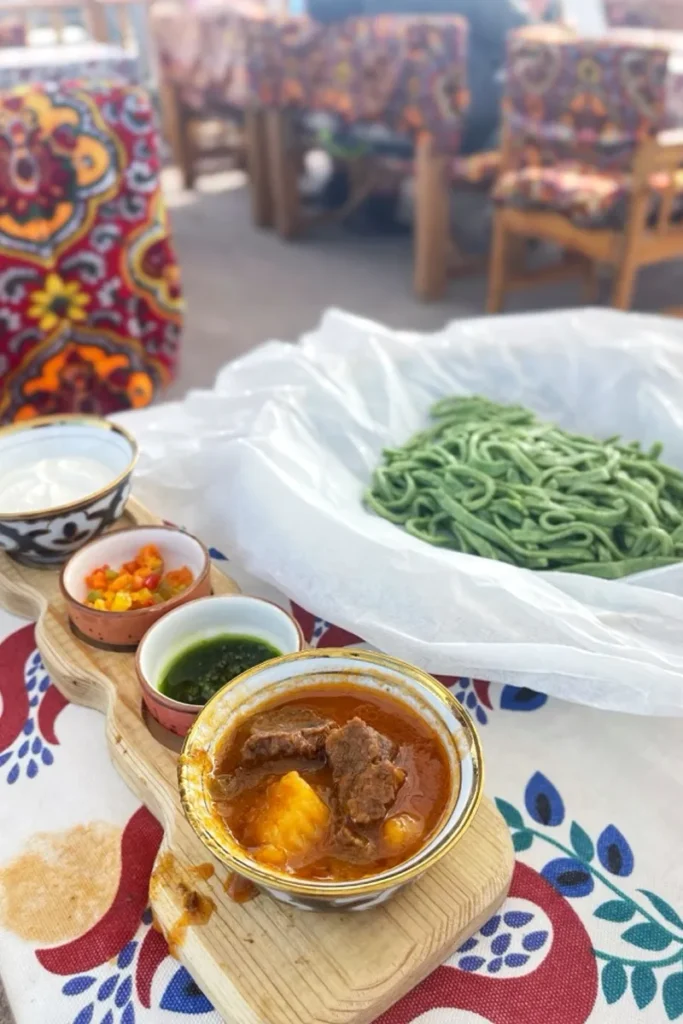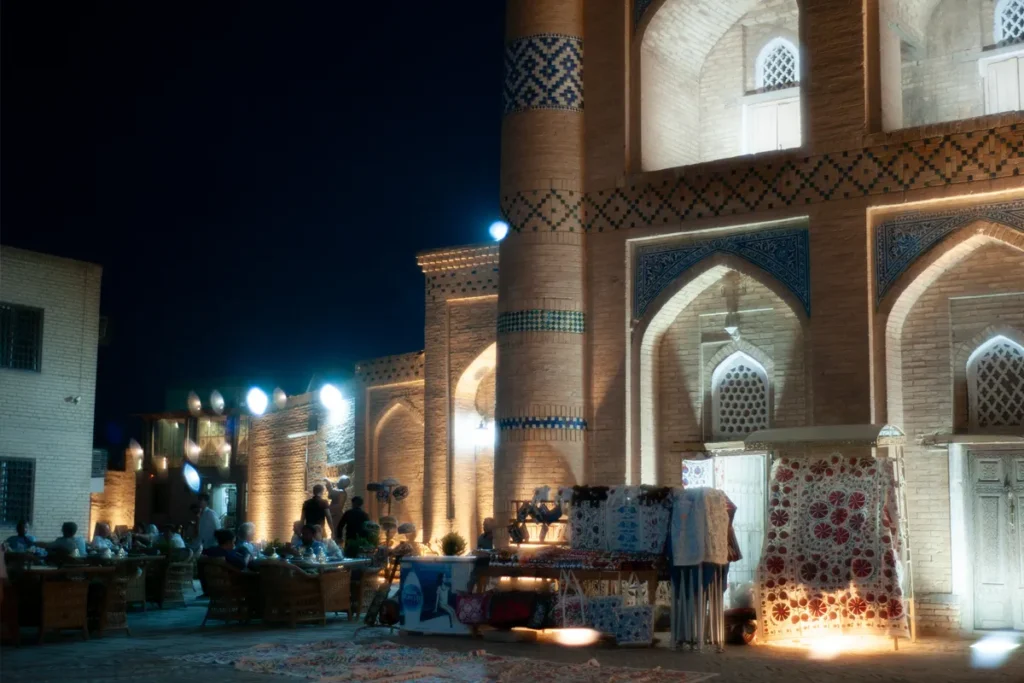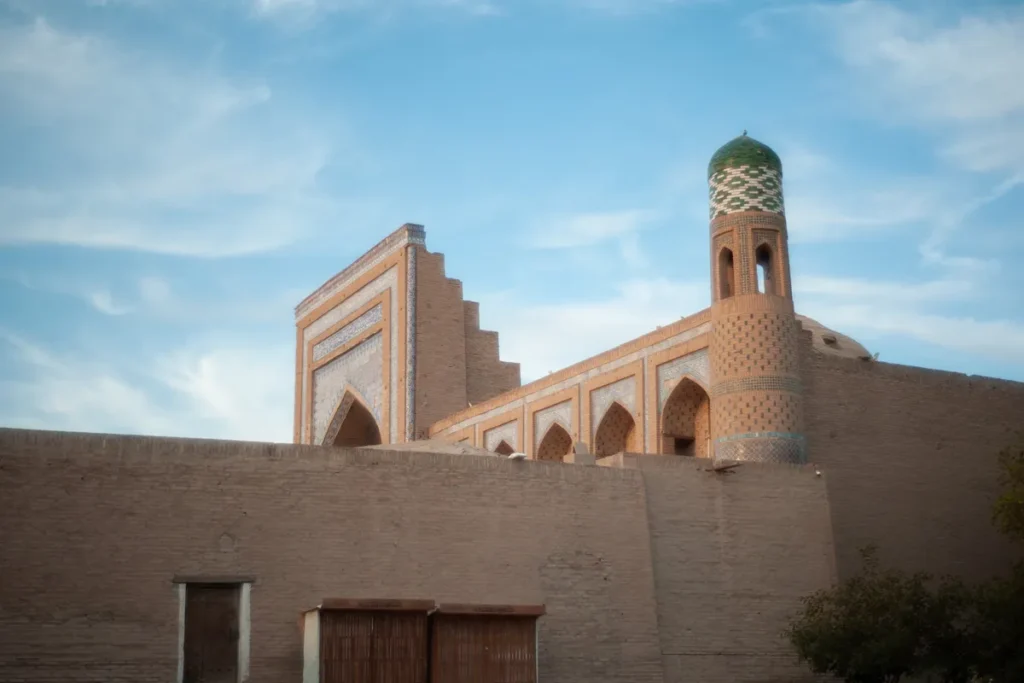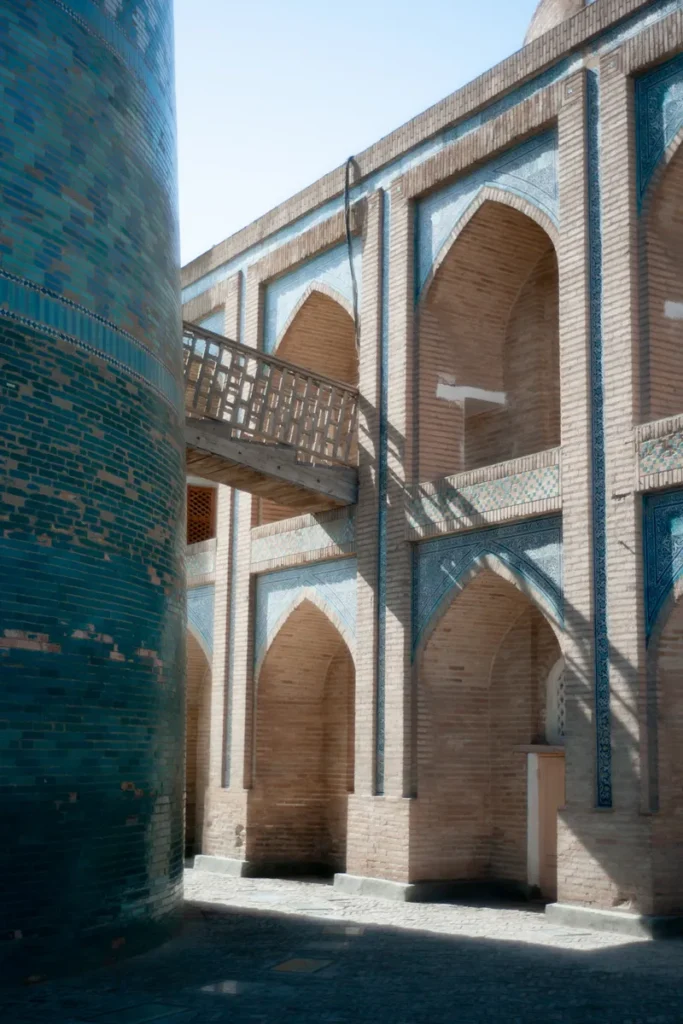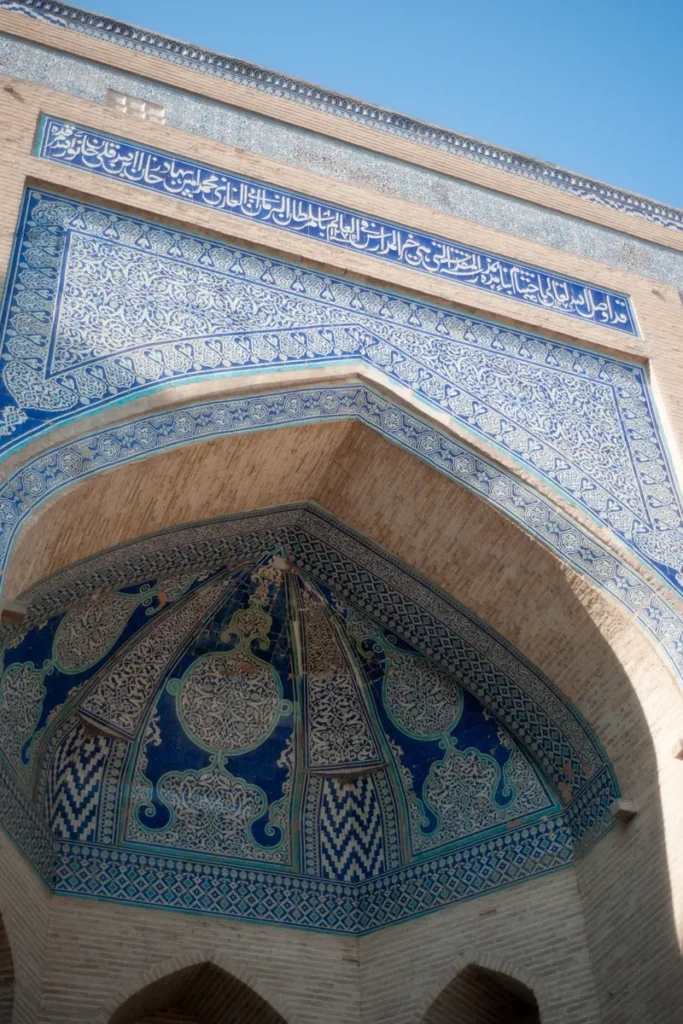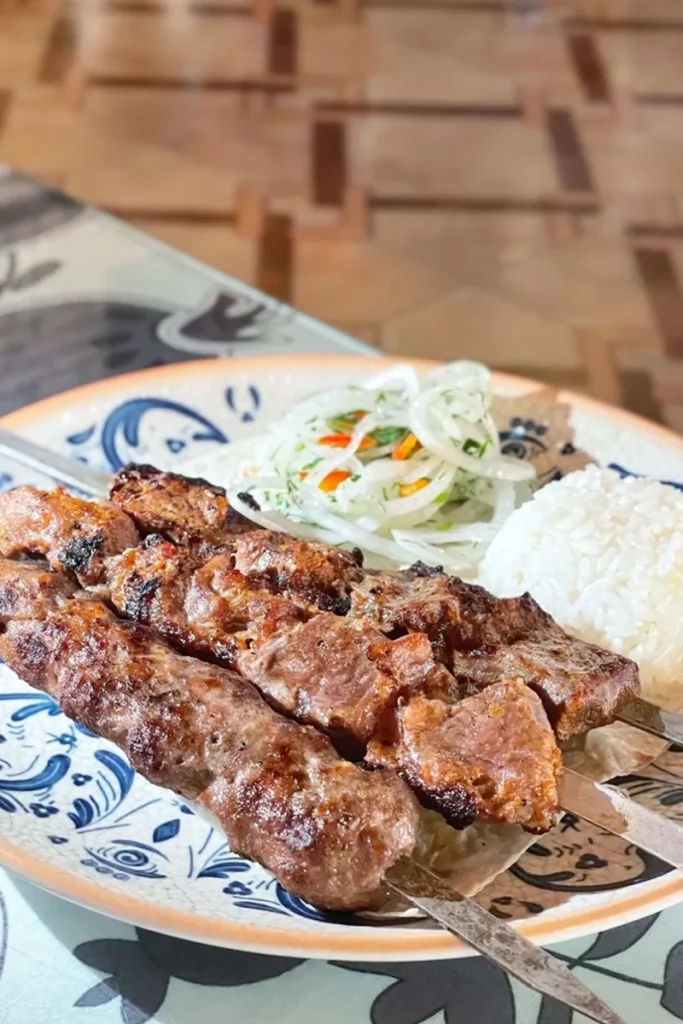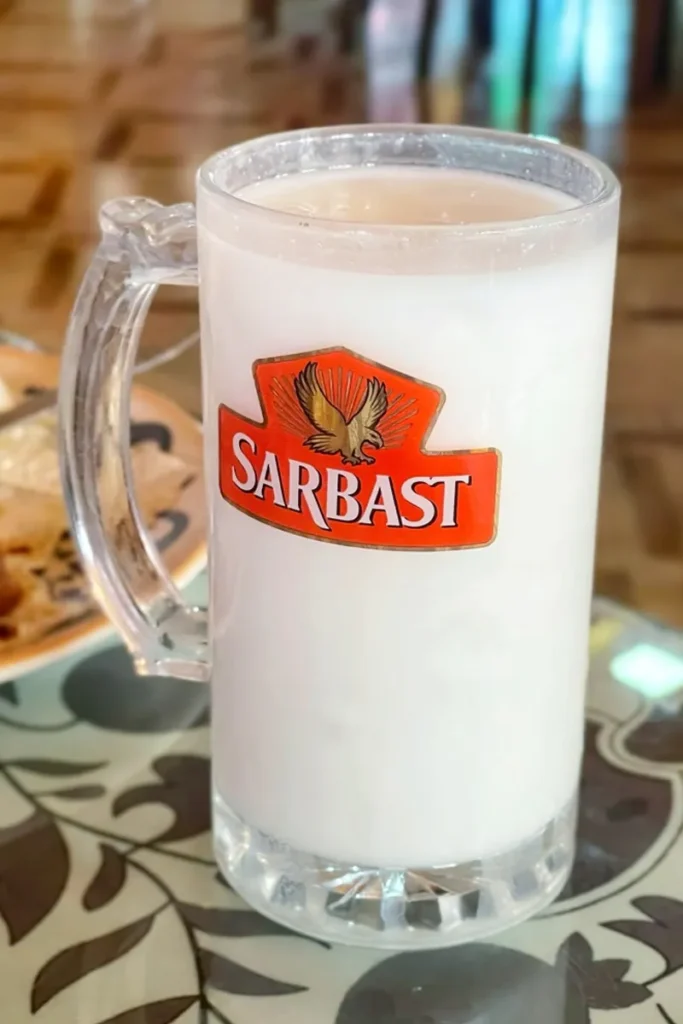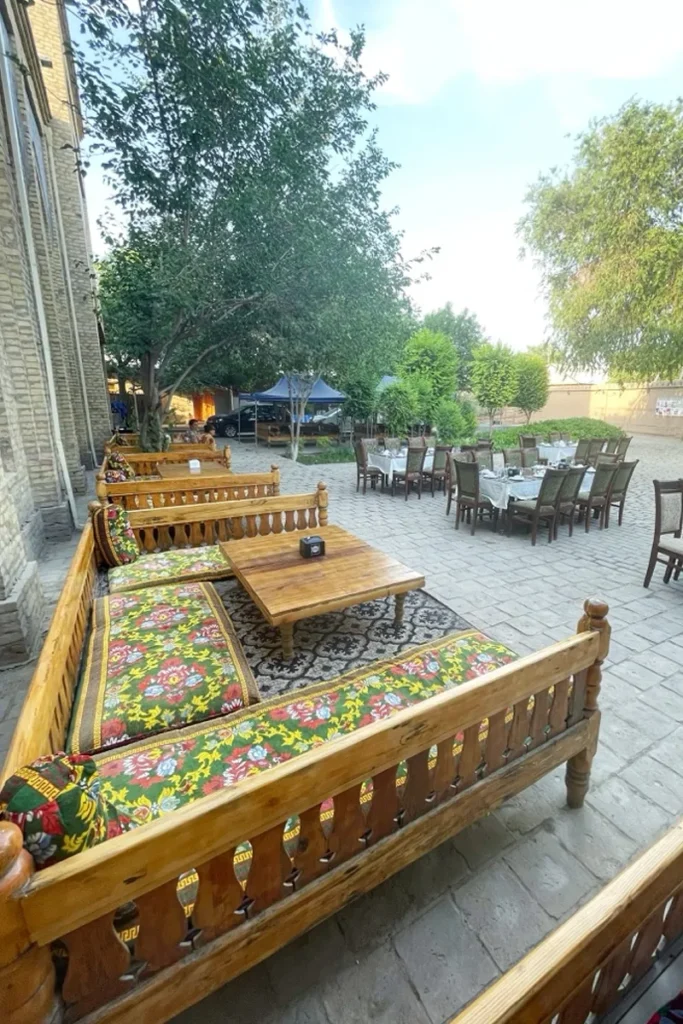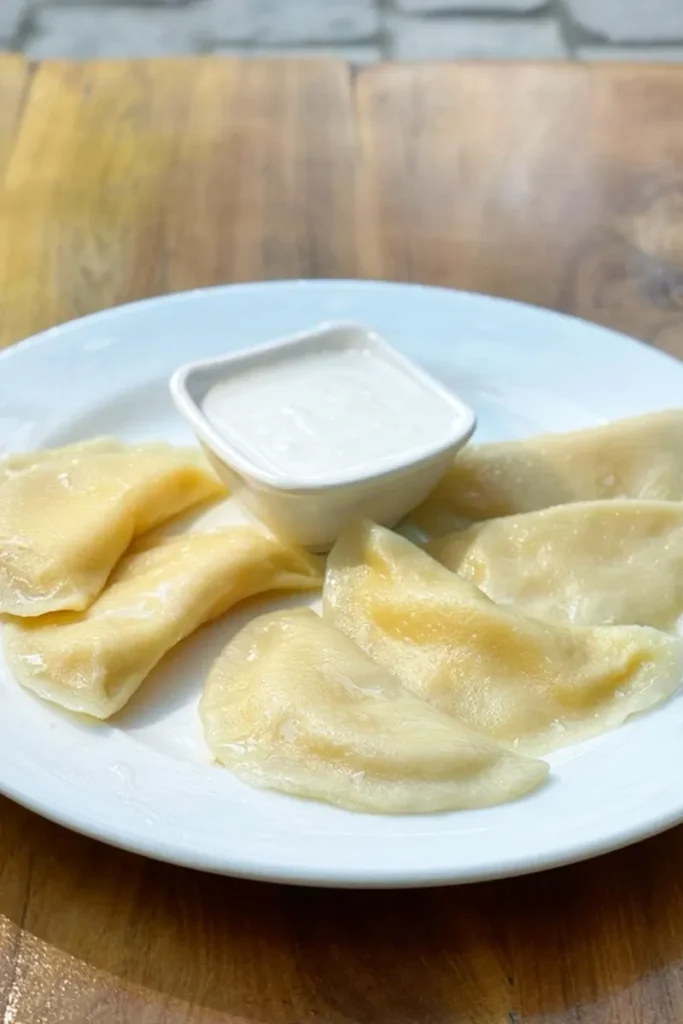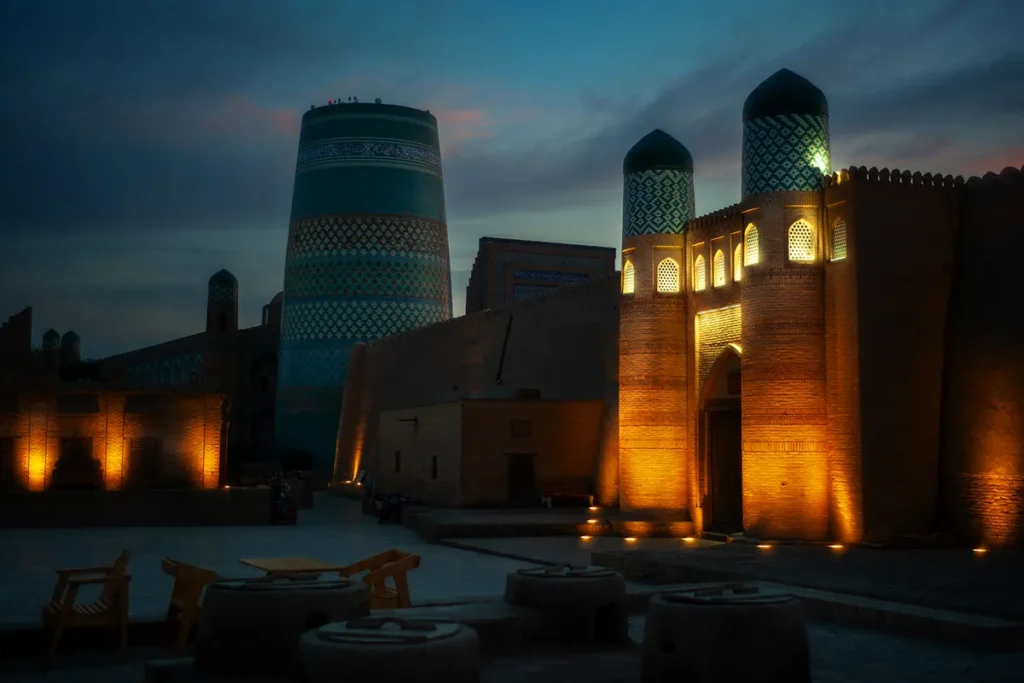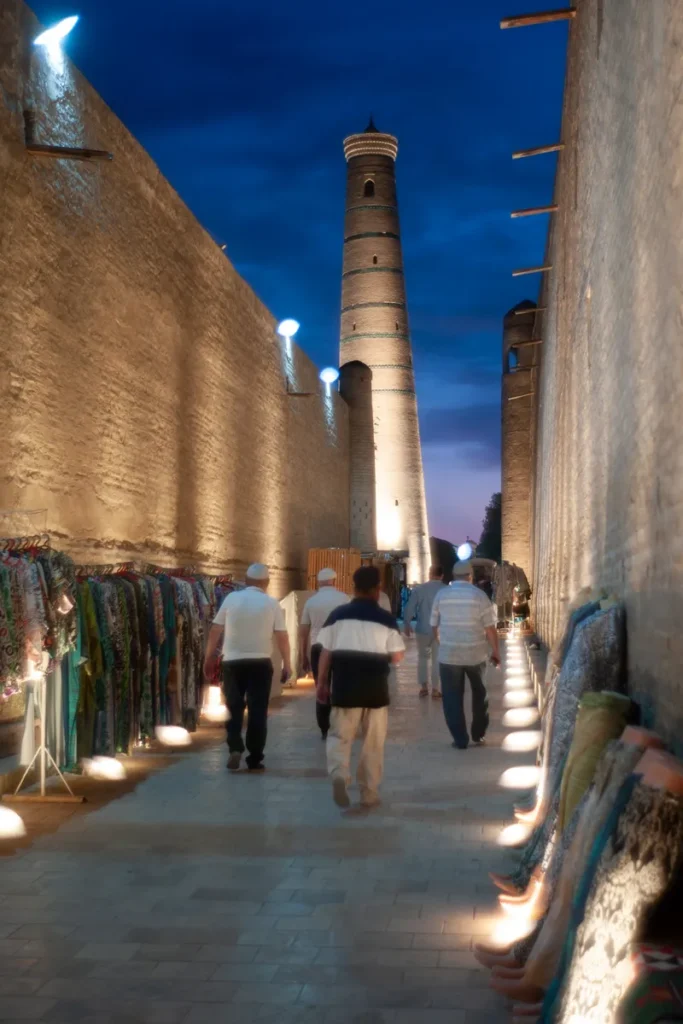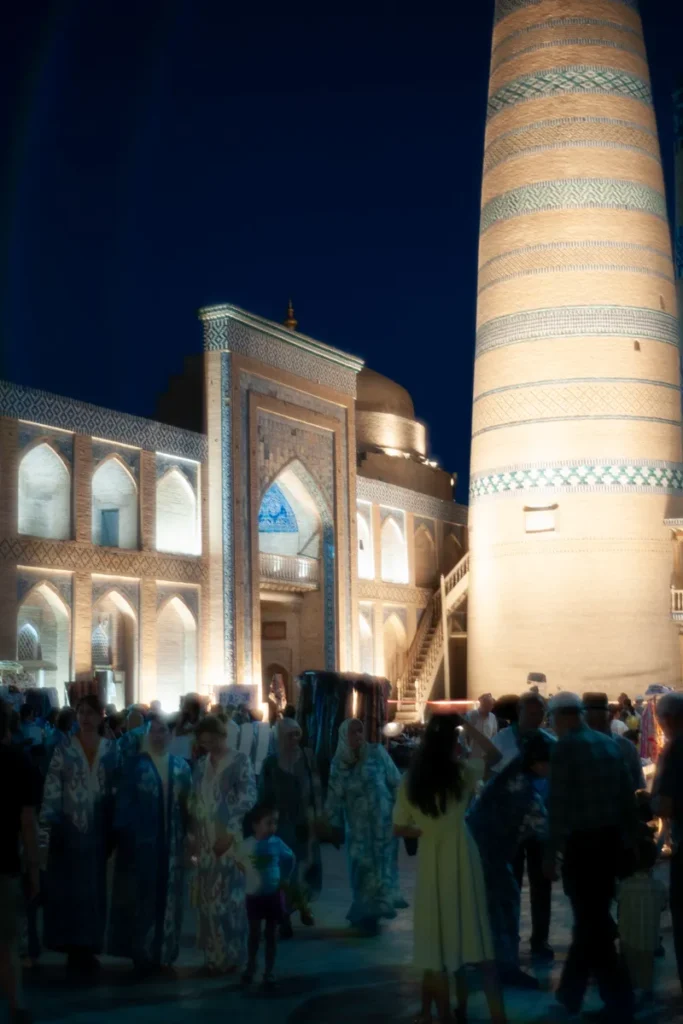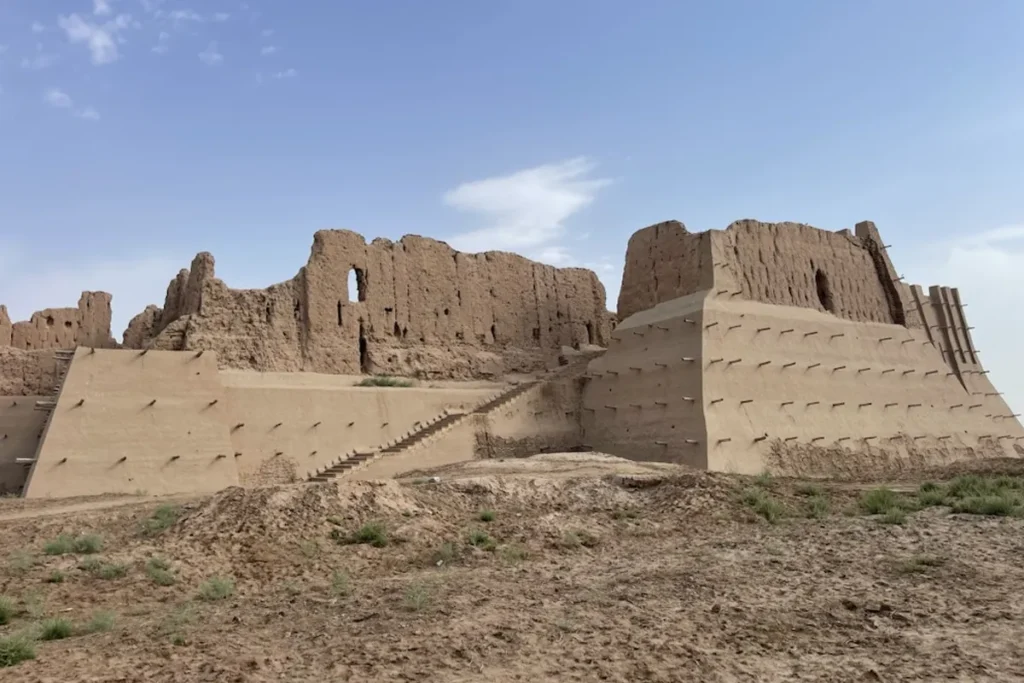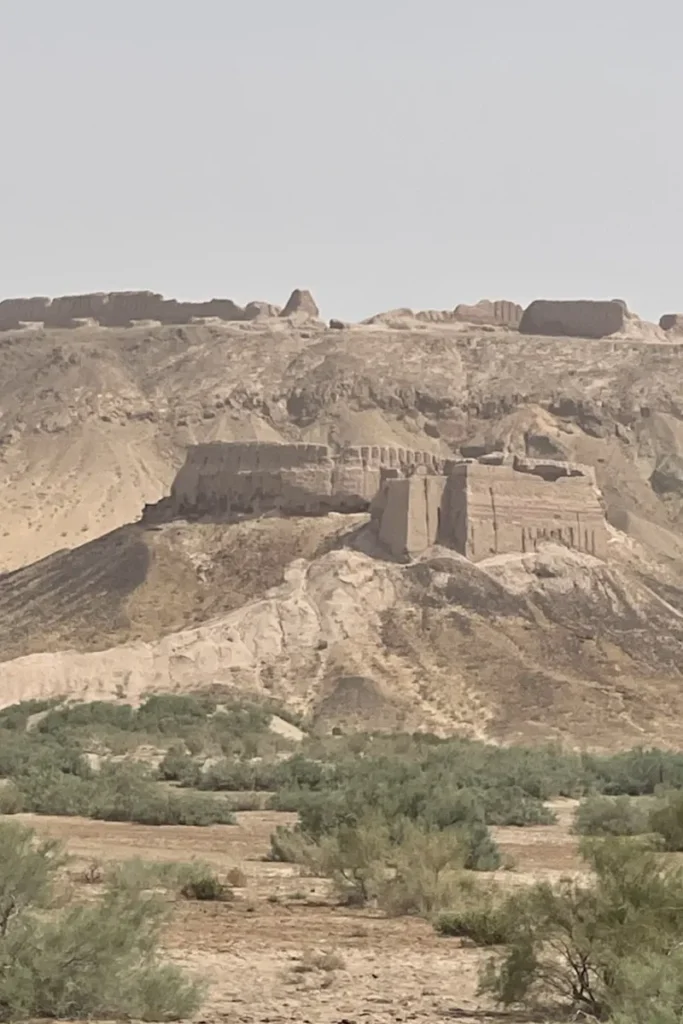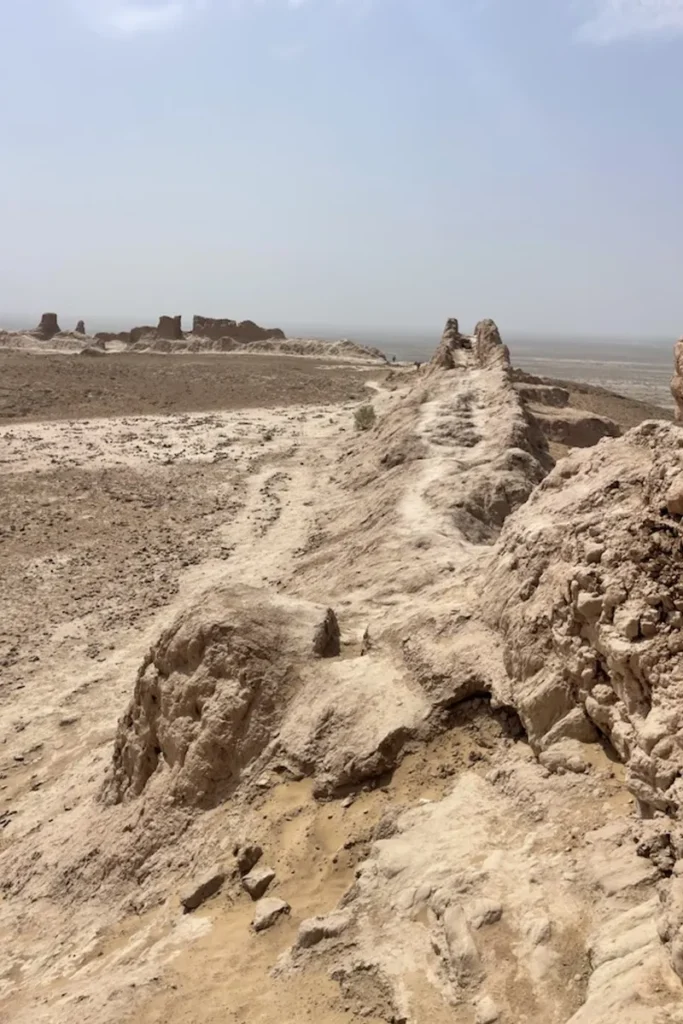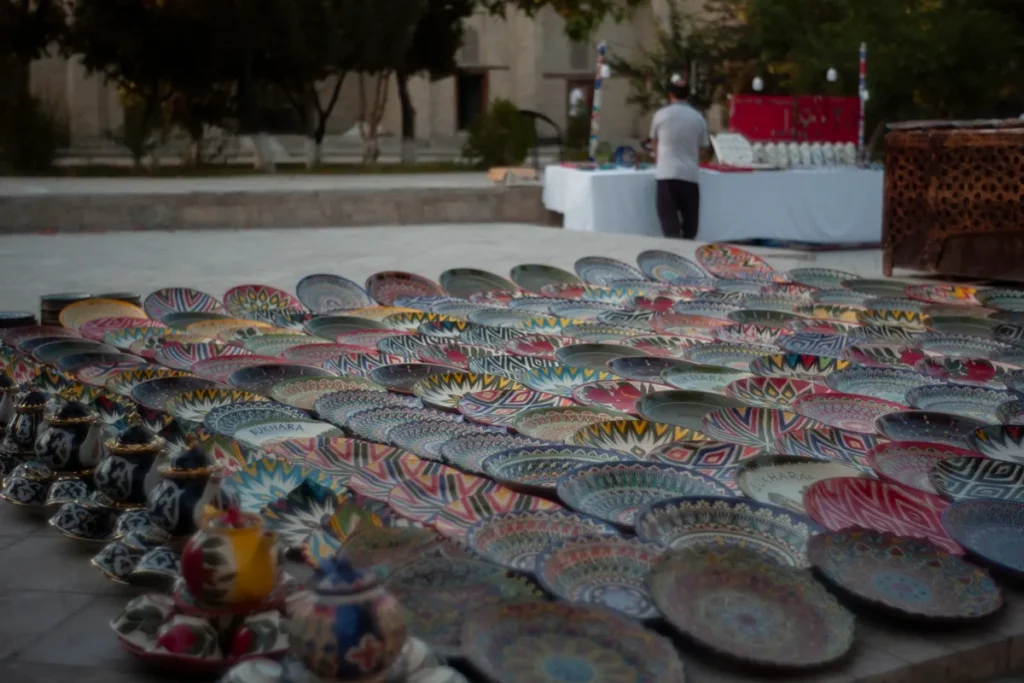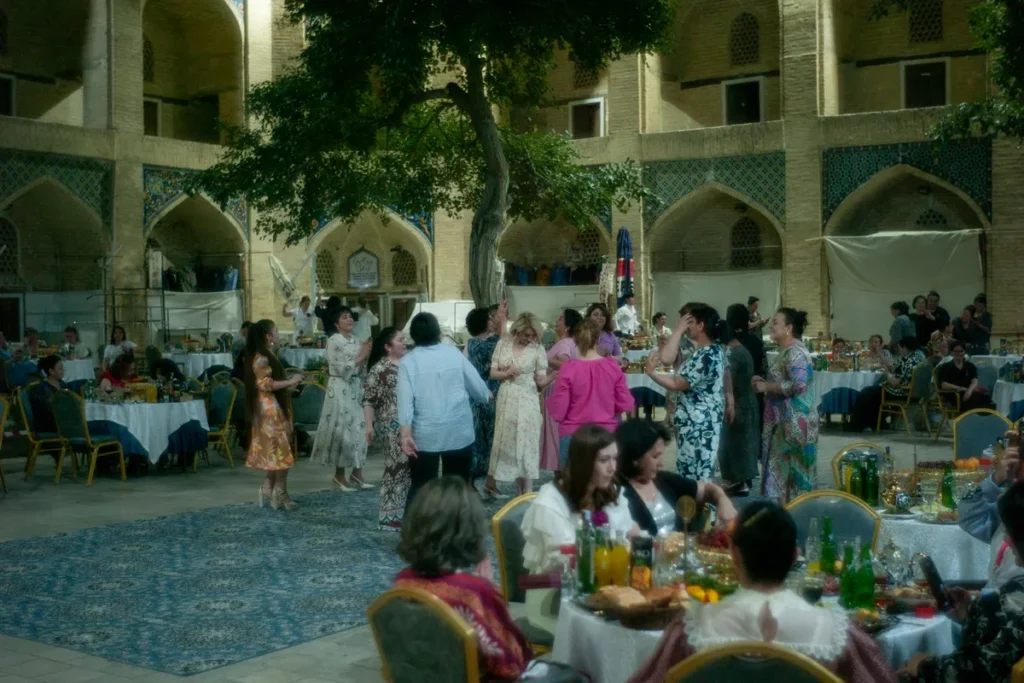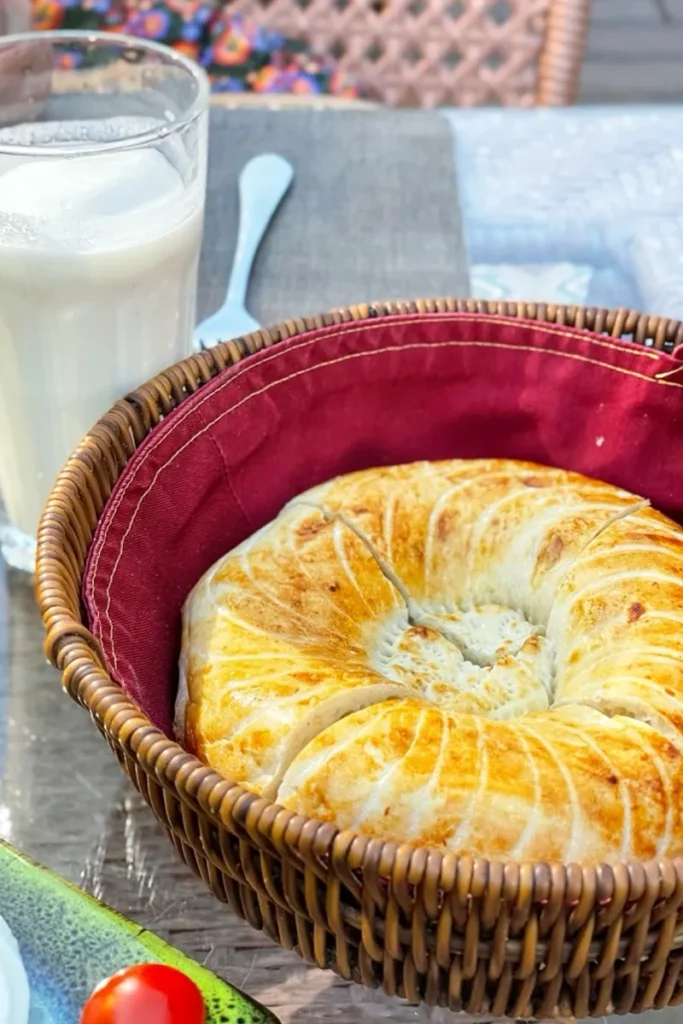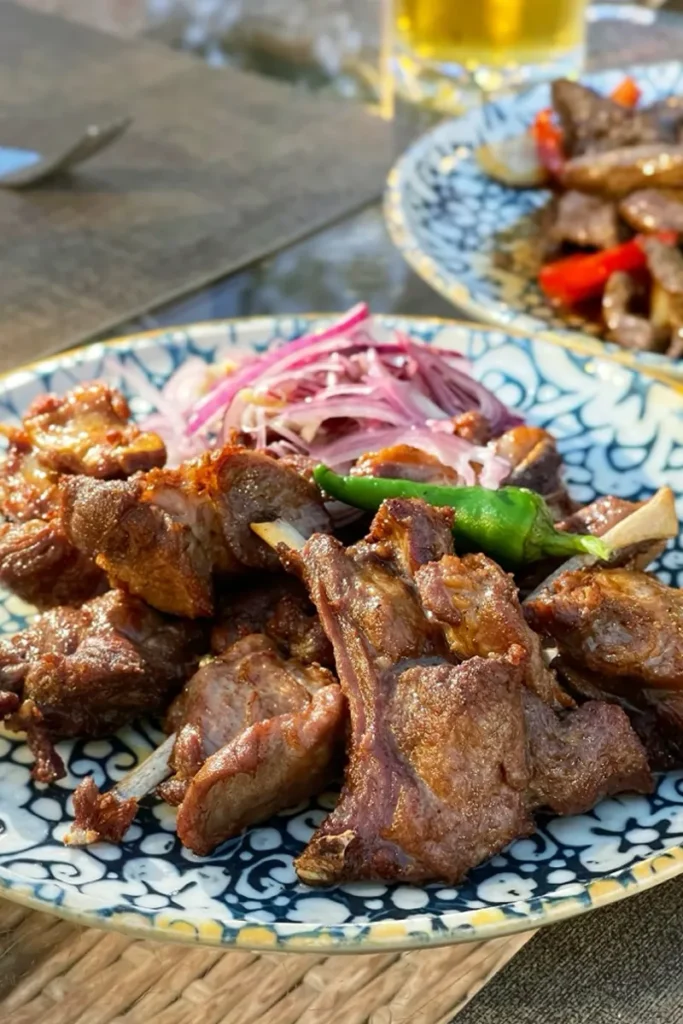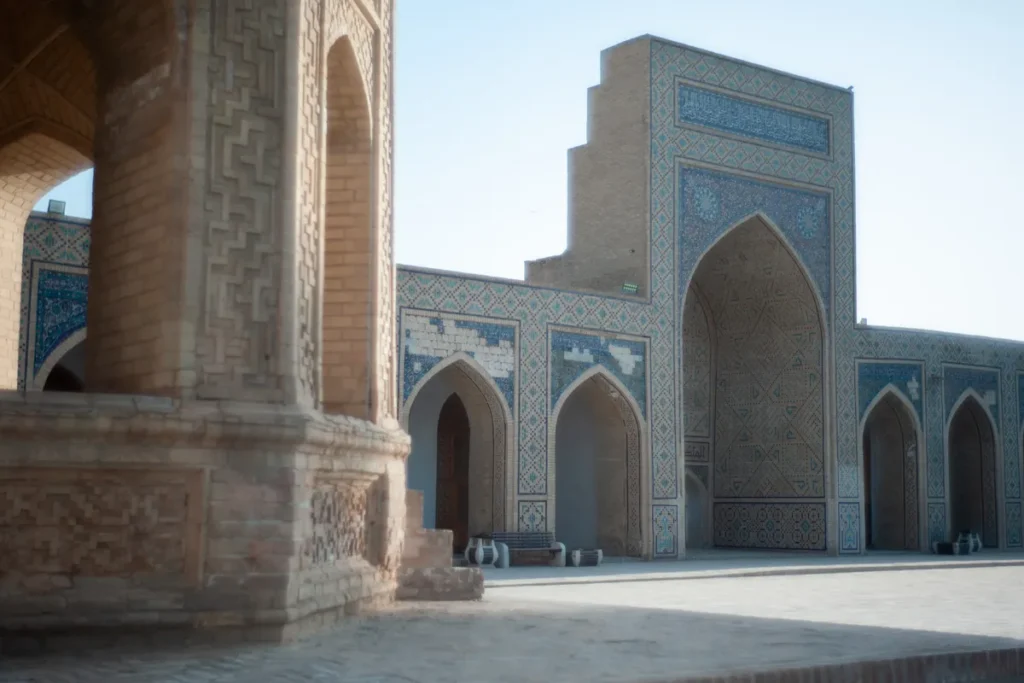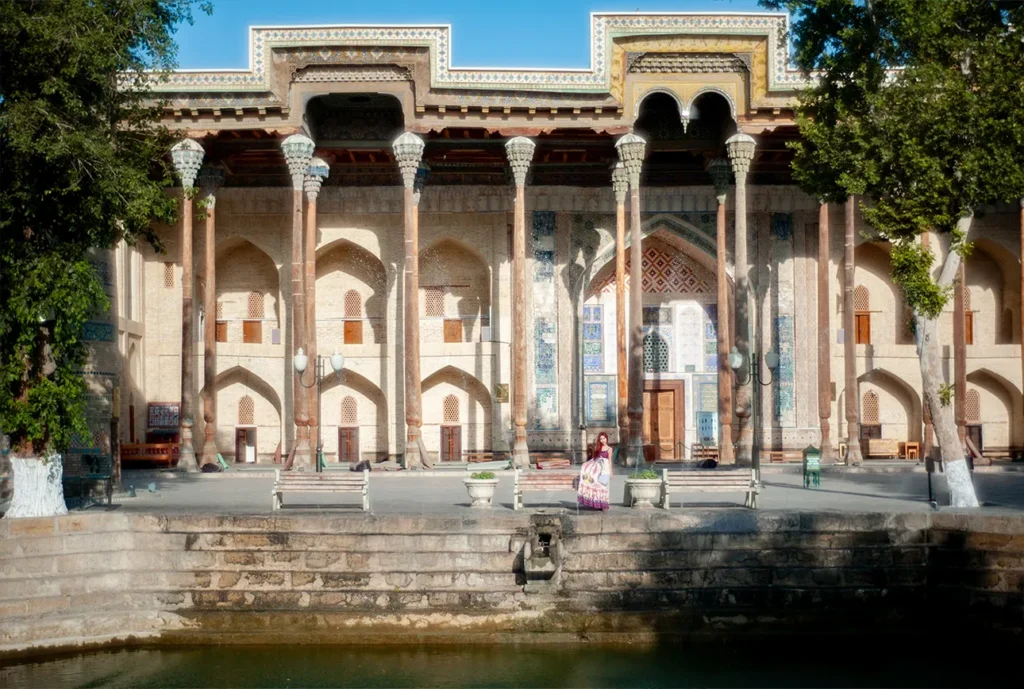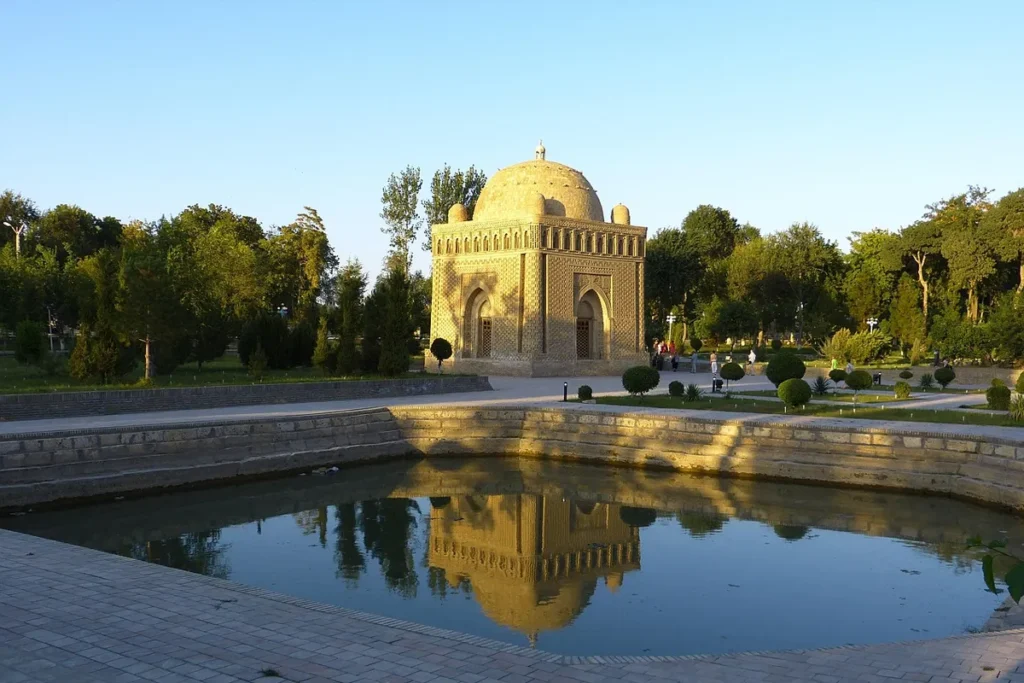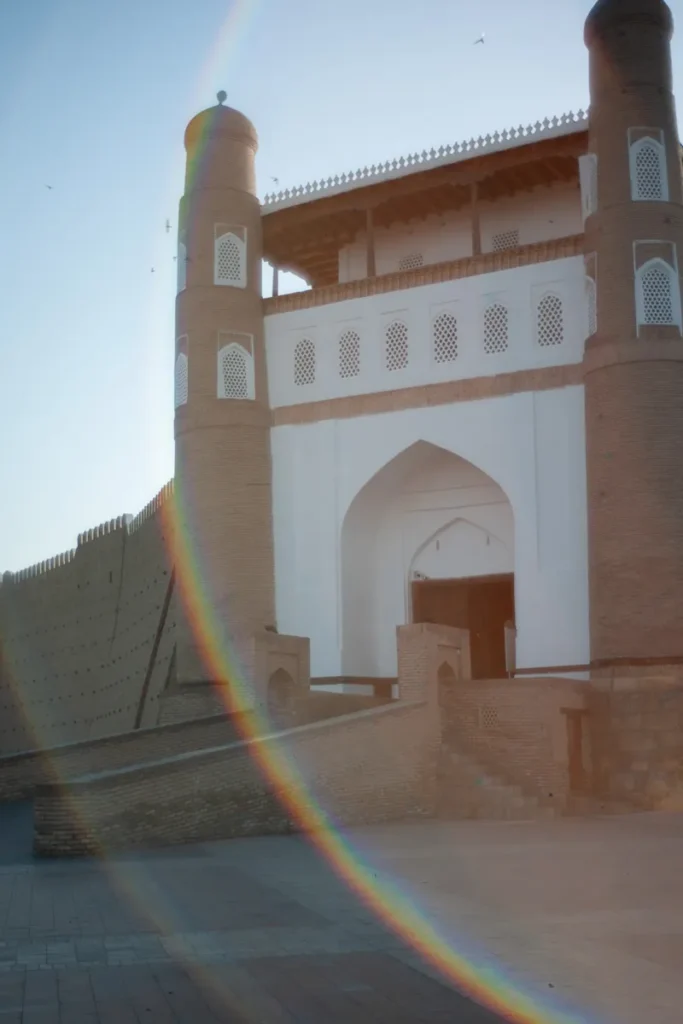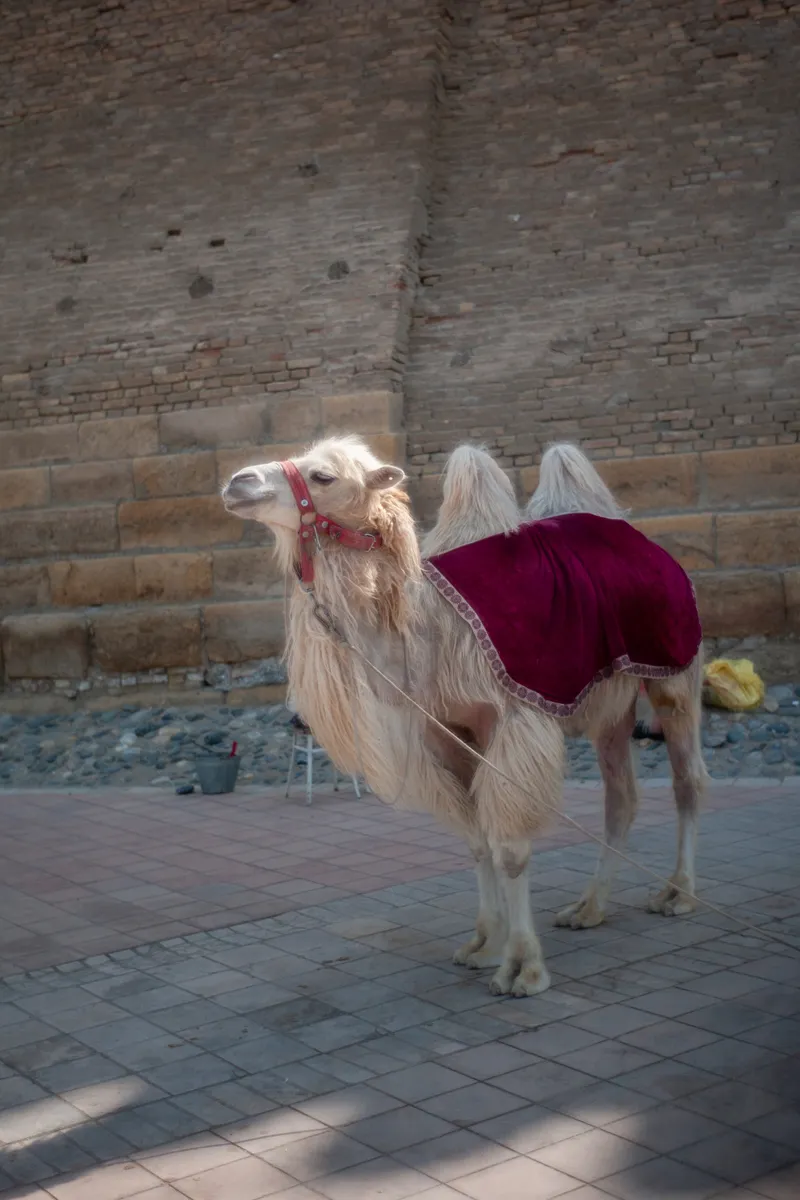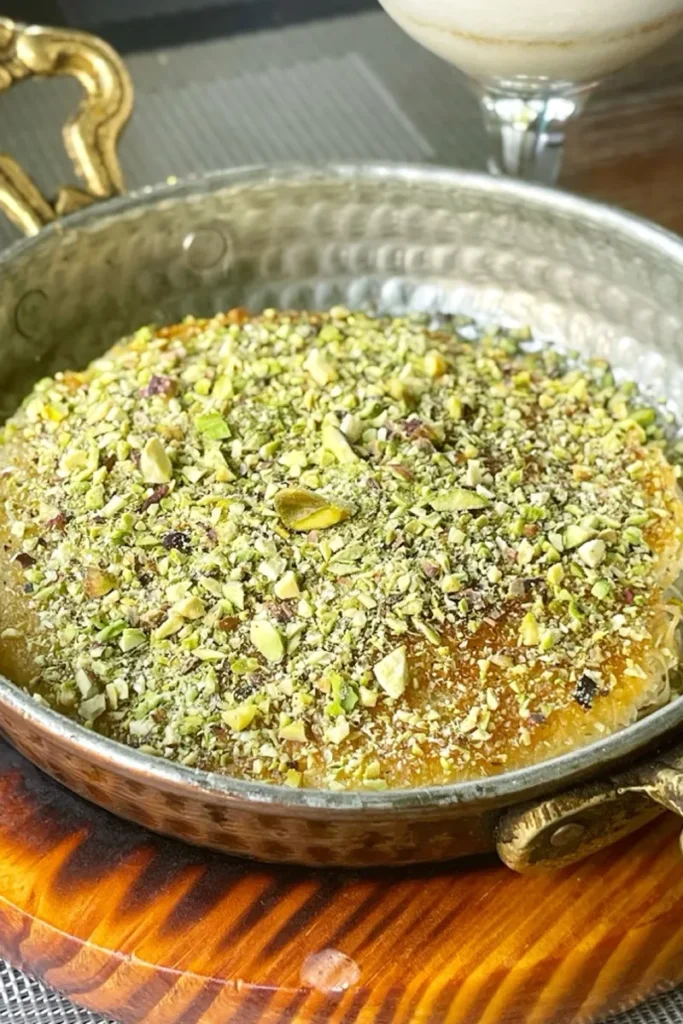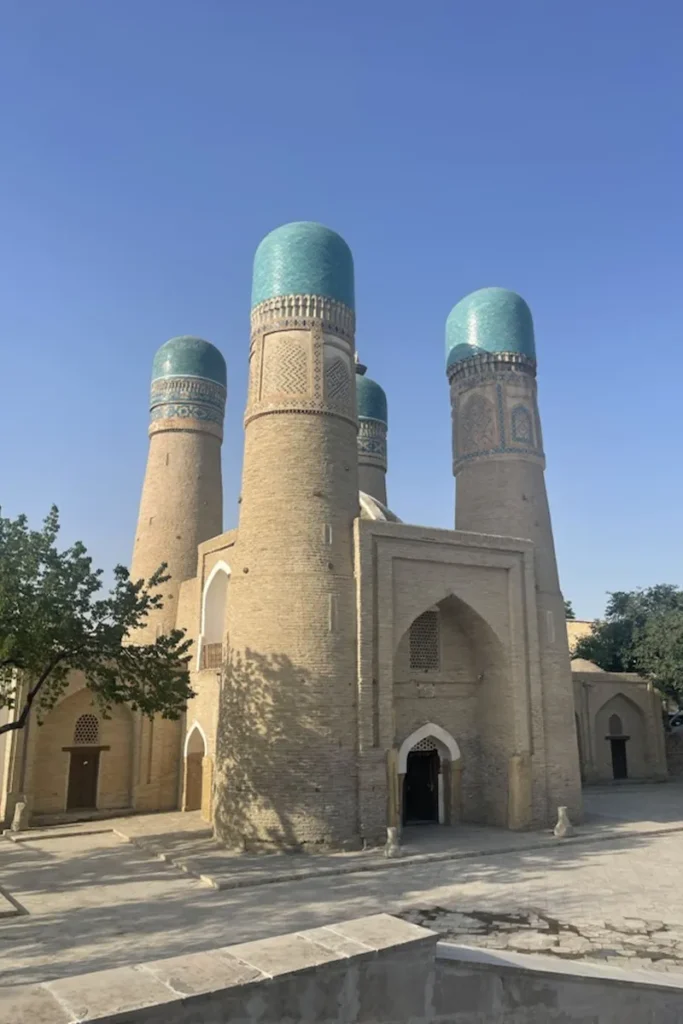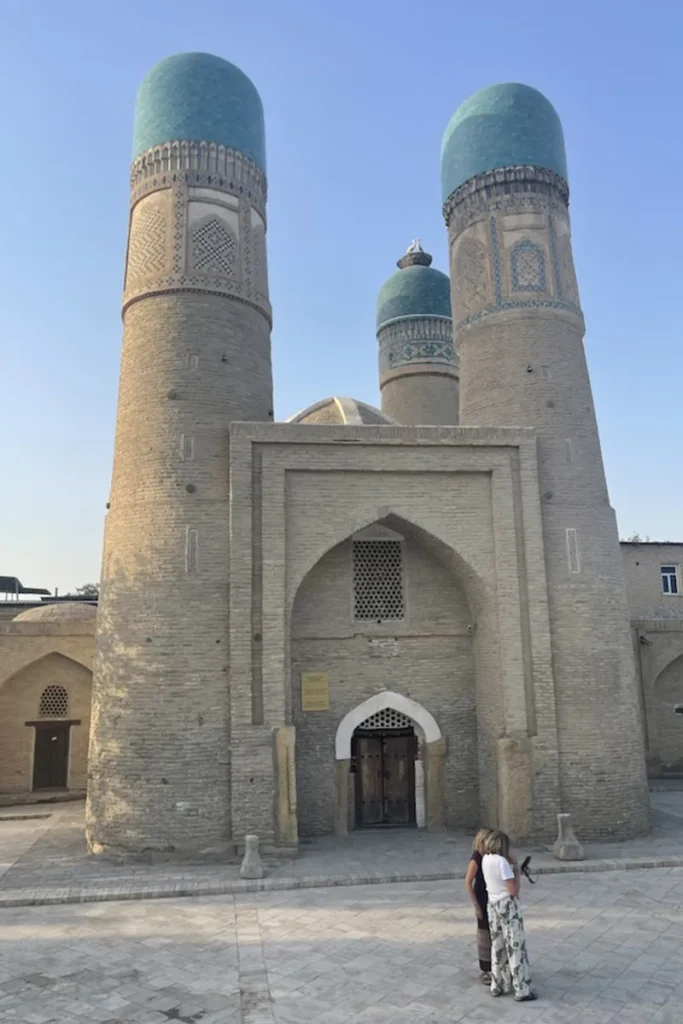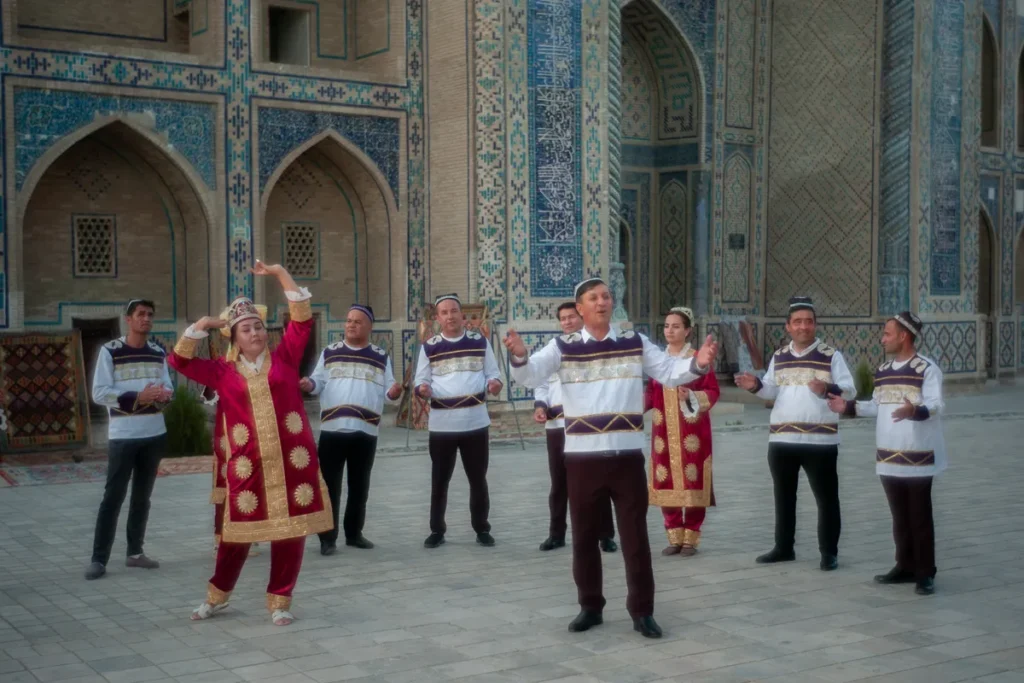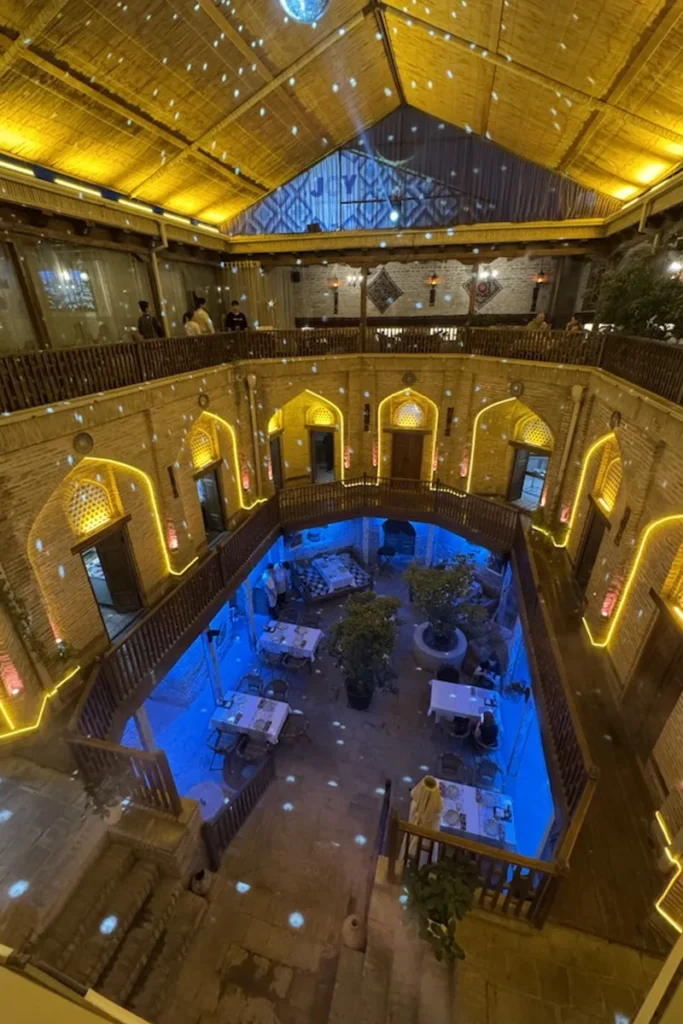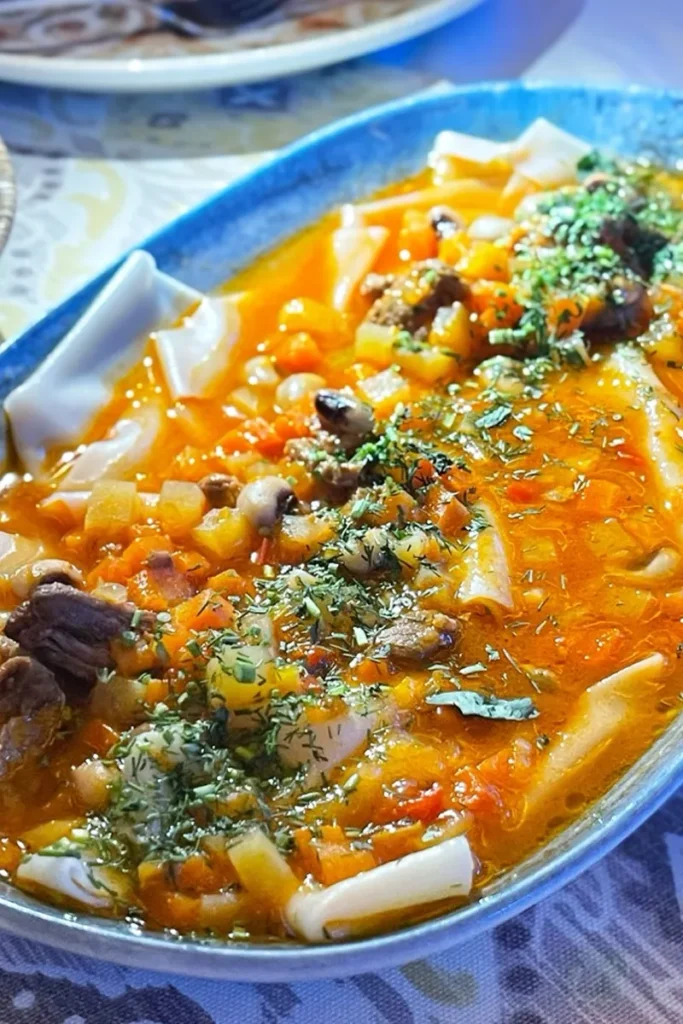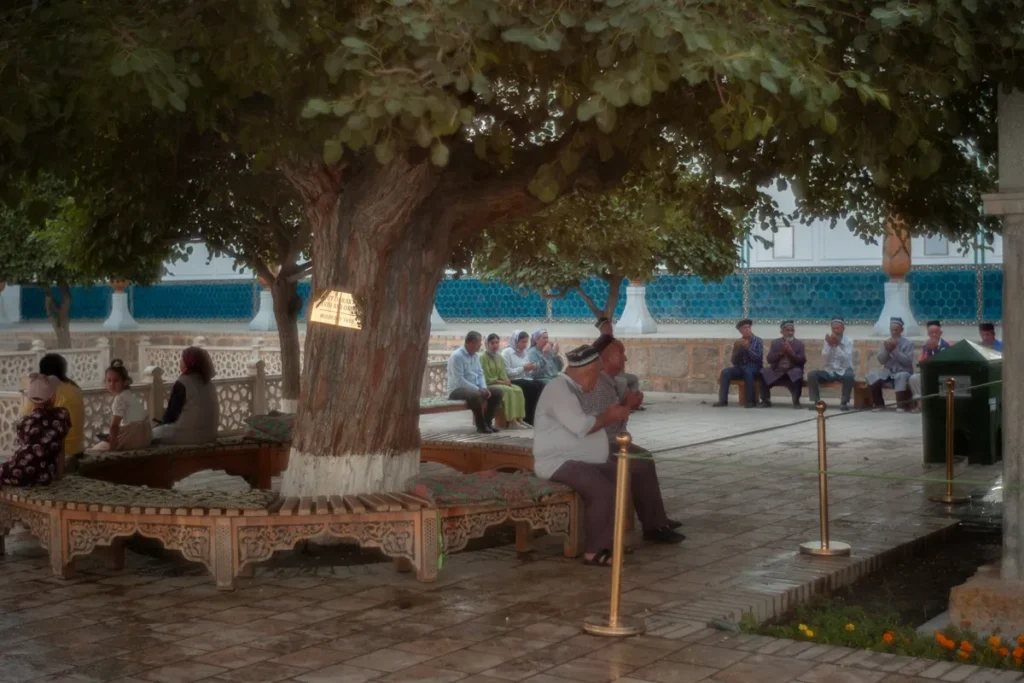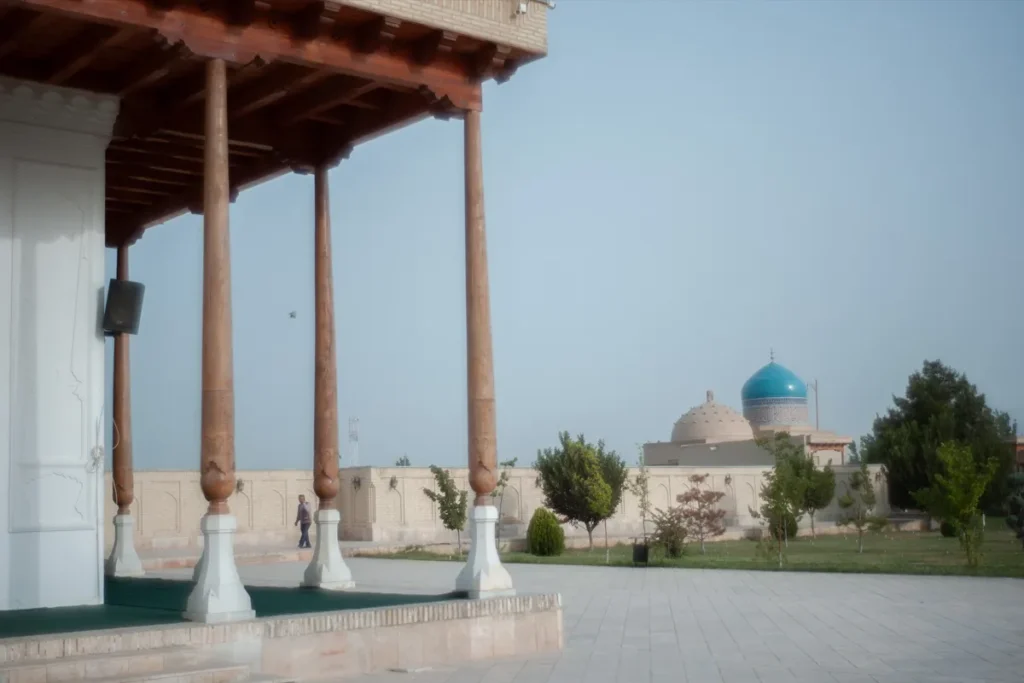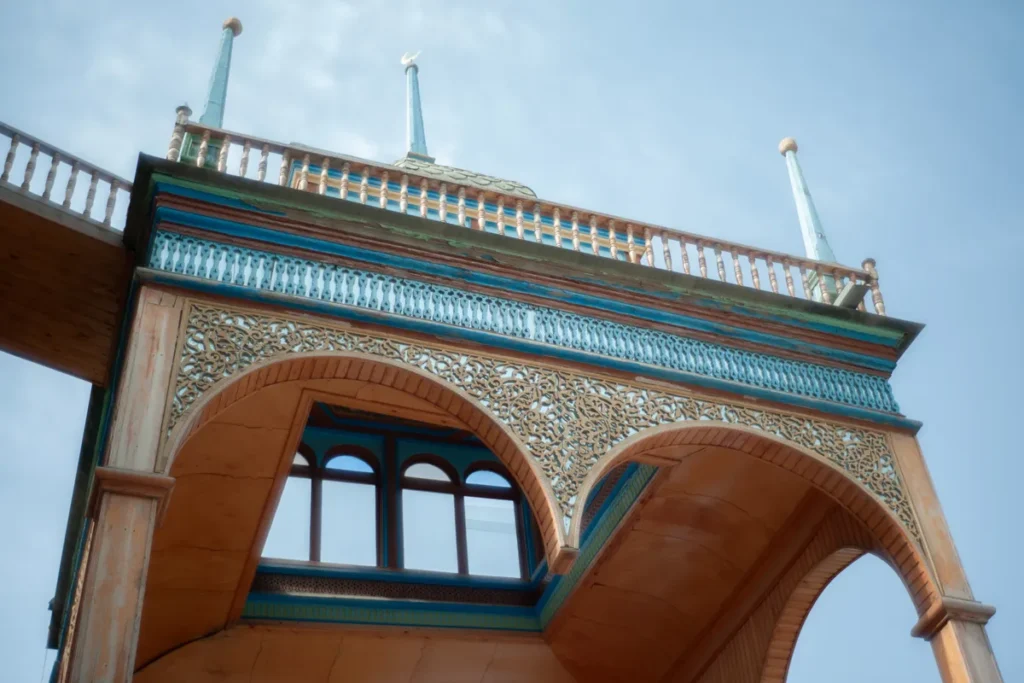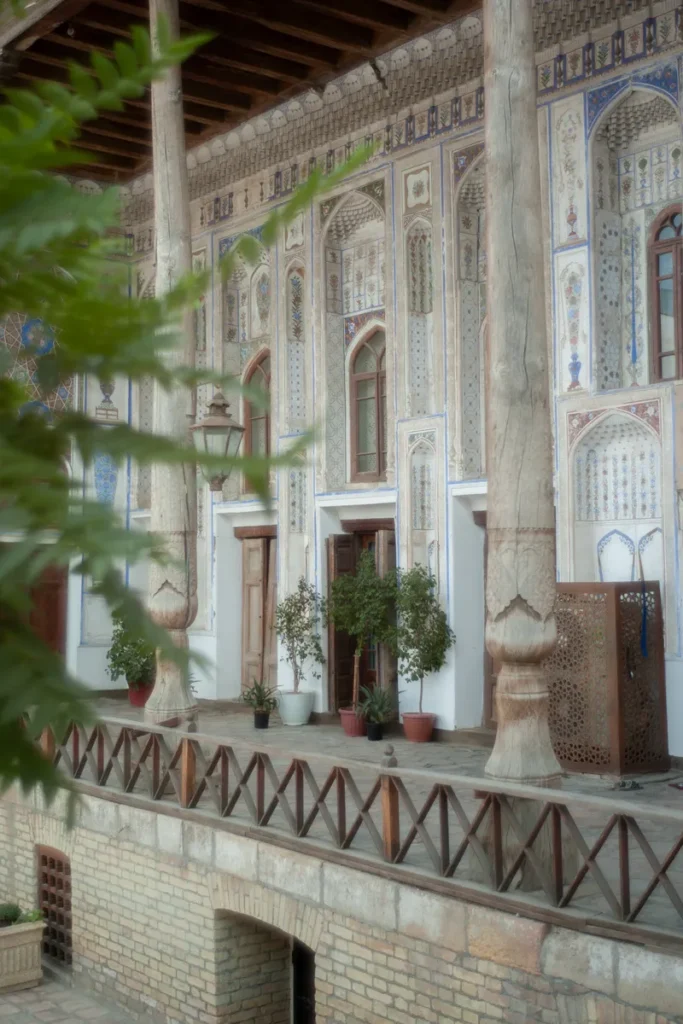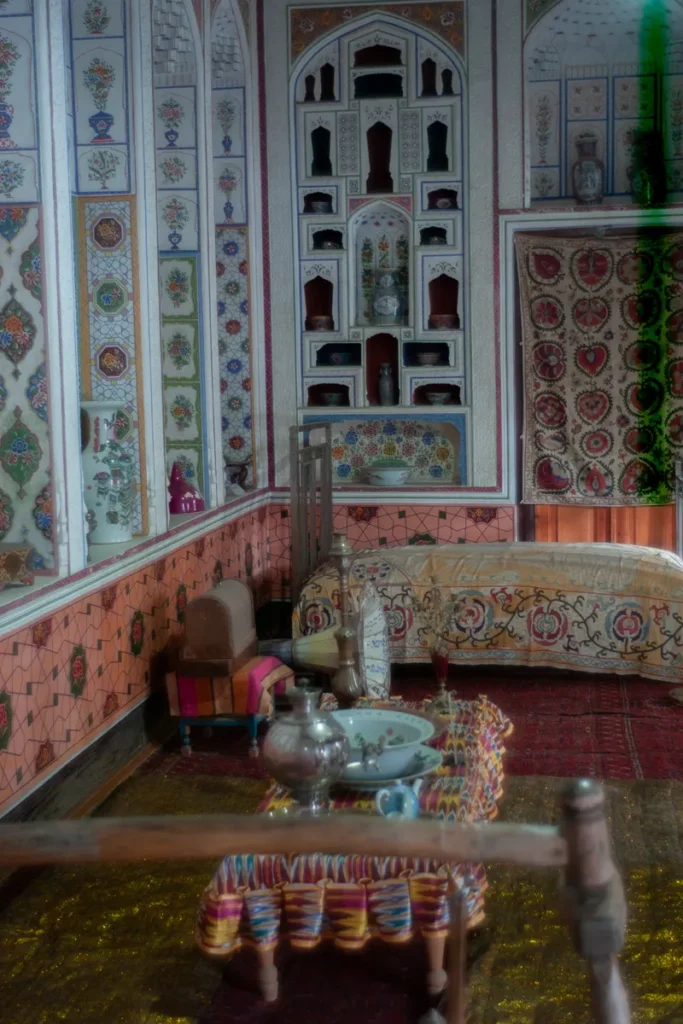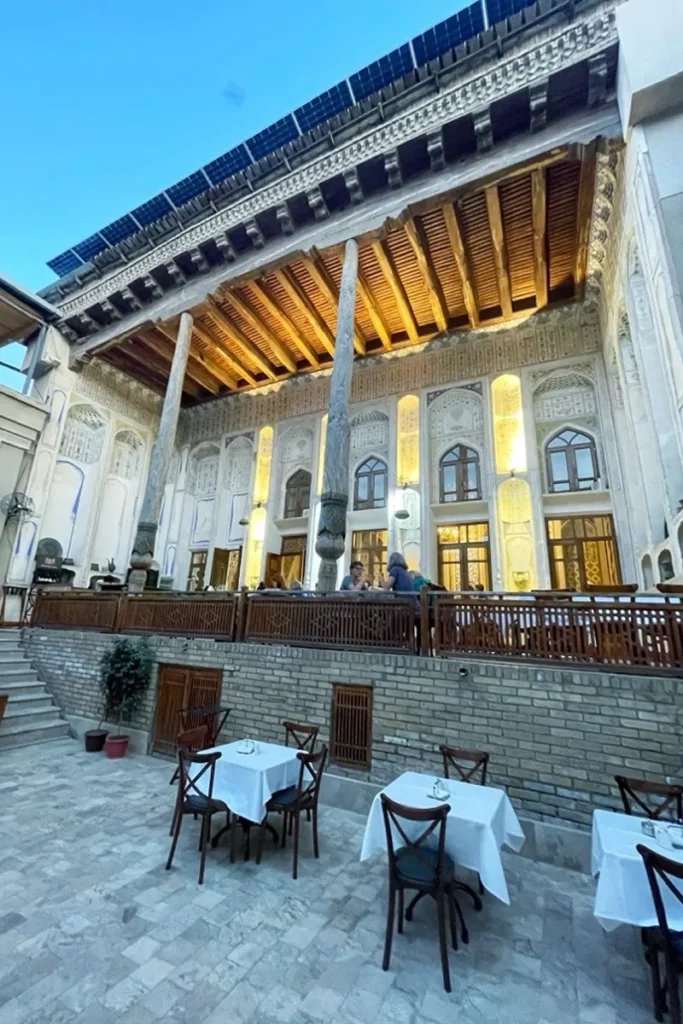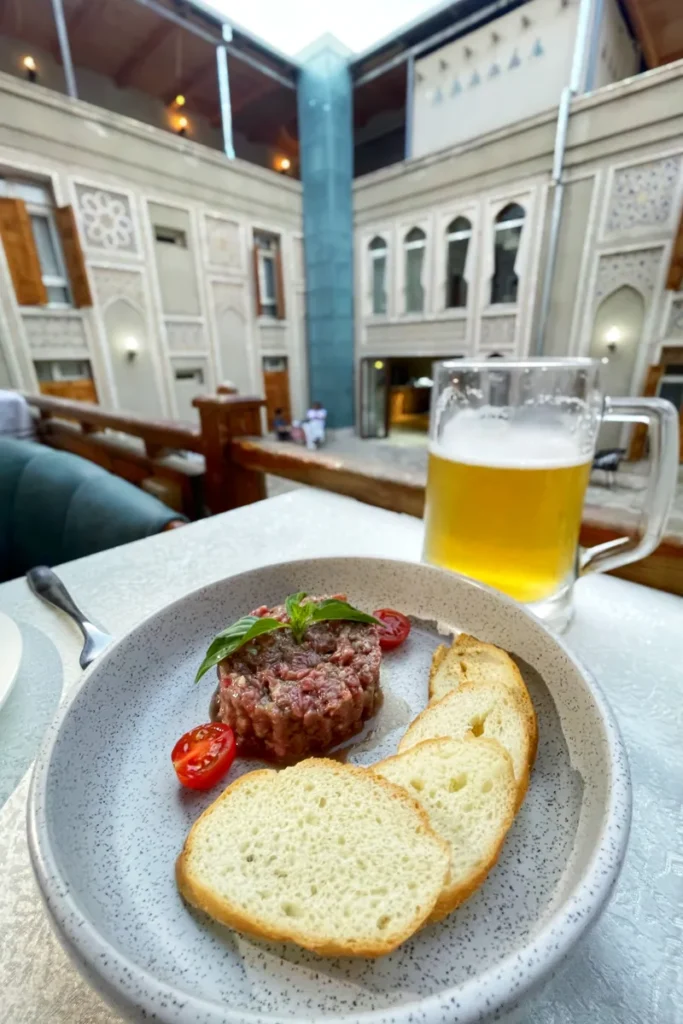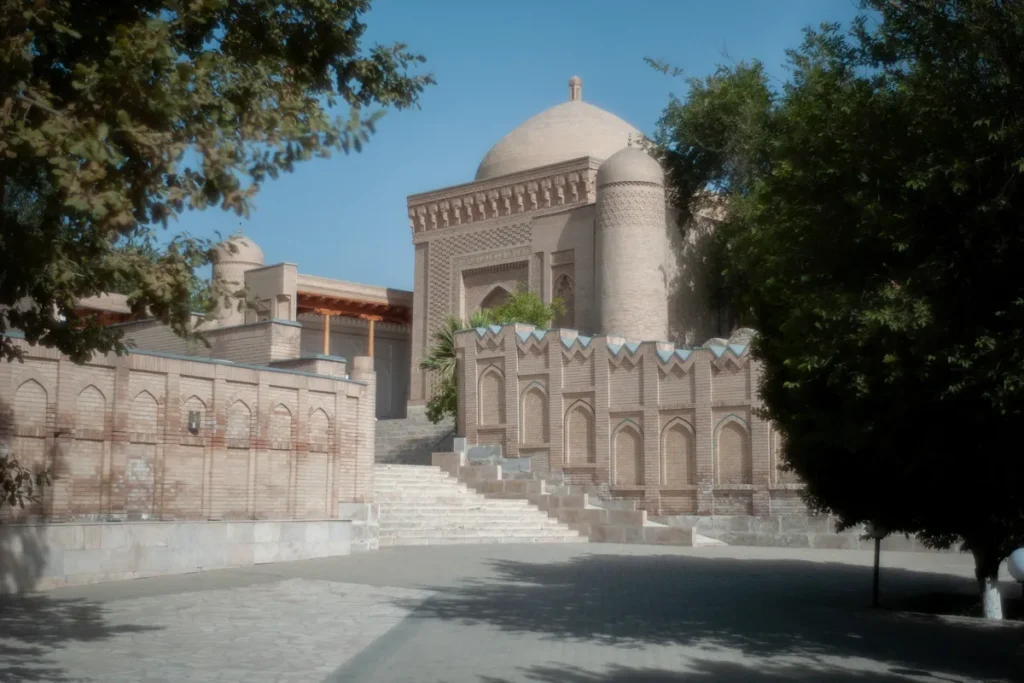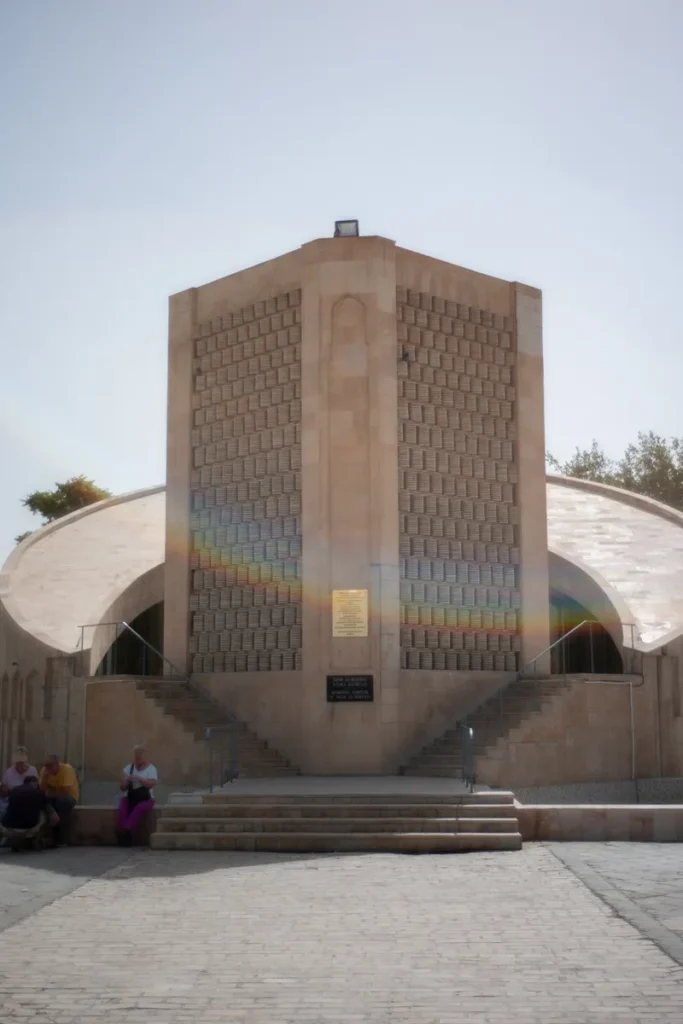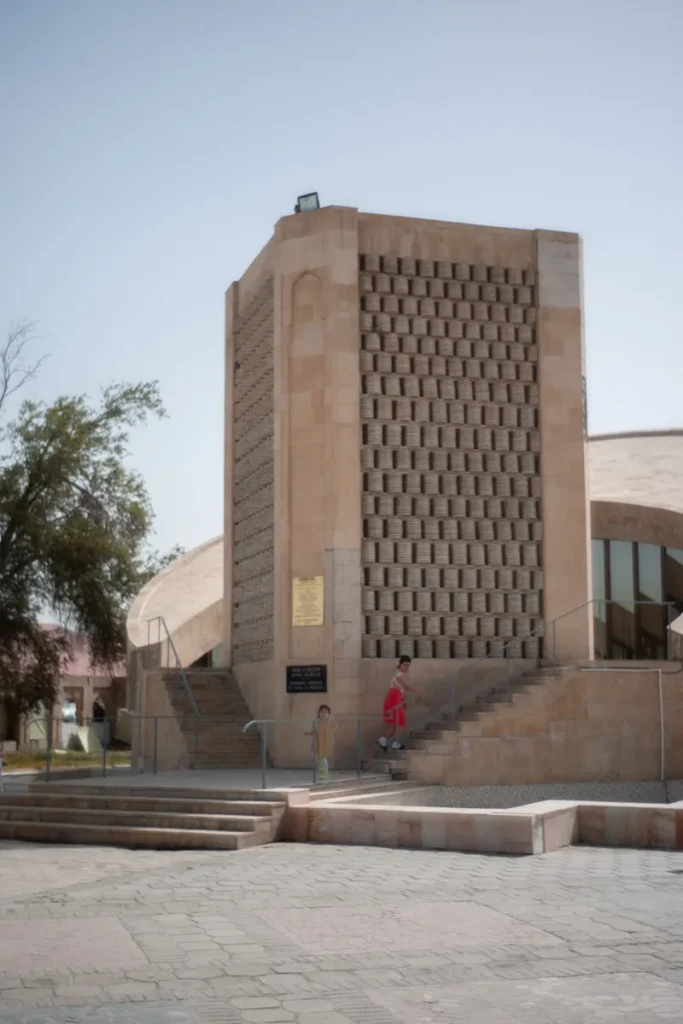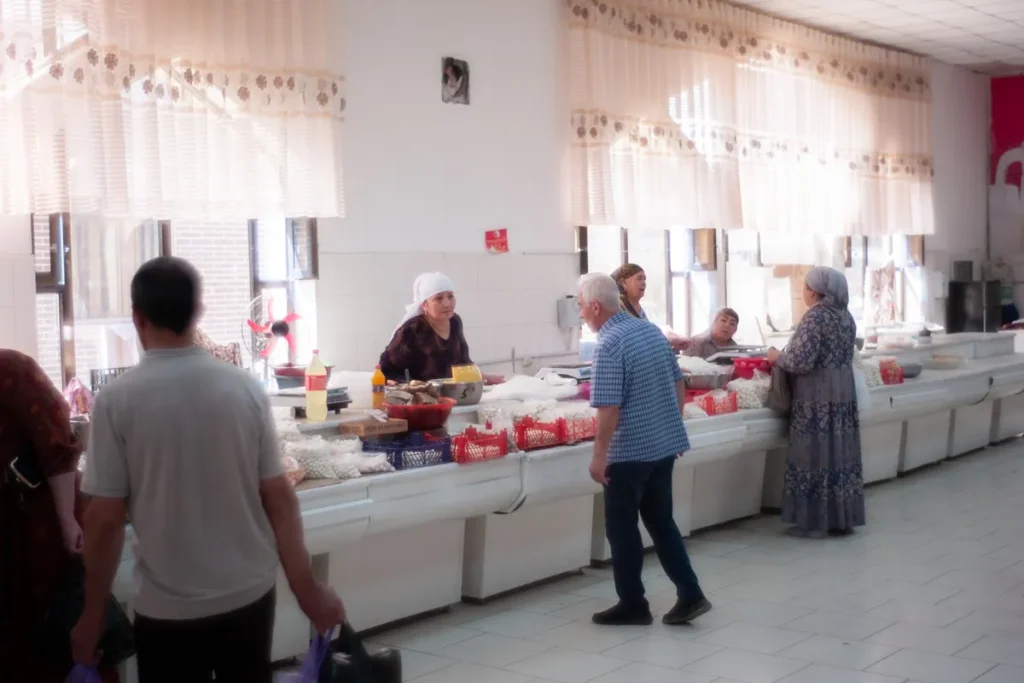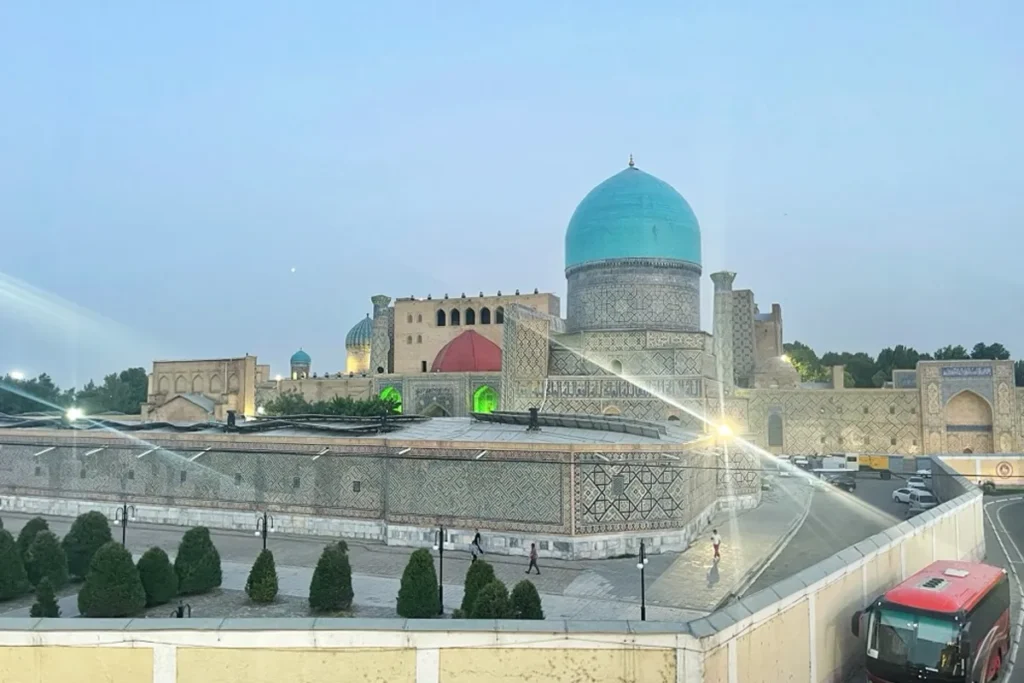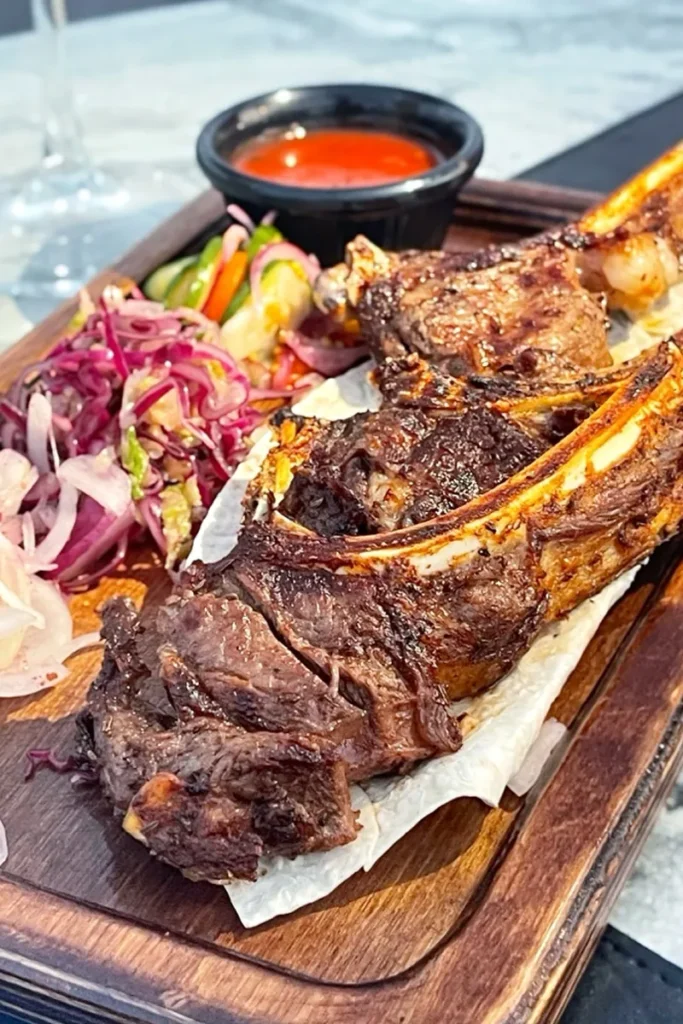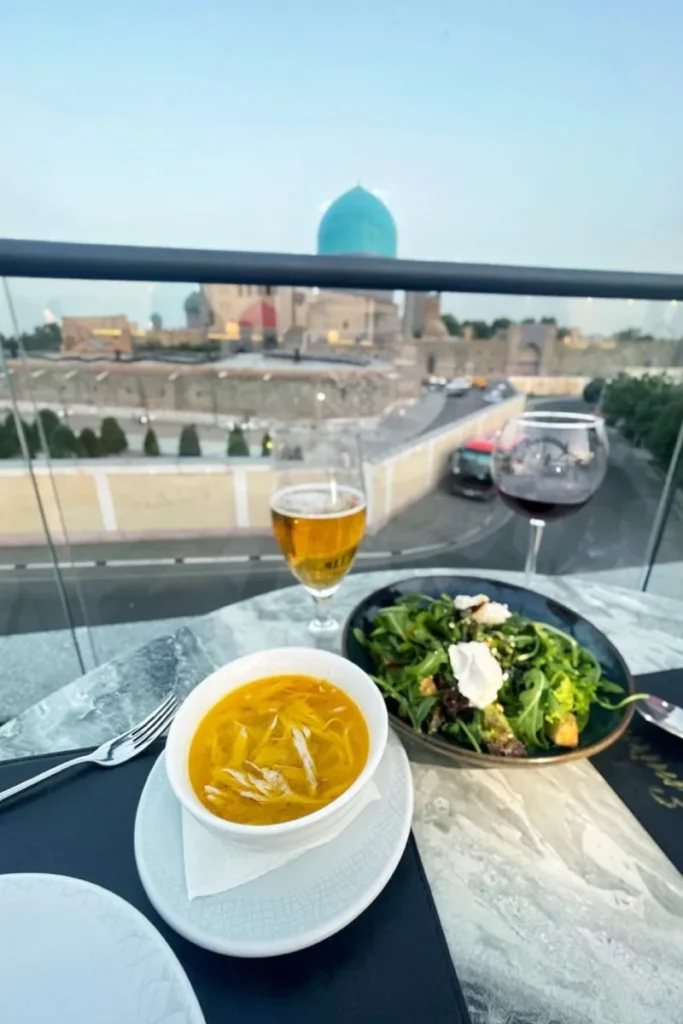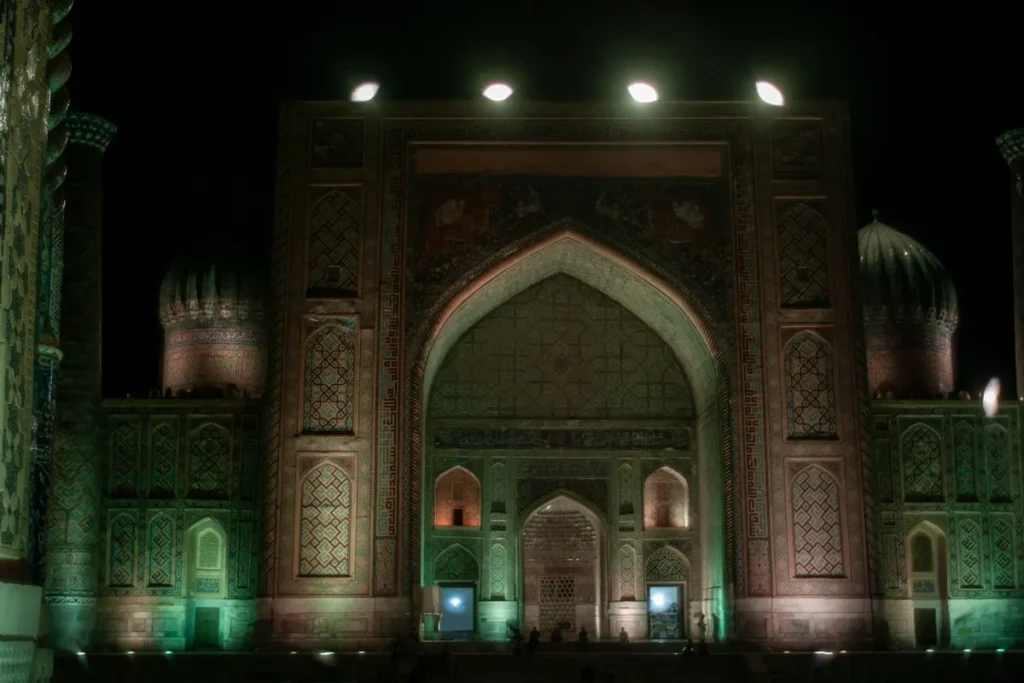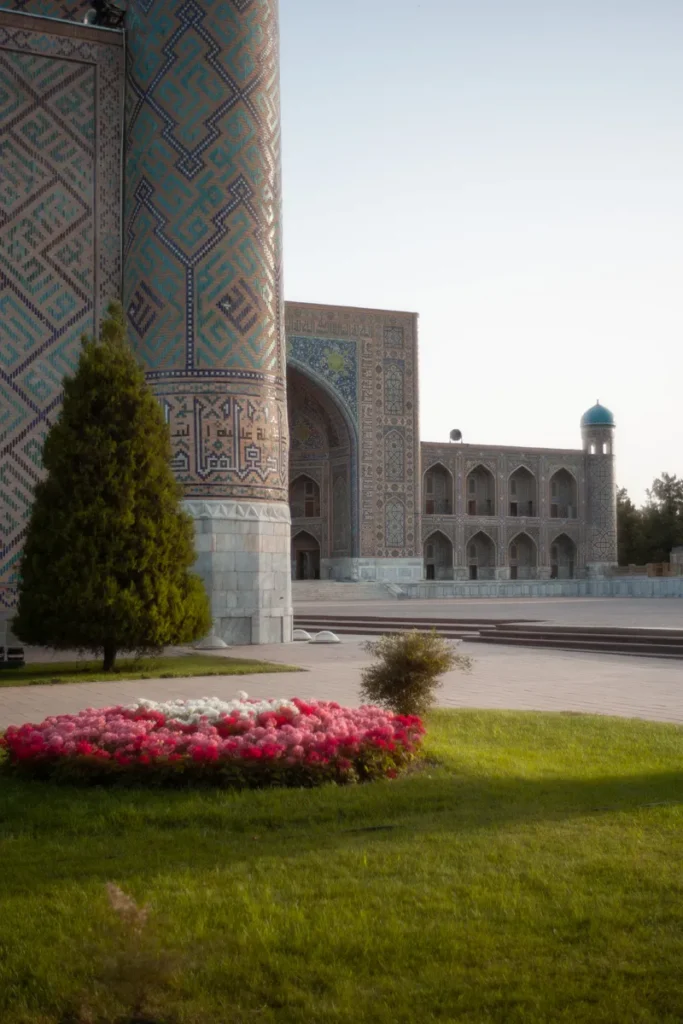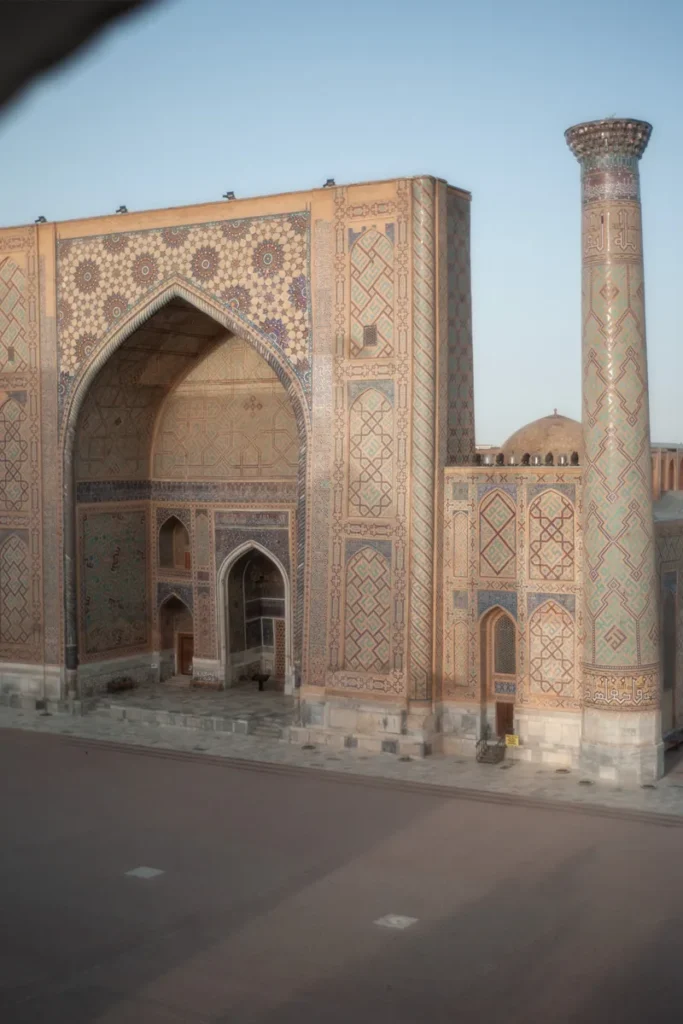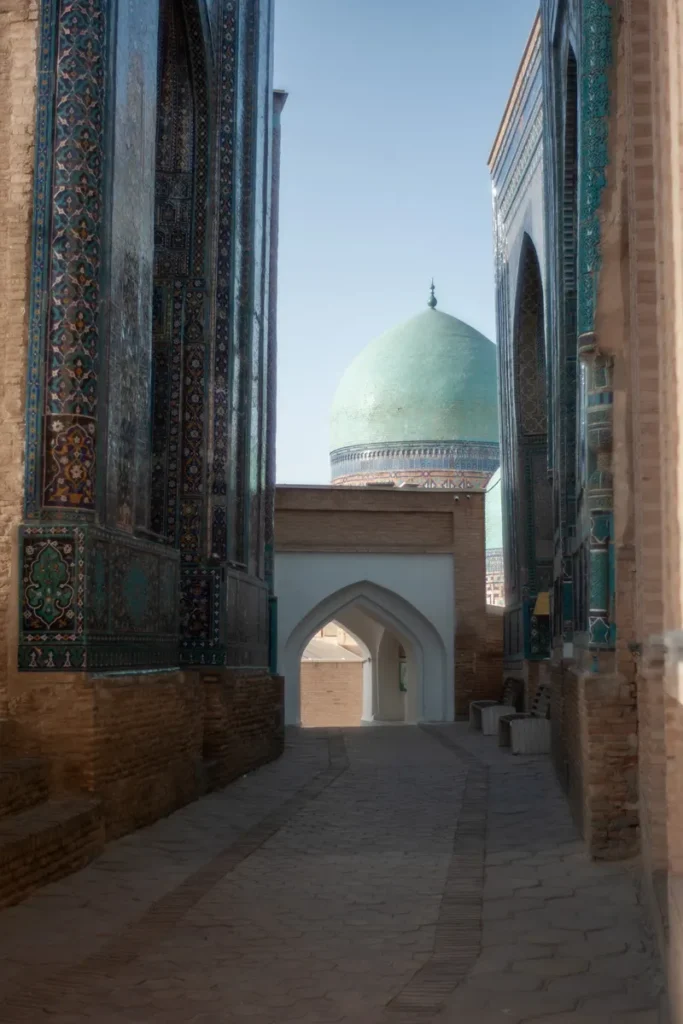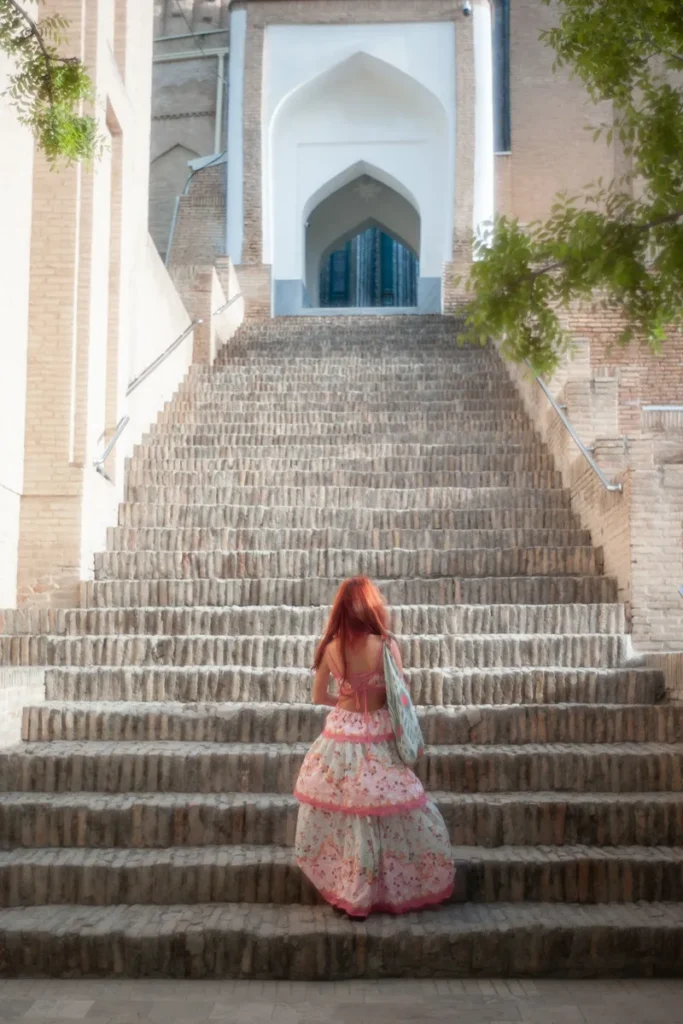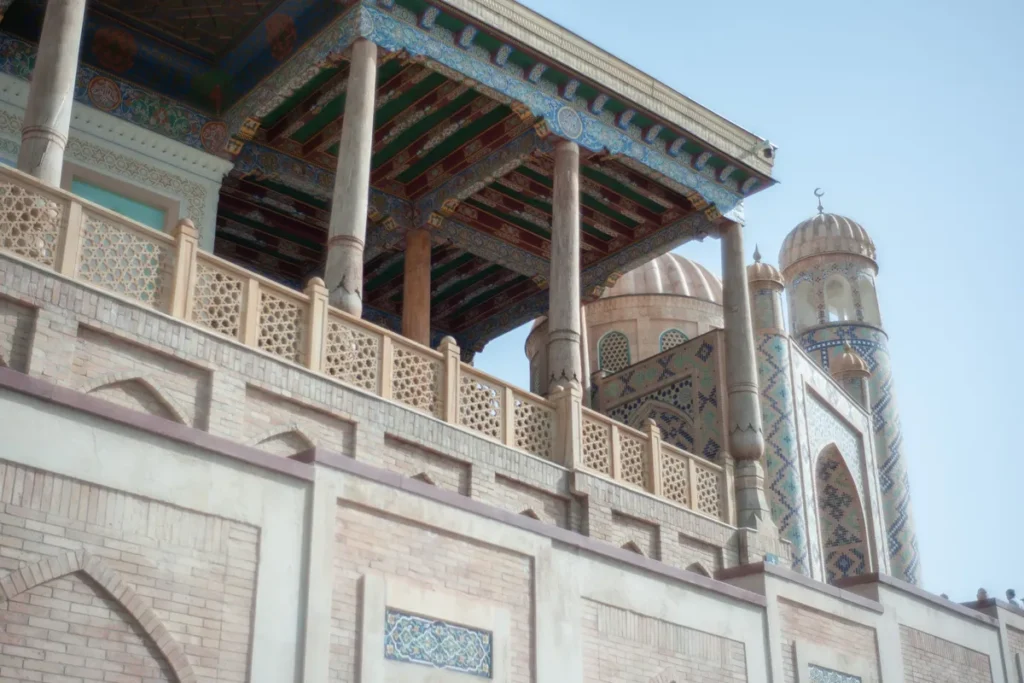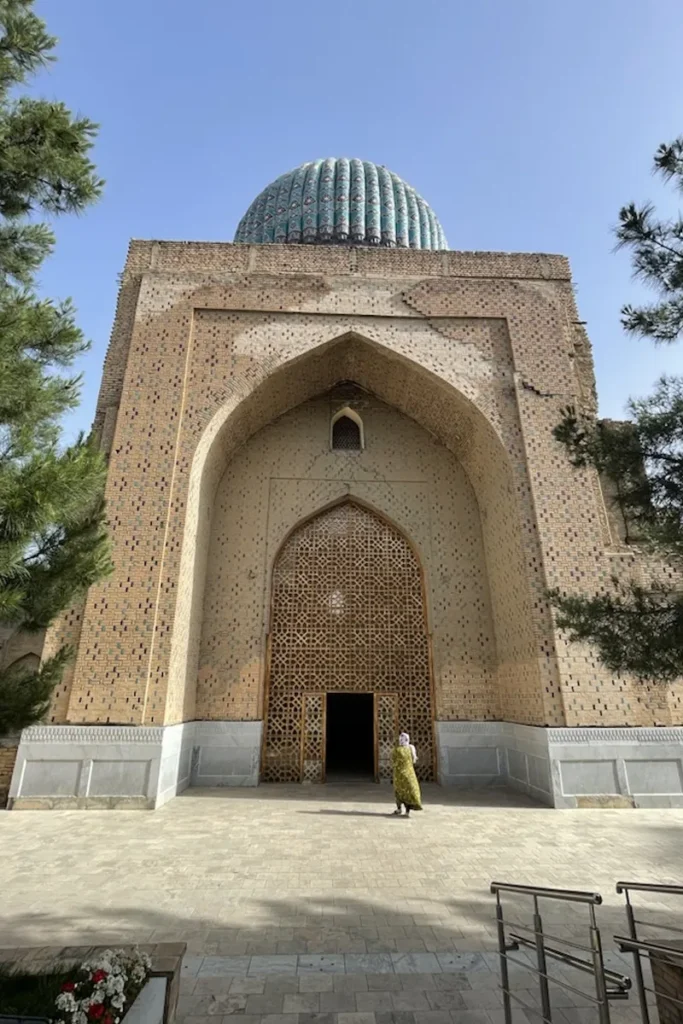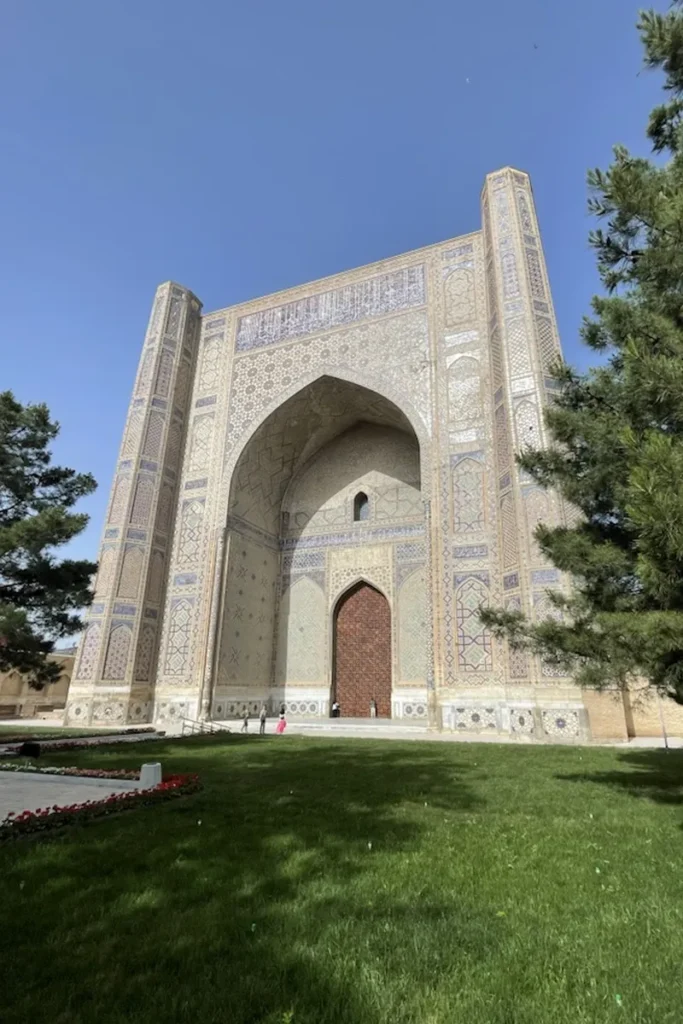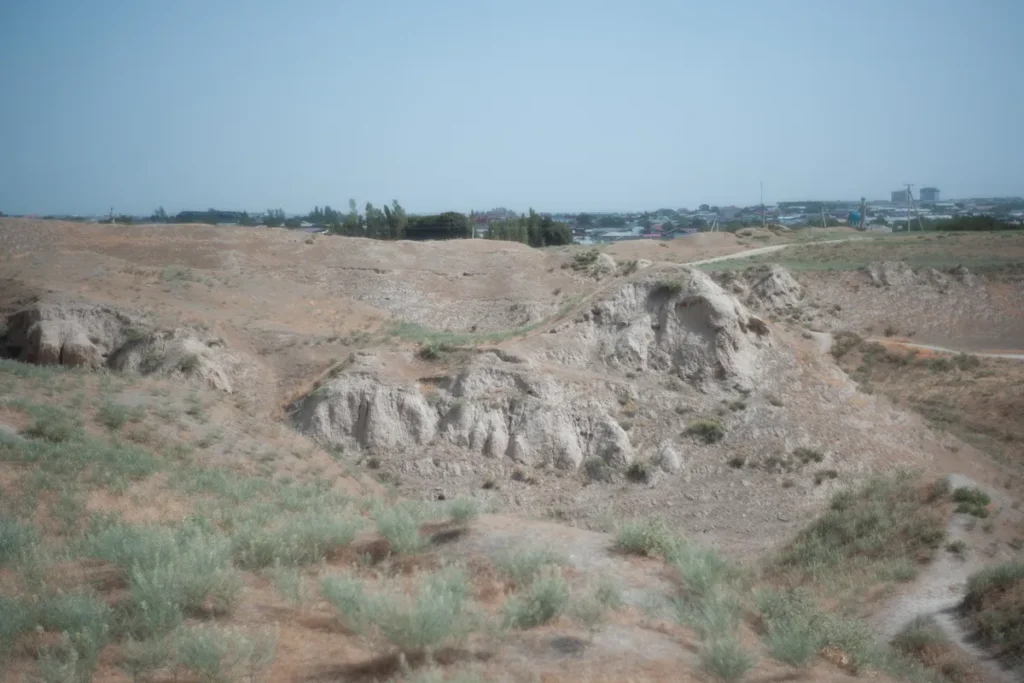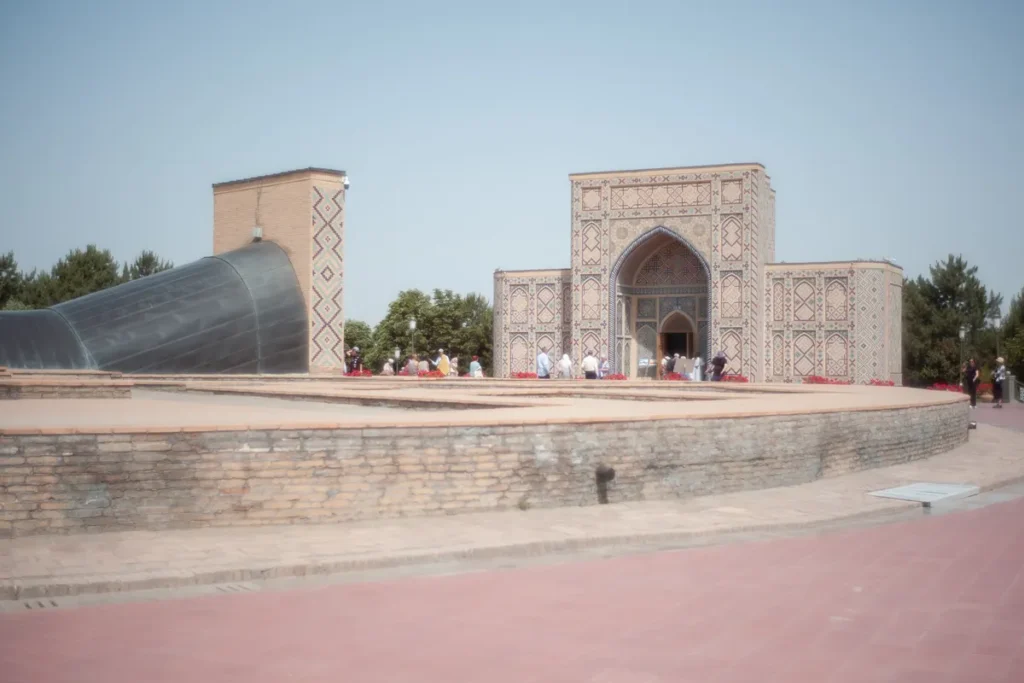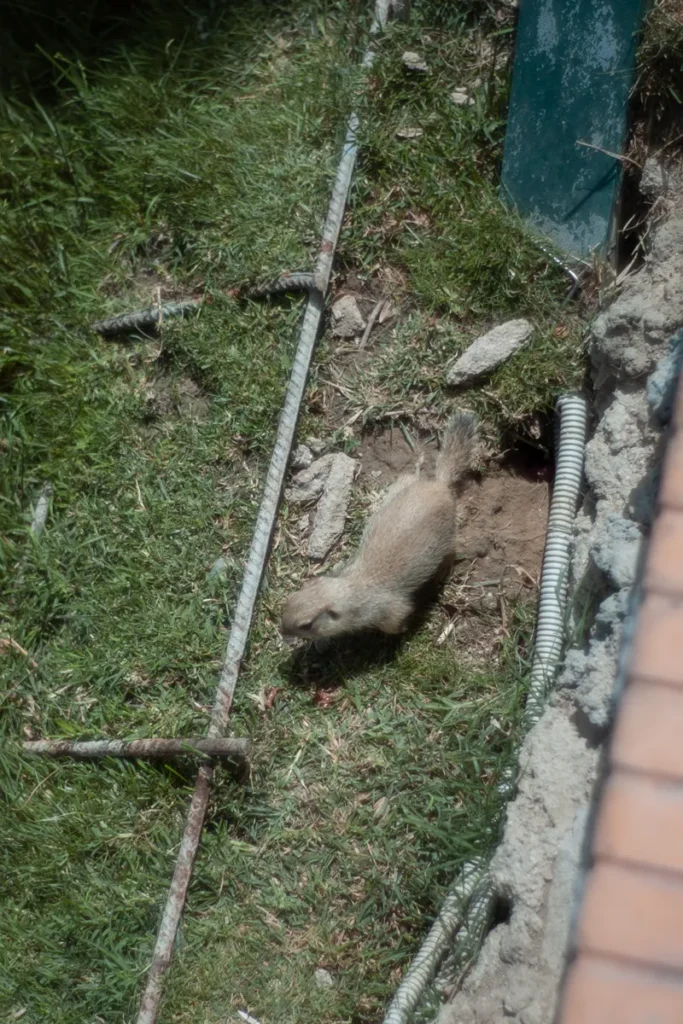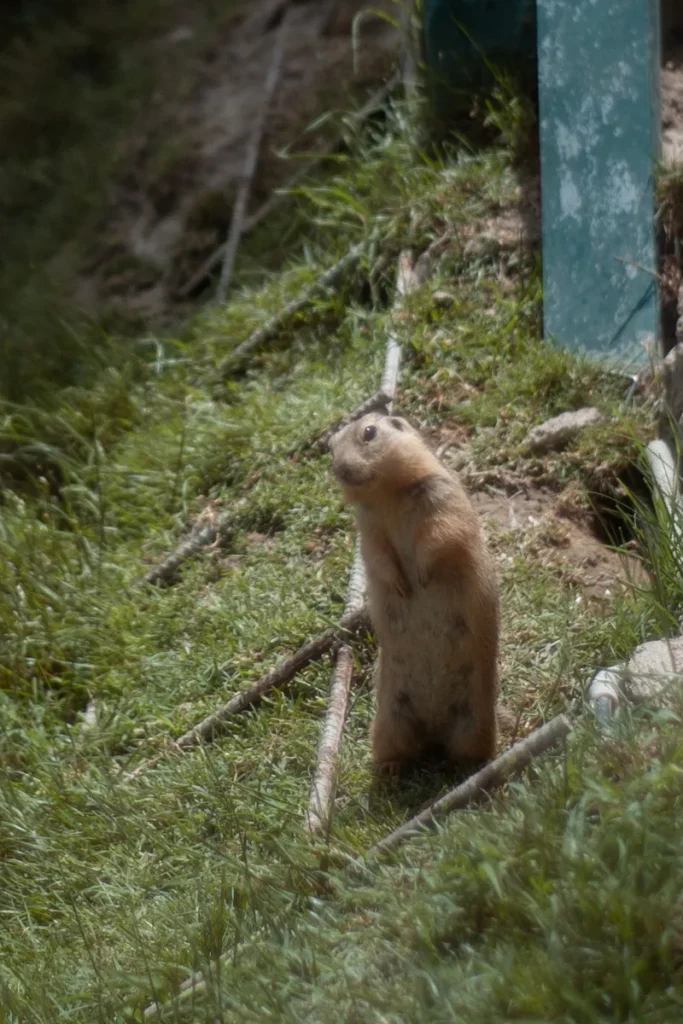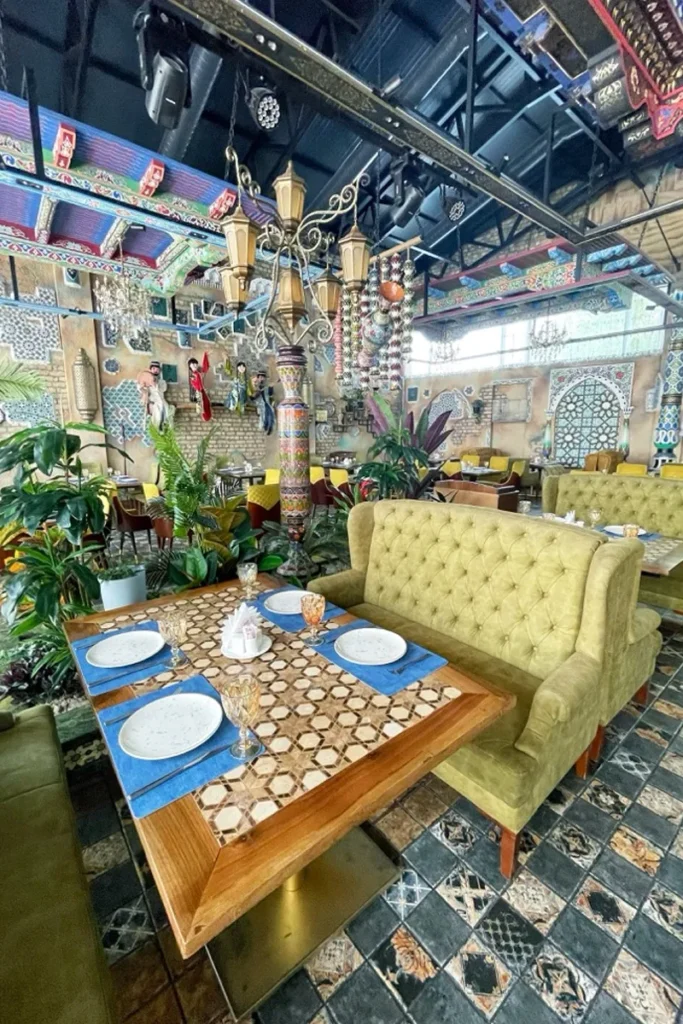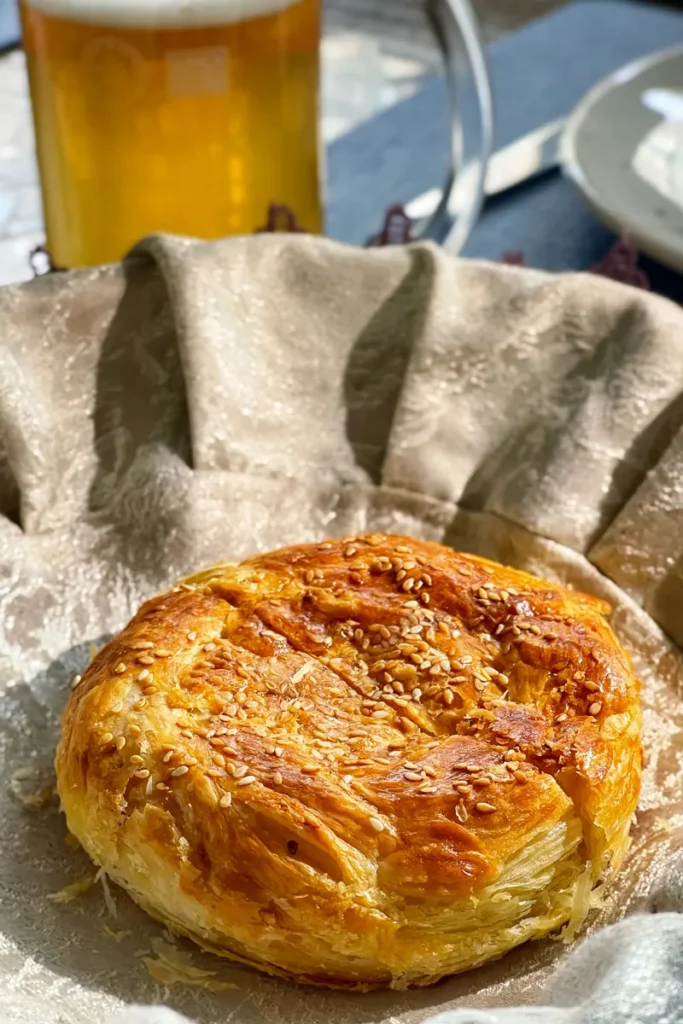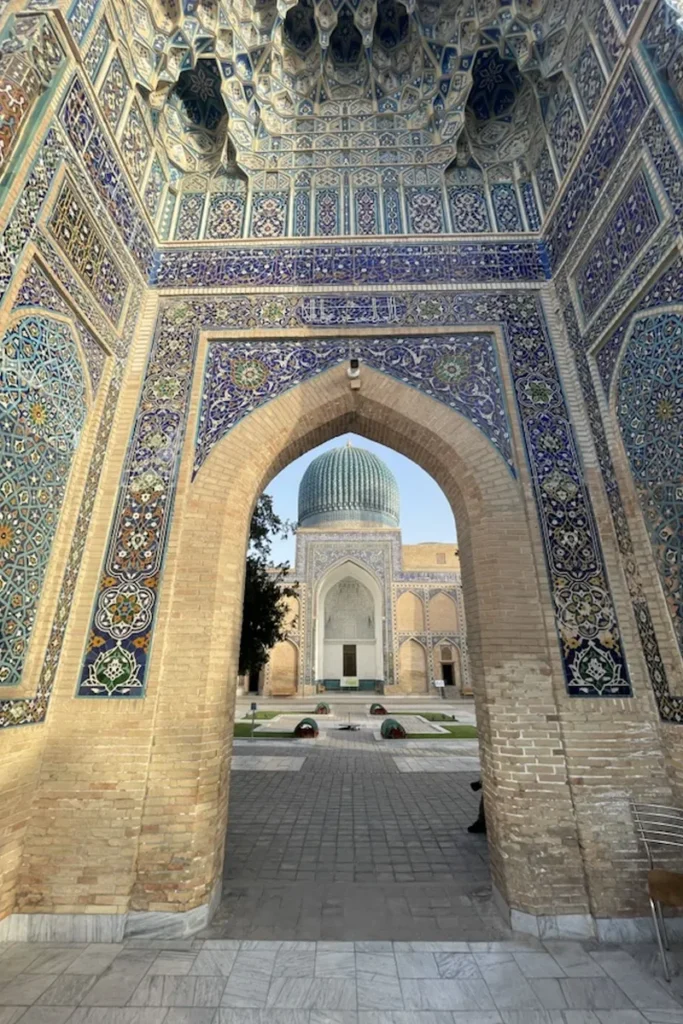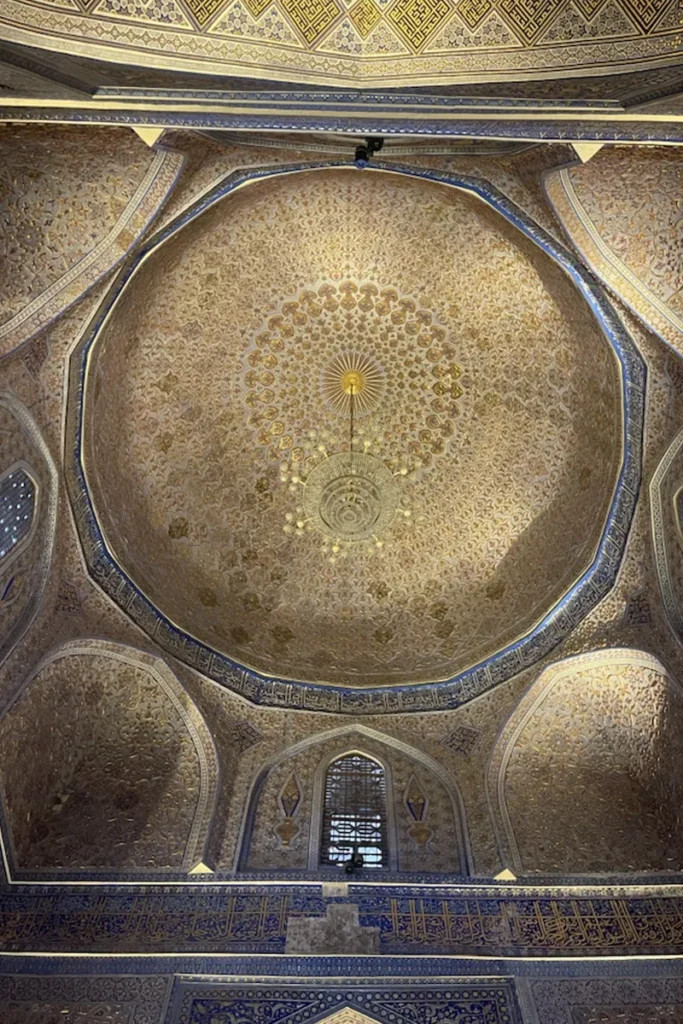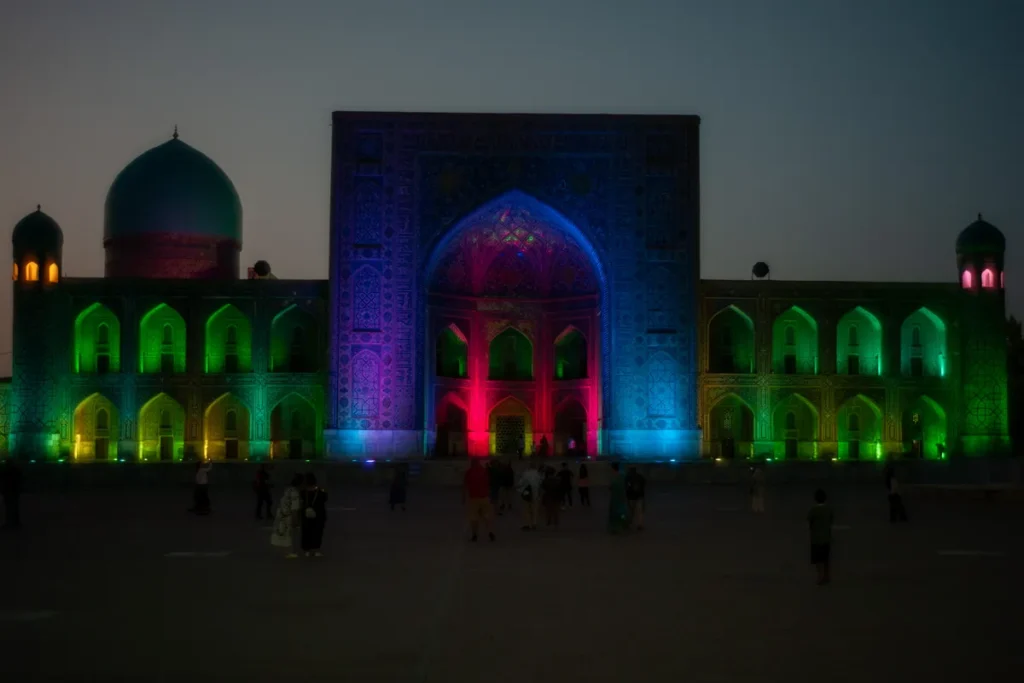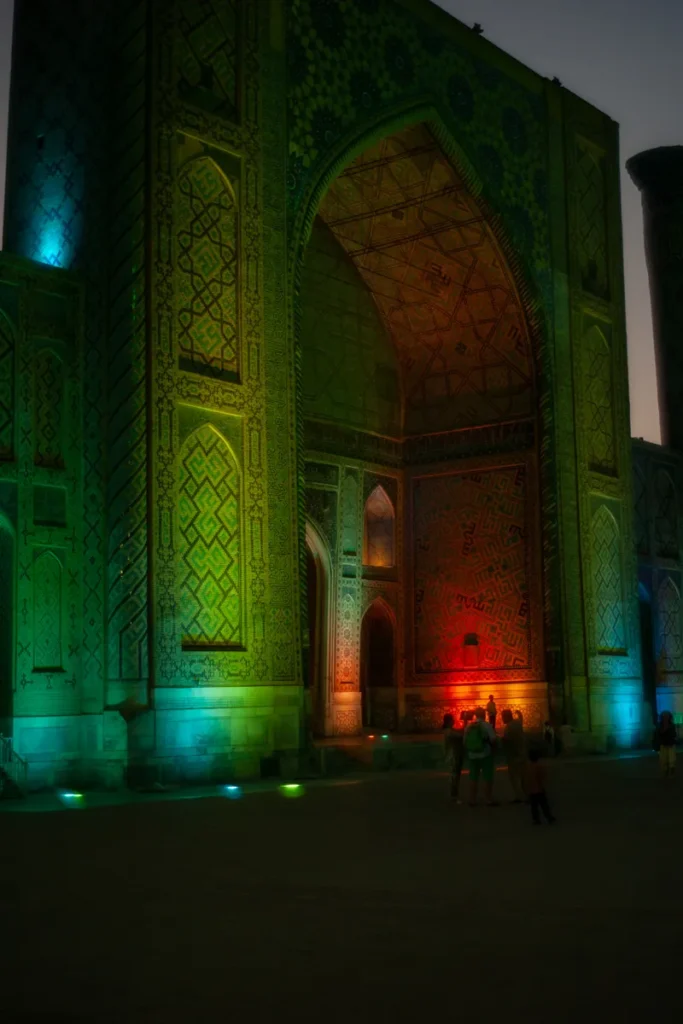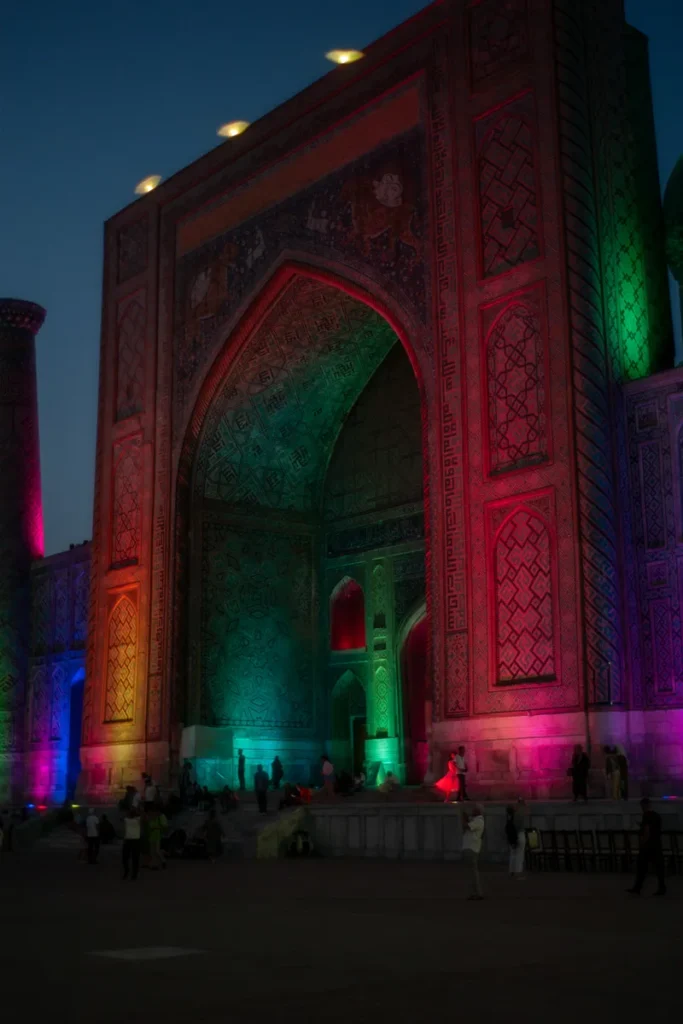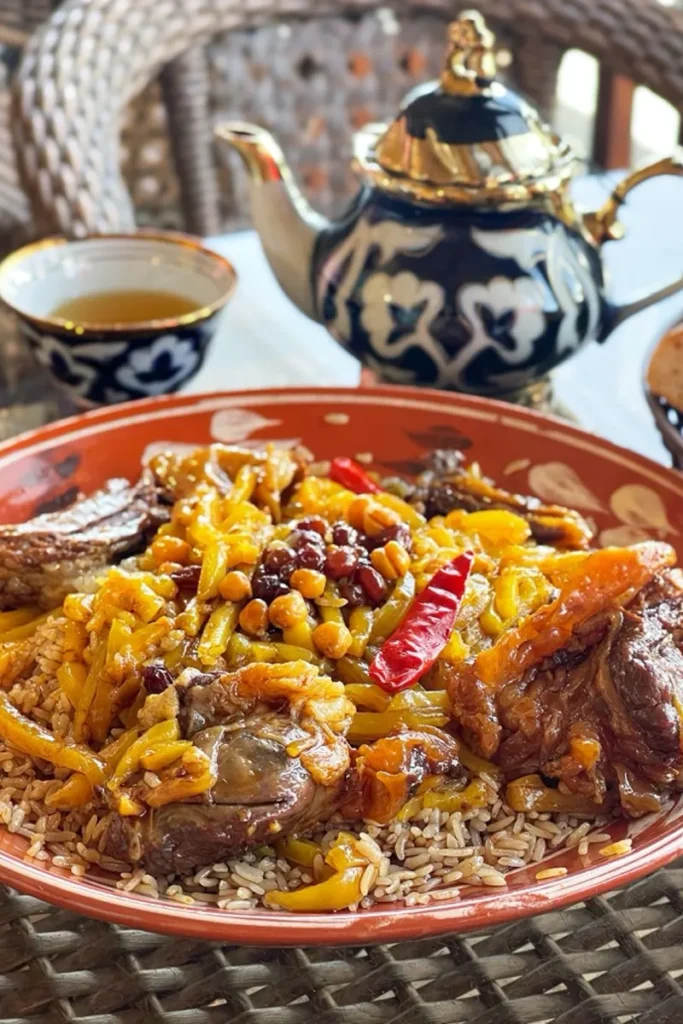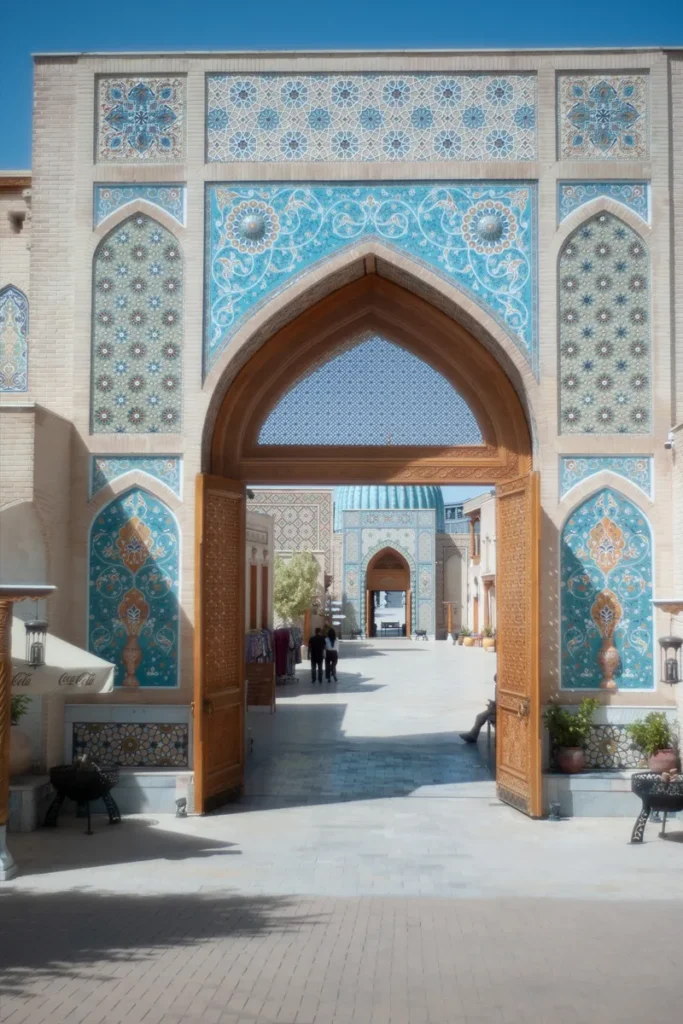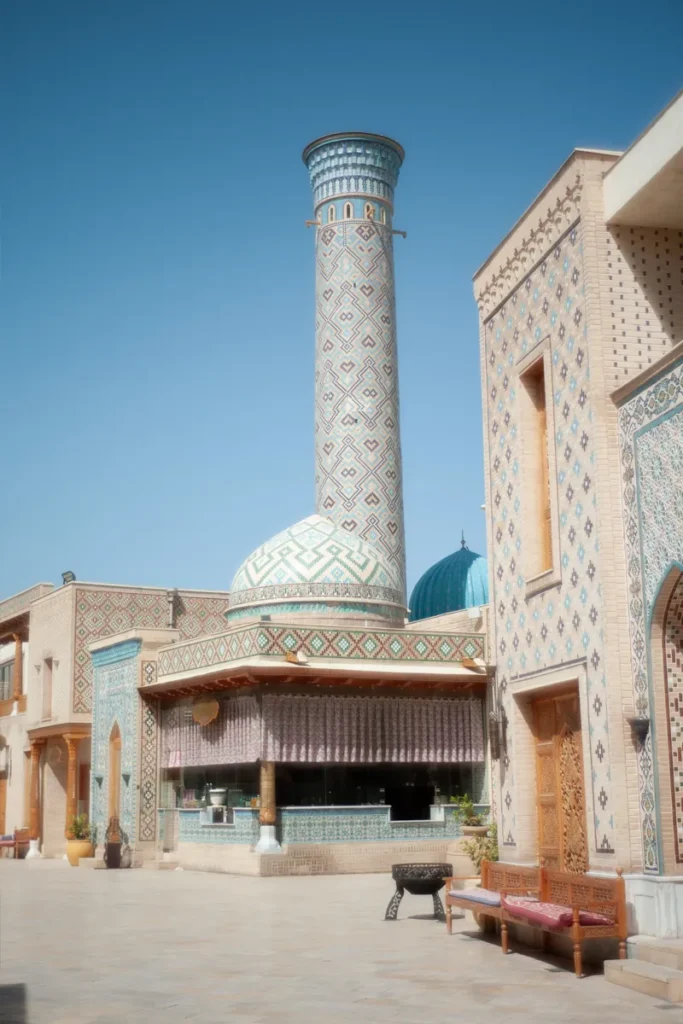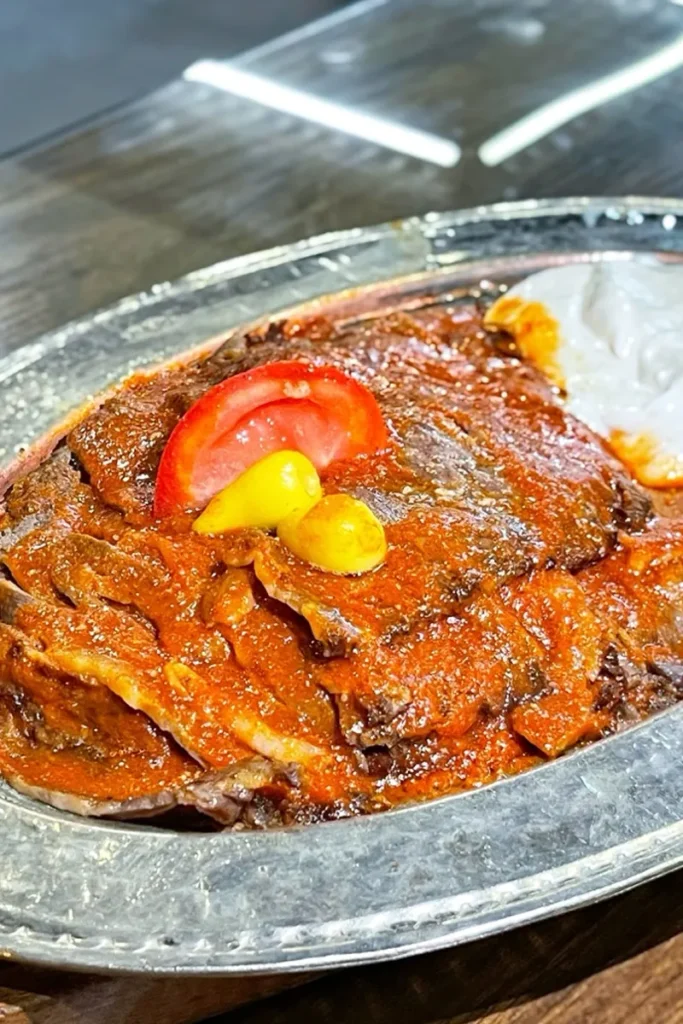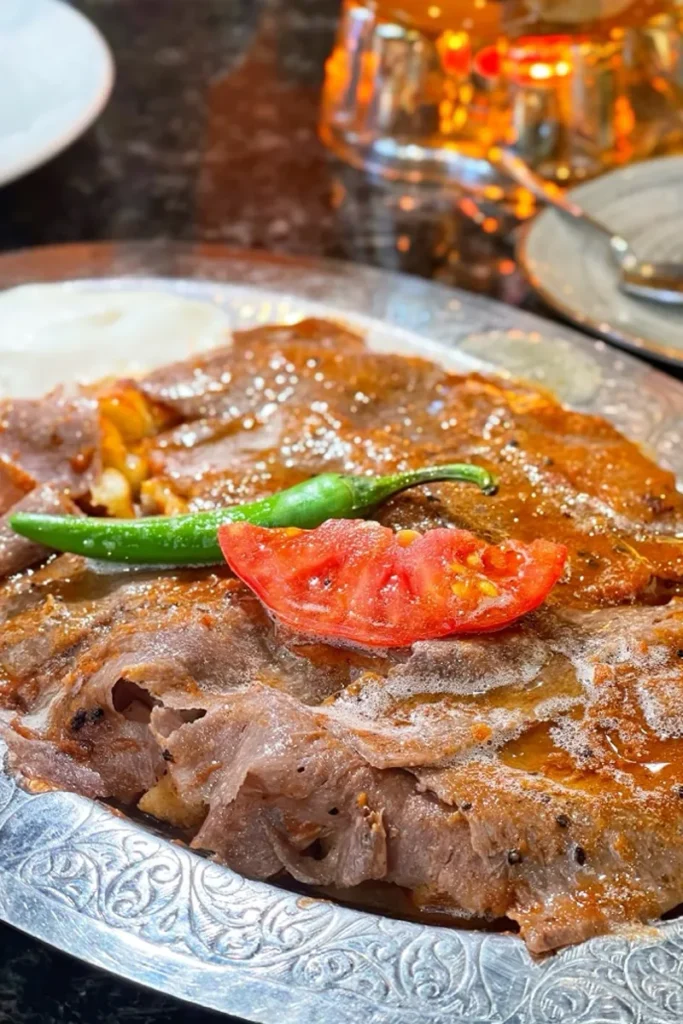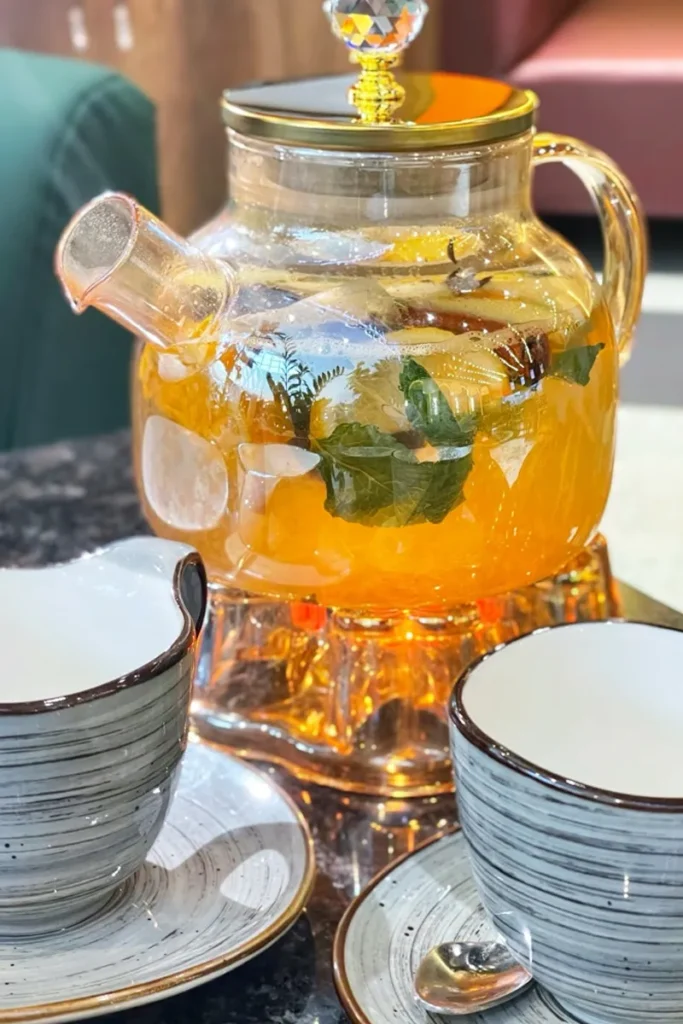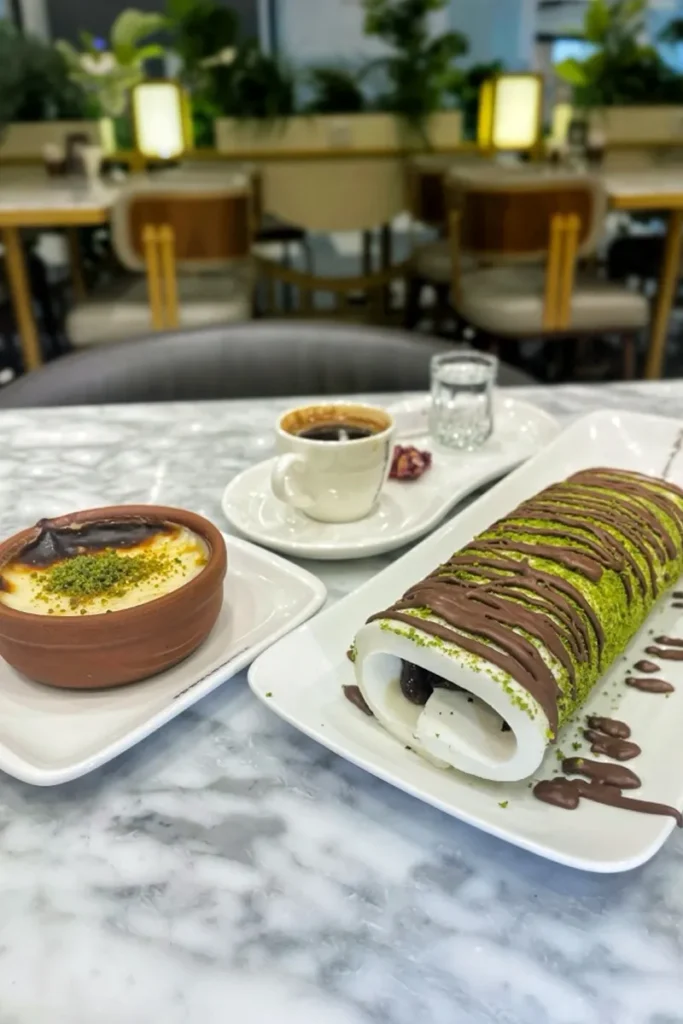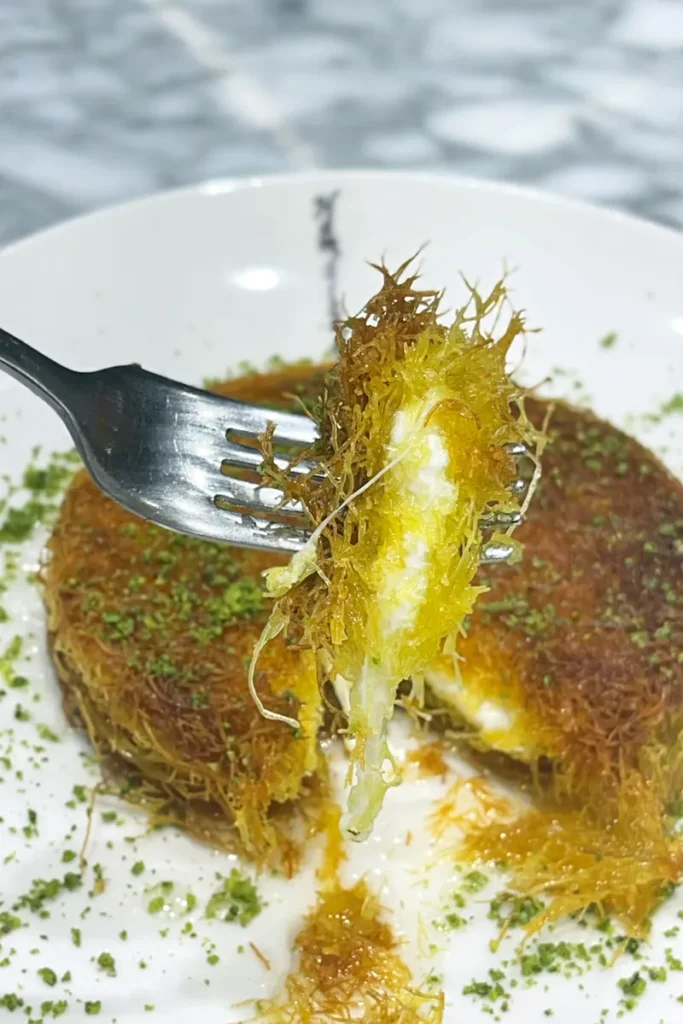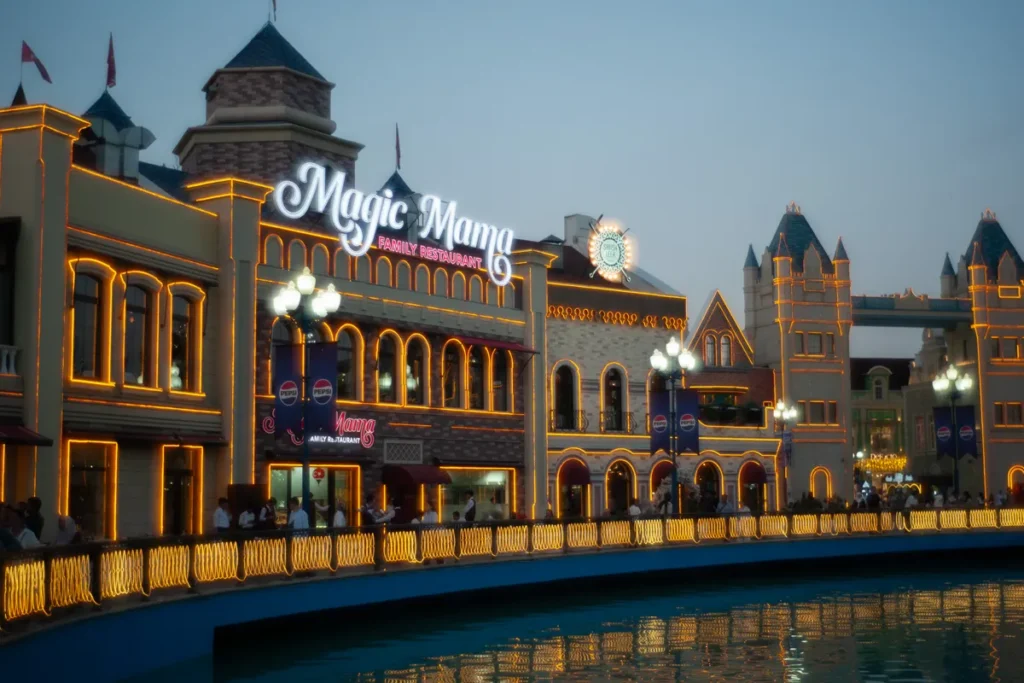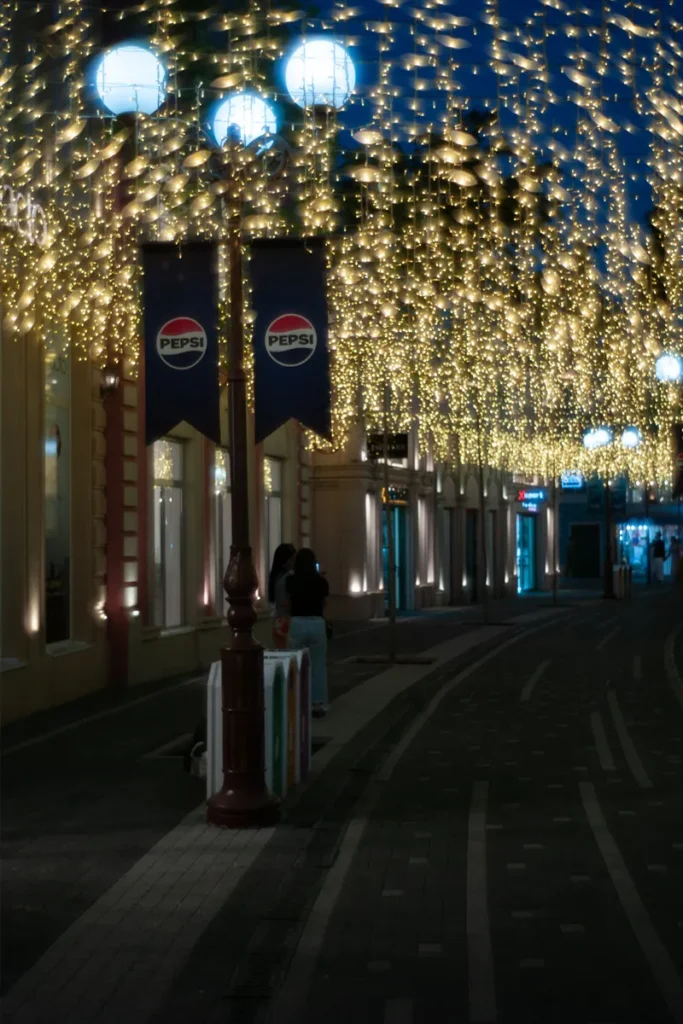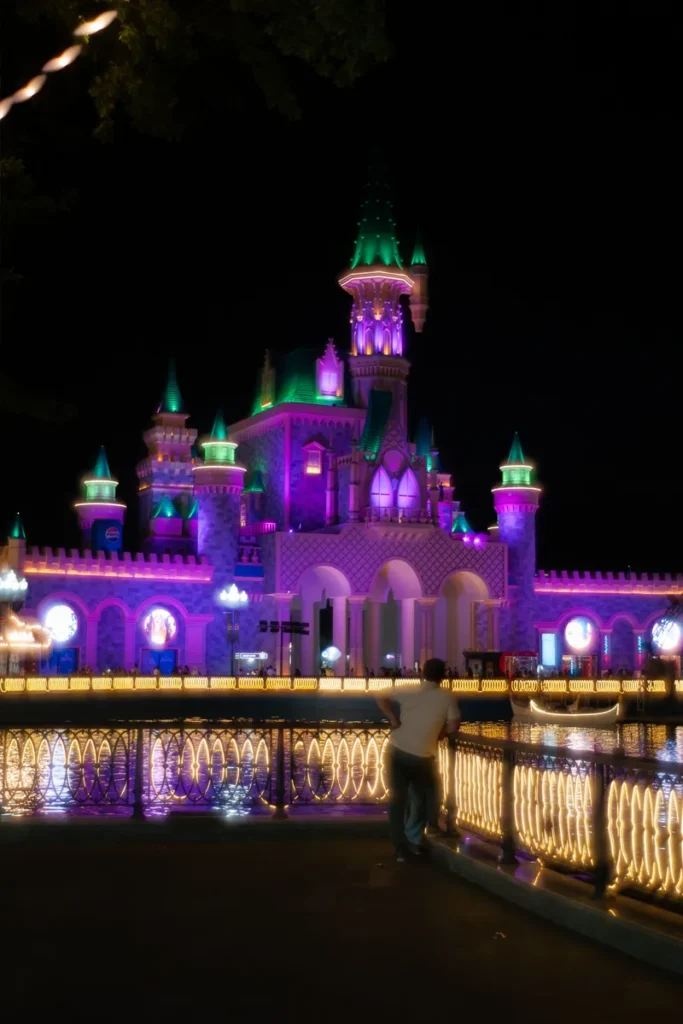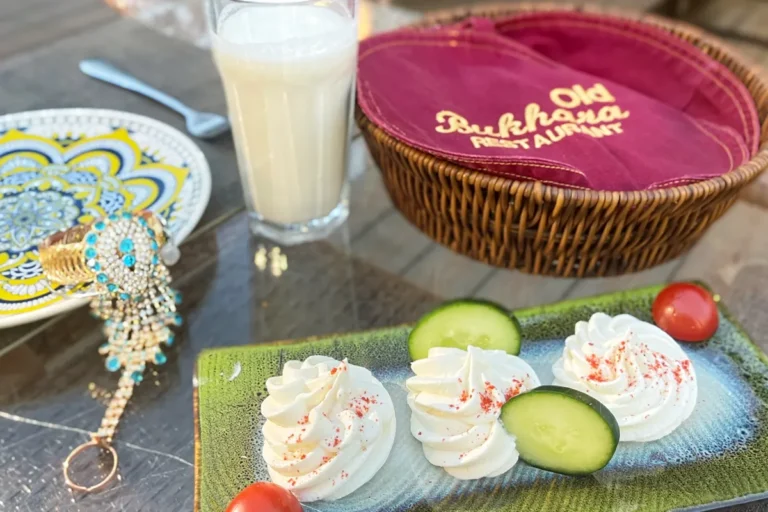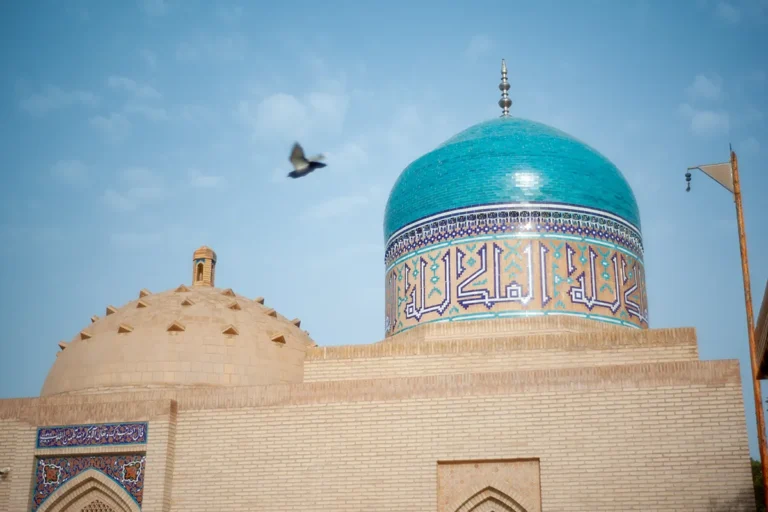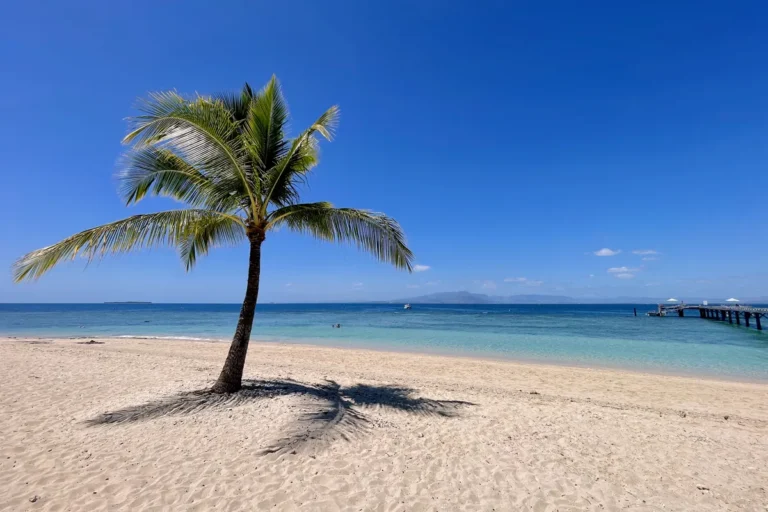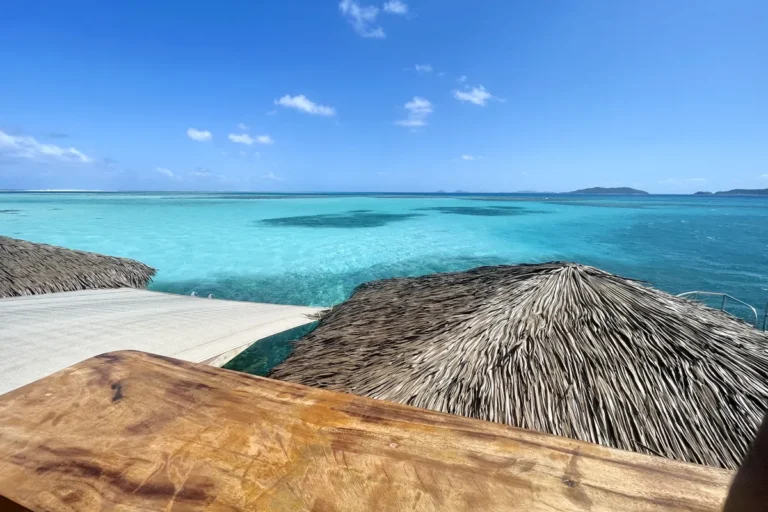Ten days is just the right amount of time to explore Uzbekistan’s legendary Silk Road cities without feeling rushed. I’m sharing the exact Uzbekistan 10-day itinerary I spent weeks developing. It covers the four main cities, hits all the major attractions, and leaves plenty of time to wander and soak in the culture.
This is a rather comprehensive article, so you’re in for a long and informative read. To kick off this guide, let’s first take a quick look at how your 10 days looks like.

Trip Overview

Day 0: Flight to Tashkent
Start your journey
Book your flight to Uzbekistan from your home country, with Tashkent as the most common international arrival point since it is the capital city. Several major airlines serve Tashkent, but if you choose to fly with Uzbekistan Airways, be aware that their official website can be tricky when processing foreign credit cards. If your payment does not go through, simply use third party booking platforms such as Expedia, Skyscanner, or a local travel agency, which often provide the same flights at comparable prices.
Uzbekistan Airways’ official website is known for having issues with credit card payments. If you’re unable to complete your booking, try using third-party platforms like Expedia — that’s what I had to do.
Day 1: Tashkent
Arriving Tashkent International Airport
Once you land in Tashkent, follow the airport signs toward immigration.
- Visa on Arrival: If you need one, the counter is located right in the middle of the immigration hall. Have your printed invitation letter ready and the $65 USD fee prepared in cash. Once your visa is issued, you can join the line at any immigration counter.
- E-Visa: Head straight to the immigration counters—there’s no need to stop at the visa desk. Present your printed e-visa along with your passport. The officers usually process e-visas quickly, and since there are multiple counters open, the wait time is often short. You should apply for your e-visa at least 3 working days before your trip, though applying a couple of weeks in advance is safer. Once issued, the e-visa is valid for 90 days from the date of issue, and it allows you to stay in Uzbekistan for up to 30 days per visit.
- No Visa Needed: You can head straight to the immigration counters. The process is generally quick, and there are plenty of counters open.
After clearing immigration, you’ll enter the baggage claim area. Here you can collect your luggage—or, if you want to get a head start, head to the money exchange counter on the left. The rates here are surprisingly reasonable, so it’s a good idea to exchange enough cash for the first few days.
When you’re ready to leave the airport, open the Yandex app and book a ride. Yandex is reliable, easy to use, and much cheaper than the airport taxis (which can charge up to 10 times more).
Download and use the Yandex app for a cheap and reliable ride to your hotel.
Besh Qozon
Kick-start your day with the most famous plov (pilaf) in Tashkent. Besh Qozon, which opens daily at 9:00 a.m., is best known for its giant pot of slow-cooked rice with lamb, carrots, onions, and spices. With over 3,000 reviews on Google Maps, it’s a must-visit for any traveler. Alongside plov, they also serve freshly baked Uzbek bread and other local specialties.
The restaurant is spacious, offering both indoor and outdoor seating. I recommend sitting inside, as the heat outdoors can become unbearable later in the day. If you’re feeling adventurous, try adding horsemeat to your plov—an ingredient that’s not commonly found in most countries.
Service is friendly and efficient, and the restaurant accepts credit cards. You can also take photos of the cooking area and watch as the chefs prepare their famous plov in massive cauldrons. It is part of the experience and worth seeing before you sit down to eat.
Minor Mosque
Just a 7-minute drive from Besh Qozon, the Minor Mosque offers your first glimpse of Uzbekistan’s stunning architecture. Completed in 2014, this relatively new mosque blends traditional Islamic design with modern touches. Open to everyone and free of charge, it’s a peaceful place where you can observe local worshippers, adding to the serene atmosphere.
The main prayer hall is reserved for male worshippers. Women can grab headscarves on the right side of the entrance.
Chorsu Bazaar
This local market is the largest and most famous bazaar in the city, a must-visit site. The main section is housed under a massive turquoise dome visible from afar, you can’t miss it. Inside, vendors overflow with fresh produce, spices, nuts, herbs, and butchered meats. It’s a great way to experience local offerings and see how people live. Surrounding the dome are numerous shops, making it a perfect place to spend an hour or two exploring.
The main part of the market is indoors, making it a great option if you want to escape the blazing sun during the day.
Khast Imam Complex
This complex is the historic and spiritual heart of Tashkent, a must-visit for anyone interested in Islamic culture and architecture. It is relatively large compared to other attractions in the city, spread across several buildings that you can really take time to admire. The complex houses several important structures, including the Barak-Khan Madrasah, Tillya Sheikh Mosque, and the Muyi Muborak Library, where the famed Uthman Quran is kept. Walking through the courtyards, you’ll see intricate tilework, carved wooden doors, and peaceful spaces where locals come to pray. It’s a great way to experience the city’s rich religious heritage and admire centuries-old craftsmanship. We spent some time exploring, though the main open square was unfortunately under construction during our visit, so we couldn’t fully enjoy the view of the mosque.
Mustaqillik Maydoni/Monument of Independence
Now, head east to Mustaqillik Maydoni, the largest and most important square in Tashkent, symbolizing Uzbekistan’s independence. This modern open space is lined with fountains and gardens and surrounded by government buildings. The square connects to the famous Amir Timur Square via Sailgokh Street, Tashkent’s Broadway, making it the perfect starting point to explore three nearby attractions.
Tashkent Metro Station
While strolling through Mustaqillik Maydoni, head down the stairs and hop on the famous Tashkent Metro. A one-way ticket costs just 3,000 som (about 25 cents USD), and you can pay with a credit card. Some of the most beautiful stations include Alisher Navoi, Mustaqillik Maydoni, Yunus Rajabiy, and Ming Orik. Since Mustaqillik Maydoni is just a short stop from Alisher Navoi, I suggest heading there first to snap some photos. Each station has its own unique design and atmosphere, almost like walking through a series of underground museums, so you could easily spend hours exploring the metro.
Broadway Street (Sailgokh Street)
After you surface from the metro, walk from Independence Square to Amir Timur Square via this beautifully paved and tree-lined pedestrian street. Cafes, restaurants, and street vendors line both sides, making it lively and fun. There are even ping-pong tables you can use! I recommend grabbing a drink and sitting down to people-watch and soak in the local atmosphere.
Amir Timur Square
The Amir Timur Statue is arguably the most famous artwork in Tashkent, often photographed with Hotel Uzbekistan in the background. The statue stands in a wide, open square surrounded by lush greenery. Licensed photographers roam the square, offering professional portrait sessions for just 100,000 som for a couple’s photoshoot. They are skilled and legitimate, taking both photos and videos and transferring the files to you via a USB flash drive on the spot. I used their service and was very happy with the results.
Uzbekistan Hotel
This is the final stop of the day, the iconic Hotel Uzbekistan, standing in all its glory just as it has since it was built in 1974. The hotel is a striking example of Soviet-era architecture, with its bold, symmetrical façade and classic lines, perched high behind Amir Timur Square. Over the years, the hotel has welcomed dignitaries and travelers alike, serving as both a symbol of Tashkent’s history and a reminder of the city’s modern transformation. Even from a distance, its towering presence and historic charm make it impossible to miss.
Cafe 1991
Wrap up the day at Cafe 1991, a fairly upscale restaurant about a 10-minute walk from Amir Timur Square. Highly praised as the top-ranked restaurant on TripAdvisor with over 400 Google Maps reviews, reservations are encouraged but not necessary. I was able to walk in and sit in a booth on the first floor. We ordered a large lamb shank with potatoes, an appetizer, Uzbek bread, and a local Uzbek beer and wine. It was the perfect ending to our first day in Tashkent.
Day 2: Tashkent to Khiva
Fly from Tashkent to Khiva
Today we embark on a journey to Khiva, just 1 hour and 30 minutes hours away by plane. Since traveling domestically, you only need to arrive 2 hours before the departure time, allowing ample time for a nice breakfast in Tashkent before leaving.
Arriving Urgench
Urgench International Airport is a very small domestic airport with only 1 baggage claim belt so you will get your luggage in a very short amount of time. Grab your bags and hop on a Yandex to Hotel Farovon Khiva for about 97,000 som (~$8 USD).
Hotel Farovon Khiva
Hotel Farovon Khiva is the only modern starred hotel in the city. Although it is not located inside the walls of Itchan Kala, it is less than a five-minute drive away, which makes it very convenient. This is the hotel I would recommend because most of the others in Khiva are more rustic and traditional, which may not feel as comfortable, especially if you are traveling with your wife. Farovon is a large property with all the amenities you would expect from a starred accommodation. Since it opened in 2021, everything is new, modern, and designed for comfort.
Terrassa Cafe & Restaurant
By now, you’ve probably worked up an appetite, and there’s no better time to visit the best restaurant in Khiva. Make sure to call ahead and reserve a table a day in advance while you’re still in Tashkent. Request a rooftop table with a view, as many rooftop tables are set away from the edge and don’t offer the full panorama. For a more comfortable option with air conditioning, tables just below the rooftop with glass windows also provide a good view, but for the ultimate experience, dine on the rooftop. The best time to go is just before sunset, depending on the time of year. If you arrive in the afternoon, I recommend sitting indoors by the window, but for dinner, the rooftop is perfect—enjoy your meal while watching the sunset and admiring the beauty of old town Khiva.
I recommend the following dishes, accompanied by beer or wine for the best experience.
- Koverduk (beef goulash): a hearty Khorezm stew of tender beef chunks simmered with potatoes, onions, and tomatoes in a rich, savory sauce.
- Shivit Oshi: a traditional Khorezm dish of bright green dill-infused noodles topped with a rich meat and potato stew, usually served with sour cream.
- Mix Barak: A traditional Uzbek dumpling dish featuring a colorful assortment of fillings, with green dill-infused and yellow pumpkin doughs, served with a tangy yogurt sauce.
- Shashlik: a charcoal-grilled trio of skewered meats—lamb, beef, or chicken—served with fresh vegetables and flatbread, presented in a long, eye-catching arrangement.
Itchan Kala (night)
After a local dining experience at Terrassa Cafe & Restaurant, stroll around the famous old town (Itchan kala) at night. That wraps up the first day in Khiva.
Day 3: Khiva
Itchan Kala
Wake up early on your day 3 to explore Itchan Kala, Khiva’s walled old town and a UNESCO World Heritage Site filled with mosques, madrasas, and minarets from the Silk Road era. Start at the south gate with a ticket (250,000 som) that covers the main sights.
See the turquoise Kalta Minor Minaret, the column-filled Juma Mosque, and the ornate Tosh-Hovli Palace. Climb the Islam Khoja Minaret for the best sunset views, then wander through the Kunya Ark citadel and the peaceful Pahlavon Mahmud Mausoleum. Exact locations of these major attractions are shown on the map when you purchase your ticket so finding them are quiet easy.
Take your time as you have the entire day to walk around Itchan Kala and soak in the ancient architecture and peacefulness while they exist. Every corner inside the walls will make you feel like stepping back in time. It’s pure magical.
Tea house Mirza Boshi
For lunch, make your way to Tea House Mirza Boshi, right in the heart of Itchan Kala—you really can’t miss it. The place fills up quickly around midday, with both locals and travelers enjoying its shaded courtyard and blessed air conditioning.
Here are a few local favorites I recommend trying:
- Ayran – A cool, tangy yogurt-based drink that’s perfect for beating the desert heat.
- Plov – Uzbekistan’s national dish, a hearty mix of rice, carrots, onions, and tender chunks of meat, all simmered together for rich flavor.
- Shish Kebab – Skewers of grilled lamb, beef, or minced meat, smoky and juicy straight off the grill just outside the restaurant.
- Uzbek Nan – Round, fluffy bread with a crisp crust—ideal for dipping or just tearing apart alongside your meal.
It’s simple, tasty, and exactly the kind of meal you want in between exploring the maze-like streets of Khiva.
After lunch, escape the heat with a rest at your hotel. By evening, you’ll be refreshed and ready to enjoy dinner and explore Khiva’s cooler, magical night atmosphere.
Khiva Moon
Khiva Moon is located near the south entrance of Itchan Kala, and you can easily reach it by calling a Yandex from your hotel and getting dropped off right at the restaurant. It sits in a quiet alley surrounded by local homes, which gives it a welcoming and authentic feel. Once inside, you will find a spacious outdoor courtyard that feels more like someone’s private home than a restaurant.
One of the highlights here is the traditional Uzbek Tapchan sofa. These are raised wooden platforms with cushions and a low table in the center, designed for lounging, sharing food, and relaxing with friends. It is the most comfortable and authentic way to enjoy your meal, and I definitely recommend choosing one if you can.
The restaurant has excellent reviews on Google and TripAdvisor, and around 7:30 in the evening they play live Uzbek music. Plan your dinner here and you will get to enjoy both a delicious meal and an intimate musical experience.
Itchan Kala (night)
After enjoying a relaxing dinner with live music at Khiva Moon, take a short five-minute stroll to Itchan Kala’s south gate and experience the city’s magical atmosphere at night. The streets come alive with souvenir stalls offering items at very reasonable prices, along with balloon vendors who let you pose with their colorful balloons for memorable photos.
Day 4: Khiva to Bukhara
Private car from Khiva to Bukhara
Today marks the longest road trip of the Uzbekistan journey, and it is also one of the most rewarding. Instead of heading straight from Khiva to Bukhara, we take a detour into the desert to visit five incredible fortresses that most travelers never see. The entire journey takes about 12 hours, yet it never feels overwhelming because the drive is broken up with fascinating stops at each fortress along the way.
Here’s what you’ll see along the way:
- Kizil Kala – The first stop, about an hour from Khiva. This rectangular fortress was built around the 4th century and once formed part of the defense system for nearby Toprak Kala. Its tall mudbrick walls still rise proudly against the desert backdrop.
- Toprak Kala – Just 10 minutes further lies the ancient capital of Khorezm, dating back to the 3rd century. Here you can explore palace ruins, ceremonial halls, and the remains of once-grand architecture.
- Akchakul Lake – A peaceful desert lake where you can stretch your legs, take in the scenery, and enjoy lunch before continuing the road trip.
- Kavat Kala – A smaller but important fortress that once played a strategic role in protecting trade routes through the desert.
- Ayaz Kala – About 30 minutes beyond Kavat Kala, this is perhaps the most spectacular fortress of the day. Perched high on a rocky hill, it offers sweeping desert views. Dating back to the 4th century BCE, it is considered the highlight of the Khorezm fortresses.
- Guldursun Kala – The final fortress of the journey, once one of the largest defensive structures in the region. Its massive walls still stand as a reminder of its powerful past.
After visiting all five, it takes another 4 to 5 hours of driving before you arrive in Bukhara by evening. It is a long day, but the desert forts make the journey unforgettable.
You can book this road trip through Islambek Travel, which offers a sedan with driver for around $94. I have no affiliation, just sharing the company I used. Our driver was arrived promptly in the morning and was very friendly (although spoke very little English).
Instead of taking the high-speed rail, book a private car from Khiva to Bukhara and visit 5 deserted fortresses on the way.
Wyndham Bukhara
Check into your hotel of choice, or as I would recommend, the Wyndham Bukhara. It is just a 5-minute Yandex ride south of Lyabi, the heart of the old town. This international 4-star chain hotel offers modern decor and reliable infrastructure, which can be a welcome comfort after a long road trip.
If you prefer to stay within walking distance of Lyabi itself, there are options in the area. However, most are 3-star hotels or family-run homestays rather than full-service accommodations.
Lyabi Khause Square/Nadir Divan Begi Khanaka
At the very heart of Bukhara lies Lyabi Khause Square, a historic pond framed by centuries-old architecture and shaded by mulberry trees. Around it you will find tea houses, restaurants, and shops, making it the city’s most vibrant gathering place. This is the spot to settle into a chair by the water with a cold beer and some Uzbek skewers, or simply wander the surrounding streets in search of your favorite souvenirs. No matter how you spend your time, you will find yourself returning to Lyabi Hauz again and again during your stay in Bukhara.
Old Bukhara
With more than 2,000 reviews on Google Maps and nearly 1,000 on TripAdvisor, Old Bukhara is widely regarded as one of the best restaurants in the city. Located just north of Lyabi Hauz, it is just a few minutes’ walk from the pond, making it incredibly convenient for a relaxing lunch or dinner.
The restaurant offers plenty of seating, including a second-floor balcony that overlooks live performances in front of Nadir Divan Begi, a museum right by the pond. The menu features classic Uzbek dishes, from flavorful plov to juicy lamb chops, alongside freshly baked non bread. The interior is cozy yet elegant, with traditional decor that gives a sense of Bukhara’s rich cultural heritage. Live music and local performances often accompany your meal, creating a lively atmosphere that perfectly complements the historic surroundings.
After dinner, take a leisurely stroll around the area to browse shops, watch locals and travelers go by, and soak in the unique Bukhara atmosphere on your first night. Unlike Khiva, Bukhara feels more modern and commercial, yet it retains its charm and is just as enjoyable and relaxing to explore.
Day 5: Bukhara
Po-i-Kalyan Complex/Kalan Mosque/Miri Arab Madrasah
Start your day early as the day gets hotter as the sun rises. I recommend leaving the hotel at 5:00am and head to one of the most famous complex in Bukhara, the Po-i-Kalyan Complex, which includes the Kalan Mosque and Miri Arab Madrasah. Starting this early gives you the entire place to yourself, taking photos without anyone in the shot. Spend roughly 30 minutes is enough to explore the surrounding areas.
Start your day early to beat the crowd and the heat. I recommend leaving the hotel at the latest 5:30am so that you can arrive before sunrise.
Bolo Hauz Mosque
After admiring Po-i-Kalyan, head west and pass the Ark of Bukhara to reach Bolo Hauz Mosque. This charming mosque, built in the early 18th century, is known for its elegant wooden columns and intricately carved ceiling that create a welcoming, airy space for prayer. Its name, which means “above the pond,” comes from the small water reservoir in front of the mosque, reflecting the building and adding a serene touch to the surrounding area. The mosque’s understated beauty and peaceful courtyard make it a lovely contrast to the grandeur of nearby landmarks.
Ismail Samani Mausoleum
Continue heading west by foot toward Samonids Recreation Park to see the famous Samanid Mausoleum, built in the 10th century for the Samanid family. This small but historically significant structure is one of the oldest surviving monuments in Bukhara, known for its intricate brickwork and elegant proportions. There is a small entrance fee to go inside, but many travelers find that the exterior alone is enough to appreciate its beauty and architectural significance.
Ark of Bukhara
Head back east toward the Ark of Bukhara, which opens its doors at 8:30 a.m. Purchase your tickets at the gate and step inside to explore this massive fortress complex, once the residence of Bukhara’s emirs. Inside, you’ll find a fascinating mix of palaces, harem quarters, courtyards, and museums that showcase the city’s rich history and culture.
One fun feature is a vendor inside who offers traditional Uzbek outfits. You can dress up and sit in the emir’s chair for photos, creating a memorable souvenir of your visit. The price is very reasonable, making it a perfect addition to your exploration of this historic landmark.
Zaytoon
Zaytoon is widely praised on travel forums as one of the best restaurants in Bukhara, and I can personally confirm it! Although it is located just outside the main tourist area, a short and inexpensive Yandex ride from almost anywhere in the city makes it easily accessible. I loved this restaurant so much that I returned three times during my four days in Bukhara.
Zaytoon offers a refreshing blend of modern and traditional Middle Eastern and Mediterranean cuisine. Their Kunafa dessert is the best I have ever had anywhere, and it’s the main reason I kept coming back. The restaurant itself is modern, trendy, and cozy, making it a perfect spot for your Instagram. It features both indoor and outdoor seating, though with Bukhara’s daytime heat, I recommend sitting inside.
I literally tried almost every dish on the menu, and was happy with all of them. Whether you are craving something sweet, savory, or somewhere in between, you really can’t go wrong at Zaytoon.
Once you’ve enjoyed a hearty lunch at Zaytoon, take some time to relax back at your hotel and recharge for the evening ahead.
The Kunafa dessert at Zaytoon is the best I have had anywhere. This dish alone is worth a visit.
Chor Minor
After a restful afternoon at the hotel, make your way to Chor Minor, a striking four-turreted gate tower built in 1807 that once marked the entrance to a madrasa which has long since disappeared. The structure is one of Bukhara’s most photographed landmarks, and many travelers recognize it instantly from the cover of Lonely Planet’s Central Asia guidebook. Despite its imposing look from the outside, the site itself is quite small. The interior has been turned into a souvenir shop, where you can browse handmade crafts and trinkets. There is also an option to pay a small fee to climb up the tower, though most visitors find it unnecessary as the space inside is cramped and the view limited.
The atmosphere around Chor Minor is lively, with locals (children living in the neighborhood) and tourists mingling in the small square out front. Directly in front of the monument you’ll spot a cozy coffee shop, perfect for a quick refreshment, as well as a thrift shop that sells all sorts of vintage and secondhand items. Browsing through the store can be surprisingly fun—you never know what kind of quirky find you might stumble upon. Just be prepared to bargain a little, as prices are usually quoted on the spot and can vary depending on the mood of the staff. The combination of history, shopping, and casual people-watching makes this stop a nice blend of culture and local color.
Ulugʻbek madrasasi
As the sun begins to set, take a short Yandex ride (Uzbek’s ride hailing app) to Ulugʻbek Madrasasi, just a few minutes away. You may notice locals offering golf cart rides near Chor Minor, but they typically charge ten times more than Yandex, so it’s best to avoid them.
Ulugʻbek Madrasasi, built in 1417, is one of the oldest and most significant madrasas in Bukhara. Commissioned by Ulugʻbek—the astronomer, mathematician, and grandson of Timur—it once served as a leading center of learning in the city. Although its façade has weathered over centuries, the intricate tilework and inscriptions still hint at its former grandeur.
Directly across from it stands Abdulaziz Khan Madrasa, built in 1652, which provides a striking contrast. Compared to Ulugʻbek’s austere simplicity, Abdulaziz Khan Madrasa is far more lavish, with elaborate carved stucco, vivid mosaics, and decorative ceilings that reflect the flourishing artistry of the 17th century. Together, the two madrasas form a powerful visual dialogue between different eras of Bukhara’s architectural history.
Next to them lies Toqi Zargaron, the domed jewelers’ bazaar. This trading dome was once part of Bukhara’s vast covered market network, where merchants sold gold, silver, and fine jewelry. Today, you’ll still find souvenir stalls tucked inside, selling everything from traditional jewelry to hand-embroidered textiles.
From here, you step fully into a pedestrian-only zone filled with souvenir shops, artisan stalls, and a few restaurants. Following the path will eventually lead you to Lyabi Hauz, the lively square at the heart of the Old City.
Joy chaikhana lounge
As you arrive at Lyabi Hauz, stop by one of the most popular restaurants in the area for a traditional Uzbek dinner paired with live music. Reservations are strongly recommended at least 24 hours in advance, as this spot is very popular with both locals and tourists. The interior is especially memorable—the dining halls are lit with colorful, moving light projections that create a festive and energetic atmosphere. If you’d like to watch the live band performing traditional Uzbek music, be sure to request a table on the upper floor. Otherwise, you’ll likely be seated on the ground floor, which offers a cozier setting with better ambiance but no direct stage view.
The menu showcases classic Uzbek specialties alongside a few regional favorites. Must-try dishes include plov (Uzbek pilaf), richly flavored with lamb, carrots, and spices, and shashlik (skewered kebabs), perfectly grilled over open fire. Another highlight is laghman, a hand-pulled noodle dish served with vegetables and meat in a savory broth. For lighter options, try manty (steamed dumplings stuffed with lamb or beef) or fresh vegetable salads topped with local herbs. Don’t skip dessert—chak-chak (fried dough with honey) or suzma (strained yogurt with sugar and nuts) pair well with a pot of fragrant green tea.
Between the food, music, and lively décor, this restaurant makes for one of the most atmospheric dinner experiences in Bukhara.
Day 6: Bukhara
Bahauddin Naqshband Complex
Today we set out to explore the outskirts of Bukhara. An early morning 20-minute Yandex ride from the old city brings you to the Bahauddin Naqshband Complex, the resting place of Şahı Nakşıbend Behaeddin-i Buhari Hazretleri, founder of the Naqshbandi Sufi order and spiritual patron of Bukhara. Considered one of the most sacred sites in Uzbekistan, it draws pilgrims from across the country and beyond who come to pray and seek blessings. As a visitor, you may find yourself among the few non-locals here, witnessing the site as a living center of devotion.
The complex is calm and beautifully kept, with shaded trees, spacious courtyards, and small mosques surrounding the saint’s mausoleum. Strolling through the grounds, you will notice locals whispering prayers, tying ribbons for wishes, and quietly reflecting in corners of the garden. Even if you are not on pilgrimage, the serene atmosphere and deep sense of spirituality make this a meaningful place to experience and understand Bukhara’s enduring traditions.
Sayyid Amir Kulal’s Shrine
Just 7-minutes by Yanex is our next stop, the resting place of Sayyid Amir Kulal, one of the most respected Sufi masters of the region and the spiritual teacher of Bahauddin Naqshband. Born in the 13th century, Amir Kulal was not only a descendant of the Prophet Muhammad but also a humble potter by trade, remembered for living a simple life while guiding countless students on the spiritual path.
The shrine is far less visited than the Naqshband Complex, which makes it especially peaceful. The grounds include a modest mausoleum, a small mosque, and gardens where pilgrims pause to recite prayers or sit quietly in reflection. Many locals come here after visiting Bahauddin Naqshband’s mausoleum, as the two figures are closely connected in the Naqshbandi tradition.
Visiting Amir Kulal’s shrine offers a more intimate experience of Bukhara’s Sufi heritage. It is a place to slow down, appreciate the quiet atmosphere, and reflect on the values of humility and devotion that shaped the city’s spiritual history.
Sitorai Mohi Hosa
After visiting the two local shrines, head west to one of the major attractions on the outskirts of Bukhara — Sitorai Mohi Hosa, the summer palace of the last emirs. Opening at 9:00 am, this palace is known poetically as the “Palace of the Moon and Stars.” Built in the late 19th and early 20th centuries as a retreat from the city’s heat and dust, it reflects a fascinating mix of traditional Islamic artistry and European design, unlike anything else in Bukhara.
Once you pass through the entrance and purchase your ticket, you will step into peaceful courtyards and manicured gardens where colorful peacocks roam freely, quickly becoming the stars of the visit. The palace buildings themselves reveal a world of mirrors, chandeliers, and delicate stucco work. The grand reception halls are especially dazzling, with mirrored walls that sparkle like constellations when touched by sunlight.
Labi Hovuz
After a busy morning of sightseeing, catch a Yandex back to the old town and enjoy a restful lunch at Lyabi. Surrounding the tranquil pond is Labi Hovuz, a well-loved restaurant that arranges its seating along the water’s edge, creating a serene setting under the shade of ancient mulberry trees. You can choose between indoor and outdoor dining, though most visitors prefer the open-air section where the breeze and reflections on the pond add to the charm.
The restaurant serves a mix of traditional Uzbek dishes and international options, making it a convenient stop whether you want to try plov, shashlik, or just a refreshing salad. It is also one of the best places in Bukhara for people-watching, as locals and travelers alike gather here throughout the day.
In the evening, the atmosphere becomes even livelier. As the temperature cools around sunset, finding a table outdoors can be a challenge, so it’s wise to arrive a bit earlier if you want to secure a prime spot. With the glow of lanterns and the hum of conversations reflecting across the pond, dining at Labi Hovuz captures the very essence of Bukhara’s timeless charm.
Fayzulla Khodjaev Museum
As the heat mellows in the late afternoon, take a Yandex ride to this unique museum tucked within a quiet residential corner of Bukhara’s old town. Housed in the former residence of Fayzulla Khodjaev, a reformist leader who rose to prominence in the early twentieth century before falling victim to Stalin’s purges, the museum offers a rare glimpse into both history and architecture. The house itself is the true highlight, with carved wood, painted interiors, and graceful courtyards that reflect the lifestyle of a prosperous merchant family.
Inside, you will find exhibitions of household items, textiles, porcelain, and personal memorabilia that bring Khodjaev’s story and Bukhara’s merchant past vividly to life. The atmosphere is serene and uncrowded, allowing you to imagine daily life here a century ago without the bustle of large tour groups. Since this museum is not widely advertised, it feels like a hidden gem and a refreshing break from the busier landmarks. Just remember that tickets need to be purchased before entering.
Ayvan
Ayvan Restaurant in Bukhara is one of the city’s most atmospheric dining spots, set within a beautifully restored madrasa courtyard and framed by a grand wooden ayvan (terrace) that overlooks the space. Tucked away inside an alley within the Lyabi House Hotel, it can be easy to miss if you are just passing by, which makes it feel even more special once you discover it.
The setting blends traditional Uzbek architecture with an elegant ambiance, making it perfect for both leisurely daytime meals and romantic candlelit dinners. Considered one of the most unique and refined restaurants in Bukhara, t is highly recommended to make a reservation and request a table along the terrace so you can enjoy the best view overlooking the courtyard.
The menu highlights classic Uzbek favorites such as plov, shashlik, and manti, along with lighter salads and a selection of international dishes, all served with care and refinement. With shaded seating, occasional live music, and attentive service, Ayvan offers a dining experience that captures the charm of Bukhara’s history while adding a touch of sophistication.
After exploring this hidden gem, take a stroll around the area to browse the shops and soak up the lively evening atmosphere at Lyabi Houz.
Make a reservation and request a table along the terrace so you can enjoy the best view overlooking the courtyard.
Day 7: Bukhara to Samarkand
Hazrati Imam
Before catching the high-speed rail to Samarkand this afternoon, explore the remaining attractions in Bukhara in the morning, starting with this iconic complex. The Hazrati Imam Complex is a key religious and cultural site, named after the 10th-century scholar Qaffol Shoshiy. It features the Baroqxon Madrasa, home to the rare Usmon Mus’haf Quran, the Qaffol Shoshiy Mausoleum, Tillashayx Mosque, the modern Hazrati Imam Jome Mosque, and the Imam al-Bukhari Islamic Institute. The complex showcases stunning Islamic architecture and offers a fascinating glimpse into Bukhara’s spiritual and historical heritage.
Chashmai Ayub Mausoleum
Next, hop on a Yandex to Chashmai Ayub Mausoleum and explore the surrounding area, including Central Bazaar and Tailpach Gate. The mausoleum, built around a spring believed to be blessed by the prophet Job, features a simple dome and peaceful courtyard, offering a serene glimpse into Bukhara’s spiritual heritage. Upon arrival, you will likely see groups of tourists, highlighting its popularity as a must-visit site.
Central Bazaar
Take a short walk towards Central Bazaar and experience the markets as locals do. This bustling market is full of people and vendors, offering a vivid contrast to the more commercialized and modern attractions you’ve seen elsewhere in town. Stroll through the colorful stalls, listen to the lively calls of sellers, and immerse yourself in the daily rhythms of Uzbek life before heading to the train station for Samarkand.
Talipach Gate
Just behind Central Bazaar sits the Talipach Gate, a historic city entrance from the time of the Emirate, featuring traditional arches and decorative brickwork. Once part of the fortified walls, it now stands as a symbol of Bukhara’s Silk Road history. The gate itself is closed, so it is best appreciated from afar. With its close proximity to Central Bazaar, the area in front of the gate is lively with local vendors selling fruits and bread. Consider this attraction more of a quick add-on to your visit to Central Bazaar.
Take the High Speed Rail Train from Bukhara to Samarkand
Bukhara train station is about a 30-minute drive from the Old Town, so plan your time accordingly. Book your tickets at least a month in advance on Uzbekistan’s official website at https://railway.uz/en/
and be sure to choose the Afrosiyob train, not Sharq, as Afrosiyob is the true high-speed rail. Before arriving at the station, have your e-ticket ready on your phone via the Uzrailwaystickets app, or pull up the PDF confirmation from your email.
When you board, uniformed staff will manually check your e-ticket, so keep your passport handy for verification. The train is modern, clean, and comfortable, and the ride takes just over two hours, making it an easy and enjoyable way to reach your next city.
Arriving Samarkand
When the train arrives at Samarkand station, you’ll find a sea of people all trying to get a ride, making Yandex nearly impossible to catch. For convenience, it’s better to take a local taxi instead. I paid 40,000 som (about $3.25 USD) to get to my hotel, which is very affordable.
Ametist Hotel Complex
Built in 2024, Ametist Hotel Complex in Samarkand is a locally owned, modern, and clean hotel. Centrally located, it is just a five-minute Yandex ride from the iconic Registan Square. We stayed in the Superior Suite for around $250 USD per night, and it was worth every penny. The room is spacious at 45 m², featuring a separate living area and a large bathtub. Best of all, the hotel is extremely quiet, ensuring a restful night’s sleep.
EMIRHAN Restaurant
Sitting just behind Samarkand’s Registan Square, Emirhan Restaurant boasts a spacious rooftop terrace with stunning views of the iconic square. The restaurant gets busy during dinner, so it’s best to reserve a table days in advance and request a seat by the railing or glass for an unobstructed view of the historic skyline.
The menu offers a mix of Uzbek classics and international dishes, including plov, kebabs, and European options like pasta and salads. Diners frequently praise the quality of the food, with specialties such as baqlajon urama gazak (salty eggplant rolls) and binzhak (cheese-filled pastries) standing out.
The restaurant has nearly 3,000 reviews on Google and is ranked No.5 on TripAdvisor, making this one of the must-visit restaurant in Samarkand.
Registan Square Light Show
Be sure to finish dinner before 7:30 pm and take a five-minute walk to the front of Registan Square, just outside the gated area, where hundreds gather for the daily light show. Starting promptly at 8:00 pm, the square comes alive with vibrant colors and patterns that highlight its stunning architectural features. This is a must-see activity in Samarkand, offering a rare chance to experience the harmony of modern lighting with ancient architecture—a memory many will treasure for a lifetime.
If you’re lucky, you might even run into special concerts or activity that take place at the square. In my case, there was a live concert and traditional performance on the same night, as well as a nann festival just adjacent to the square.
Day 8: Samarkand
Registan Square Early Morning
Beat the crowds and arrive at Registan Square before 5:30 am. At this early hour, the square is nearly empty except for a few security guards. While you will not be allowed inside without a ticket, as the square opens to the public at 8:00 am, this is the perfect time to admire the beauty of the iconic landmark from outside and capture unobstructed views of the madrasas. It is also an ideal moment for self-portraits, so bring a tripod if you want to be in the shot.
Shah-i-Zinda
Shah-i-Zinda is a remarkable necropolis and my favorite place in all of Samarkand. The color contrast, terrain, and architecture are absolutely amazing. It is jaw-dropping beautiful and one I would definitely want to return to someday. Opening at 7:00 am, it’s the perfect next stop after your morning walk around Registan Square.
The complex consists of a series of mausoleums and tombs, many richly decorated with intricate tilework, glazed mosaics, and carved inscriptions that span several centuries. Winding through a narrow, elevated street, you can explore the beautifully preserved tombs of royalty, nobles, and spiritual figures, experiencing both the architectural mastery and the deep spiritual significance of the site.
Hazrat Khizr Mosque
After spending an hour at Shah-i-Zinda, exit the complex and head west along the pedestrian path to reach Hazrat Khizr Mosque. Perched on a hill, the mosque offers sweeping views of the city and the surrounding landscape, including a clear sight of the famous Bibi-Khanym Mosque. Named after the legendary figure Khizr, it features a two-way staircase, a peaceful courtyard, and intricately decorated interiors that highlight the rich artistic heritage of the region.
Bibi-Khanym Mosque
Bibi-Khanym Mosque in Samarkand is one of the city’s most iconic landmarks, built in the late 14th century by order of Timur to honor his wife, Bibi-Khanym. It is conveniently connected to Hazrat Khizr Mosque by a dedicated pedestrian path, making for a scenic ten-minute walk. Once one of the largest and most magnificent mosques in the Islamic world, it features grand entrances, massive domes, and intricate tilework that exemplify Timurid architectural mastery. Although parts of the mosque have been restored over the centuries, its scale and elaborate decorations continue to impress, offering a vivid glimpse into the grandeur and ambition of Samarkand during Timur’s reign.
Siyob Bozori
This local farmers market is a great place to stop by as it is right next to Bibi-Khanym Mosque. Here you can take a break from sightseeing and do some shopping and snacking at this market.
Ancient Afrasiyab/Maracanda
Take a quick Yandex ride to Ancient Afrasiyab, also known as Maracanda, the archaeological site of Samarkand’s original settlement dating back to the 7th century BC. Explore the ruins and the on-site museum to learn about the culture, art, and daily life of this ancient city. The site offers a pleasant hike and a peaceful escape, transporting you to a quiet, remote corner of Samarkand.
Ulugbek’s Observatory
A ten-minute drive takes you to Ulughbek’s Observatory in Samarkand, a remarkable 15th-century astronomical site built on a gentle hill that provides both strategic elevation and sweeping views of the surrounding landscape. Commissioned by the Timurid ruler and astronomer Ulughbek, the observatory was designed for precise celestial observations and featured a massive, partially underground sextant for measuring star positions. Although largely in ruins today, visitors can still admire the ingenious engineering, including the remnants of its walls, instruments, and foundations, reflecting the advanced scientific knowledge and architectural skill of Timurid Samarkand.
At the foot of the hill, street vendors offer souvenirs, giving visitors a chance to pick up unique keepsakes before entering the observatory. I chose a playful “All I Need Is Plov” t-shirt featuring the Beatles—a fun reminder of my visit.
Prophet Daniel Mausoleum
Next up is the Prophet Daniel Mausoleum. Some people say it’s a bit boring, but I still think it’s worth a visit since you’re already nearby. The mausoleum is believed to be the tomb of the biblical figure Daniel, and it sits on a gentle hill with a 600-year-old pistachio tree that’s the real star of the show. The area is calm and peaceful, with nice paved paths, lots of greenery, and hardly any modern buildings in sight.
If you look around the hillside, you might even spot some marmots—tiny, shy little burrowing rodents that are surprisingly fun to watch. The mausoleum itself is simple but elegant, with a domed roof and beautiful Islamic-style decorations inside. Whether you’re here for the history, the spirituality, or just to soak in the quiet atmosphere, it’s a lovely little stop in Samarkand.
Restaurant Samarkand
After a packed morning like today, a hearty lunch is just what you need to recharge. Restaurant Samarkand, ranked number two on TripAdvisor with over 1,400 Google reviews, is a perfect choice. The restaurant offers both indoor and outdoor seating, and its charming decor creates a warm, welcoming atmosphere. It attracts both locals and tourists, which is always a good sign. During our visit, we even witnessed a wedding ceremony, a clear indication that this place is cherished by locals too.
Restaurant Samarkand is renowned for its barbecue, and every meat dish we tried was exceptional. But my favorite was the Uzbek patir, a flaky, layered bread reminiscent of naan, easily the best I’ve had anywhere. It was so good that we even ordered a whole one to take home as we left.
Amir Temur Mausoleum Gur-i Amir Сomplex
Around 6:00 pm or as the sun starts to set, head towards Amir Temur Mausoleum Gur-i Amir Сomplex situated southeast of Registan Square, reachable by foot. This is a small yet beautiful complex serves as the final resting place of the great 14th-century conqueror Amir Temur (Tamerlane) and several of his descendants.
Built in the early 15th century, the mausoleum is renowned for its majestic azure dome, intricate tilework, and finely carved portal that exemplify Timurid architecture at its peak. The interior features a serene octagonal chamber with elaborate geometric and floral decorations, reflecting both Islamic artistry and the political grandeur of Temur’s empire.
Registan Square
As the temperature drops at dusk, it’s the perfect time for a 15-minute walk to Registan Square. Along the way, you’ll pass tree-lined streets, local shops, and see both locals and tourists heading in their own directions.
This time, enter Registan Square by purchasing a ticket at the counter on the west side of the complex. The light show begins daily at 8:00 pm, so be sure to arrive beforehand. Experiencing the light show from inside the gates versus outside offers completely different perspectives, so I recommend trying both to fully appreciate the spectacle.
After the show, take your time to explore Registan Square, the heart of Samarkand. This magnificent ensemble of Timurid-era architecture is a symbol of the city’s historical and cultural grandeur. The square is framed by three stunning madrasahs—Ulughbek, Sher-Dor, and Tilya-Kori—each adorned with intricate tilework, towering portals, and majestic domes that showcase the peak of Islamic architecture in Central Asia. Once the social, political, and commercial center of the city, Registan hosted public ceremonies, celebrations, and bustling markets, reflecting the vibrant life of Samarkand through the centuries.
The Registan Square light show begins daily at 8:00 pm, so be sure to arrive beforehand.
Day 9: Samarkand to Tashkent
Samarkand plov Otash osh
Join locals for a feast of Uzbek plov before wrapping up your last day in Samarkand. Samarkand Plov Otash Osh is conveniently located just across from Shah-i-Zinda and Hazrat Khizr Mosque, giving you another chance to admire these stunning sites before leaving the city.
The restaurant doesn’t have a menu—you simply tell the server what you want. We ordered a plate of plov with extra meat, accompanied by a traditional Uzbek tea, served complimentary. The plov was rich, flavorful, and perfectly greasy—the best we had in Uzbekistan. We devoured every bite in minutes, leaving with big smiles on our faces. Looking around, it was clear that most diners were locals rather than tourists, a reassuring sign that we had chosen the right spot to eat.
The Eternal City/Silk Road Samarkand
The Eternal City is a modern, newly built cultural and ethnographic park within the Silk Road Samarkand resort, designed as a miniature version of Samarkand with man-made buildings that echo the city’s major attractions. The park is dotted with shops, food vendors, and countless photo opportunities around every corner. Located about a 15-minute drive east from Samarkand Plov Otash Osh, it’s the perfect place to revisit and reflect on all the incredible sites you explored during your time in Samarkand.
Take the High Speed Rail Train from Samarkand to Tashkent
Pick up your luggage from the hotel and Yandex towards Samarkand Train Station. The high speed rail will take you back to Tashkent in just a little over two hours. Once arrived in Tashkent, check-in to your hotel and take a walk around if you’re not burned out yet.
The Elements Hotel
For our last night in Tashkent, I highly recommend this 4 star hotel on the north side of the city, close to the iconic Tashkent TV Tower and the Expo Center. The hotel is modern, new, and impeccably clean. Best of all, the price is incredibly affordable, with standard rooms starting at just $70 USD per night, an absolute steal for the quality of stay.
Beyoğlu Döner Kebap İskender
After checking in at The Elements Hotel, don’t miss the amazing Turkish restaurant located right next door, just a one-minute walk away. By 10:00 pm, the restaurant is packed with locals and often has no available seating. We tried a variety of dishes, and every one of them was fantastic, including a perfectly sweet Kunafa.
Day 10: Last day in Tashkent
Tashkent City Mall
Check out The Elements Hotel before noon and leave luggage with the front desk, then Yandex to Tashkent City Mall to see the modern side of the city. Unlike other malls I’ve been to, Tashkent City Mall has a gated entrance, checking every car that comes in and out of the place. The mall itself is new, modern, and gigantic. It is more luxurious than a lot of shopping malls in the world, and is truly a testiment to how fast Tashkent is advancing.
Take your time to see what Uzbek local brands at the mall, and browse through the grocery store to see what daily grocery shopping items are available. This is something I always do when I visit a country, hunt for interesting and different food items that local people eats.
Sheikh Qassob Turkish restaurant
By now, you’re probably ready for a proper meal. Instead of grabbing something quick from the food court, like Wendy’s or Hardy’s, head to the Turkish restaurant on the second floor of Tashkent City Mall. We enjoyed classic Turkish dishes along with a fragrant pot of flavored tea. The restaurant uses tablets for ordering, making it easy to browse through photos and descriptions of each dish.
Hamdizade
After finishing lunch, head back downstairs to the ground floor of Tashkent City Mall for some dessert. Hamdizade is a Turkish dessert chain with a Tashkent-specific menu featuring baklava, katmer, kunafe, and dondurma (Turkish ice cream), all made with natural ingredients like fruits, herbs, nuts, cocoa, and caramel.
We tried several desserts along with a Turkish coffee, including the Turkish ice cream, and were thoroughly satisfied with our choices.
Magic City Park
Ending your Uzbekistan trip at Magic City Park is the perfect finale. Known as “Uzbekistan’s Disneyland,” this amusement park is free to enter and spans over 21 hectares – absolutely massive! It comes alive especially after sunset, attracting both locals and tourists.
The park features a stunning fairy-tale castle surrounded by a serene pond, where a captivating musical fountain show takes place in the evenings. Wander through themed streets inspired by global cities like Paris, London, and Barcelona, each adorned with colorful facades and charming details. There are plenty of activities to enjoy, including roller coasters, a mirror maze, an aquarium, and fair games. For dinner, you can pick a restaurant and sit outside to soak in the magical lights. We opted for a quick meal at Wendy’s, allowing us to spend more time fully enjoying the park.
Departing Tashkent International Airport
It’s sad to say that this wraps up our 10 incredible days in Uzbekistan, but it’s time to pick up our luggage from The Elements Hotel and head to Tashkent Airport. Fortunately, the airport is very close to the city, giving you a little extra time to enjoy Tashkent before your departure.
I hope you’ve found this guide helpful, and I’d love to hear about your trip! Feel free to reach out via email or on social media. Now it’s time to start planning and turn your Uzbekistan dream into reality.

